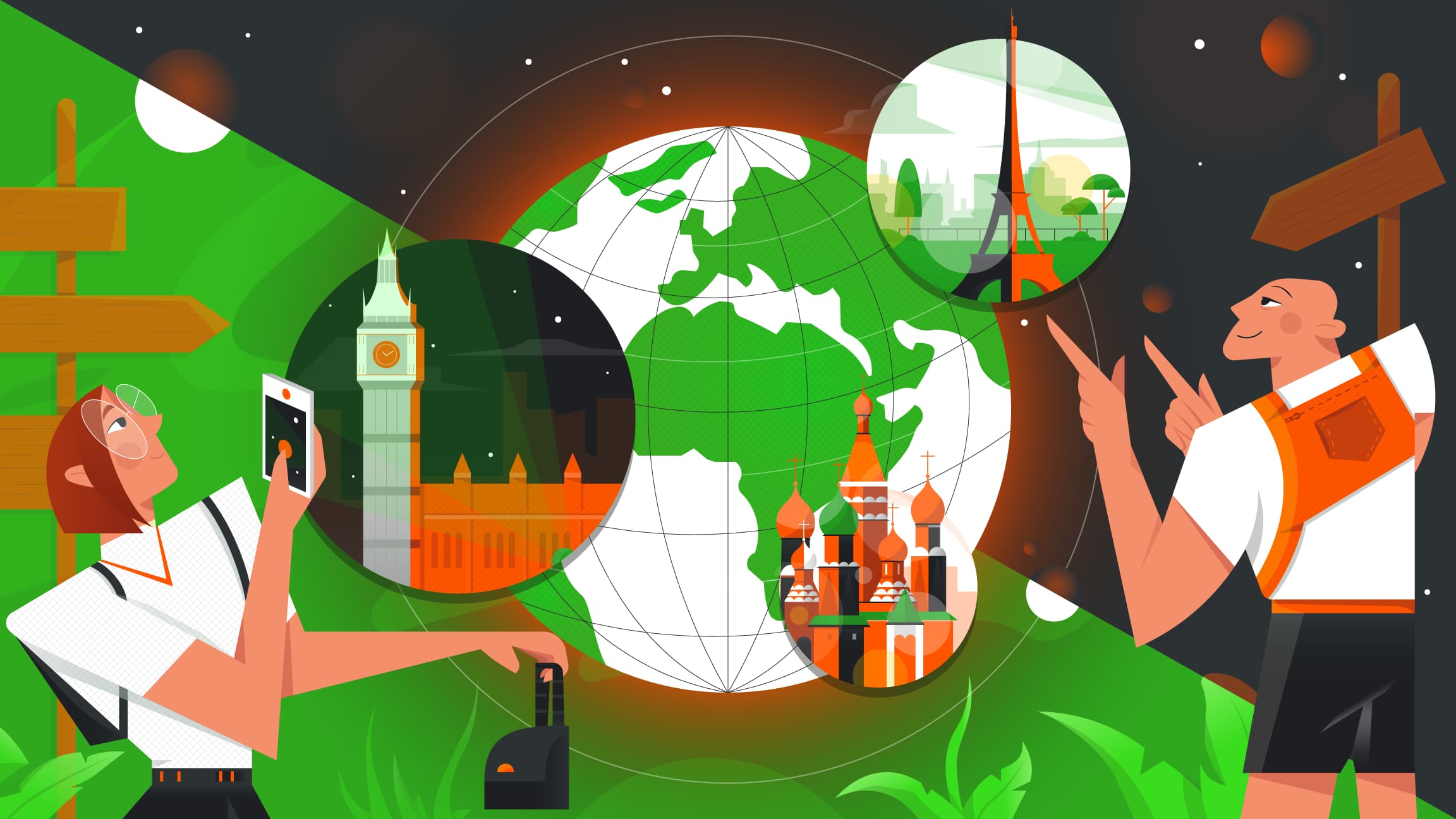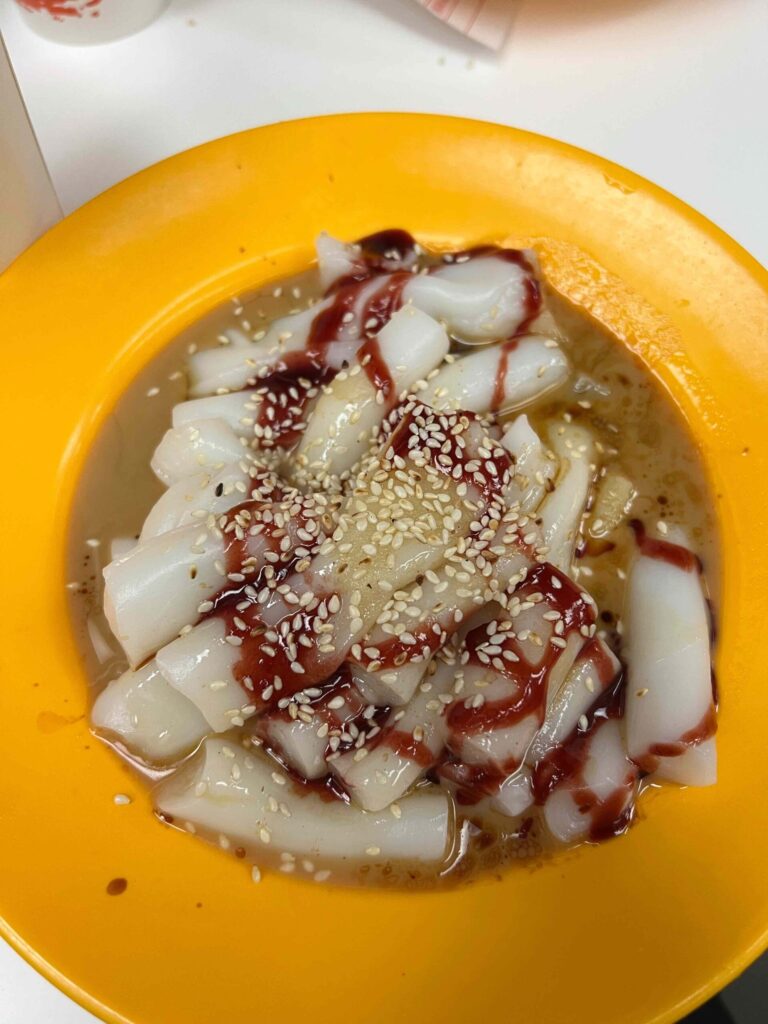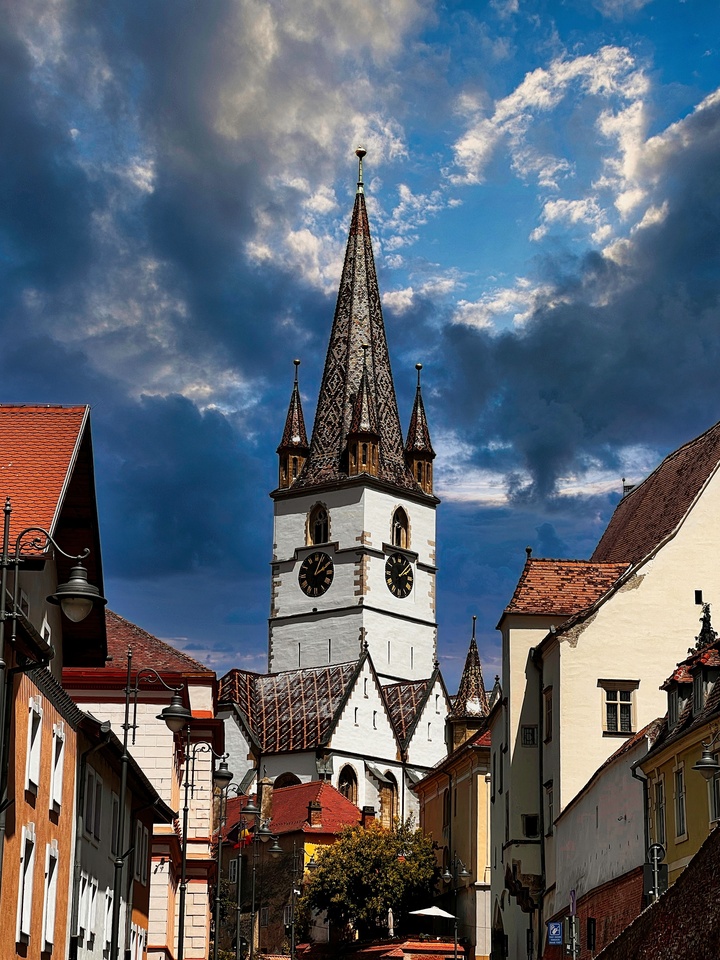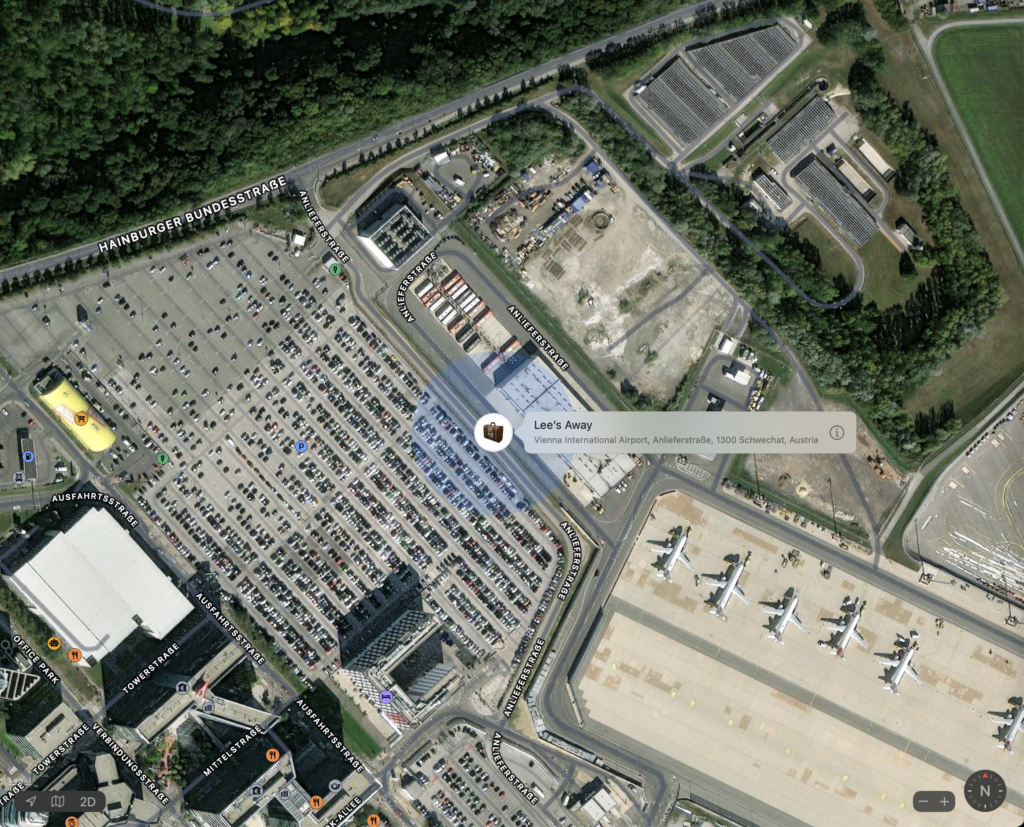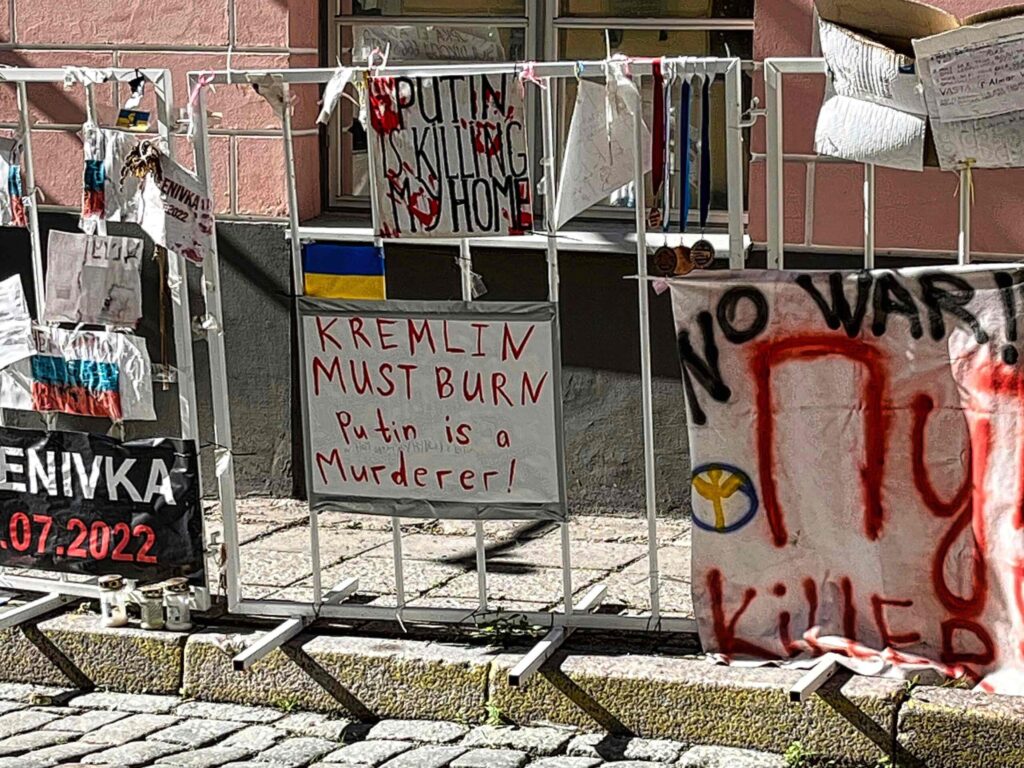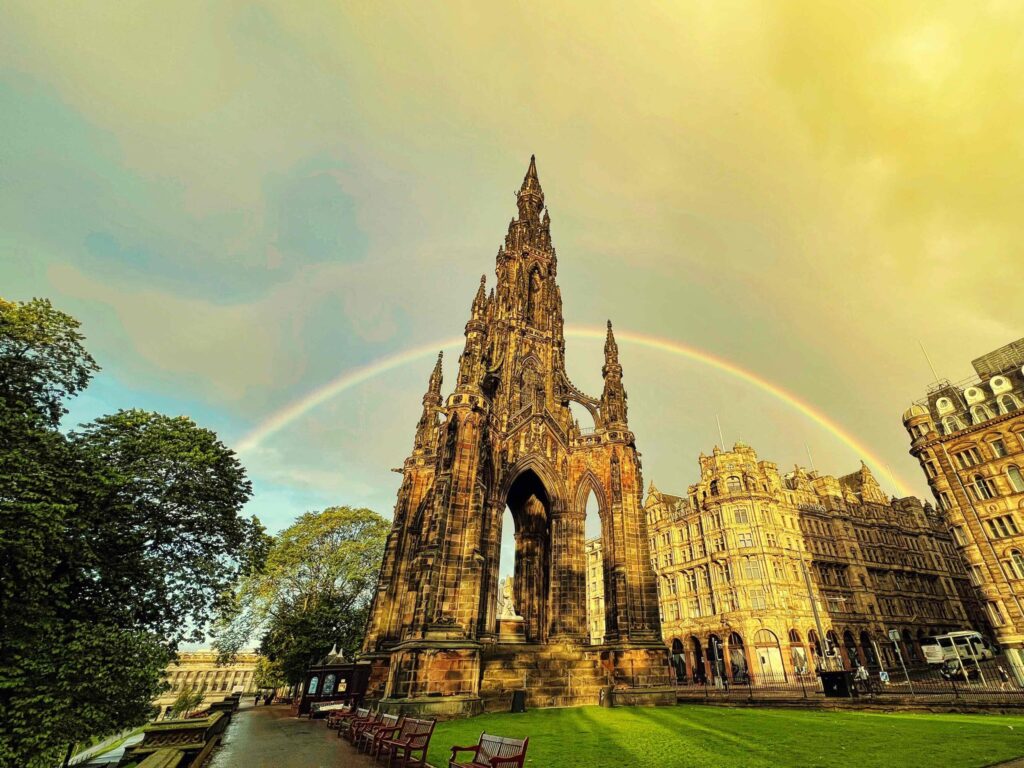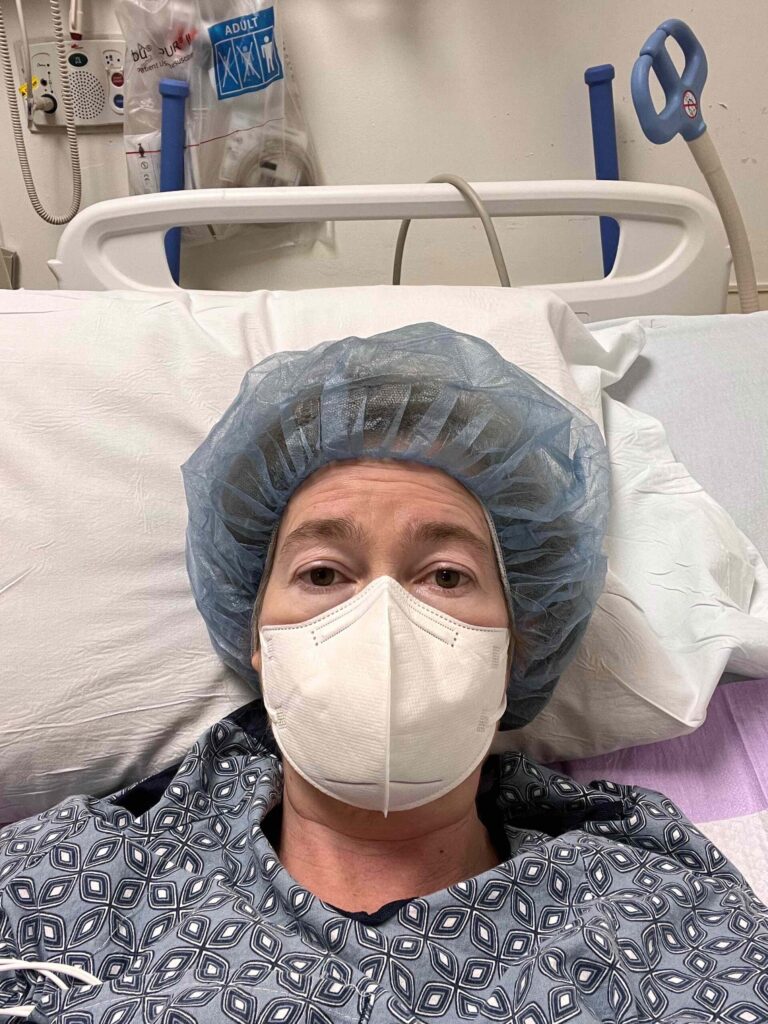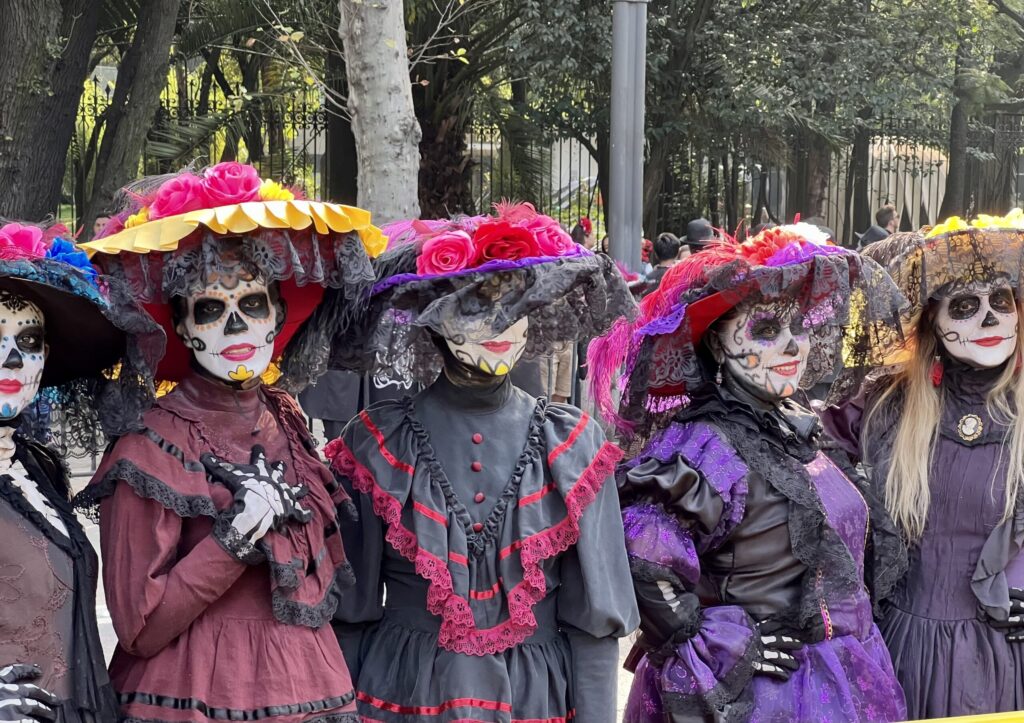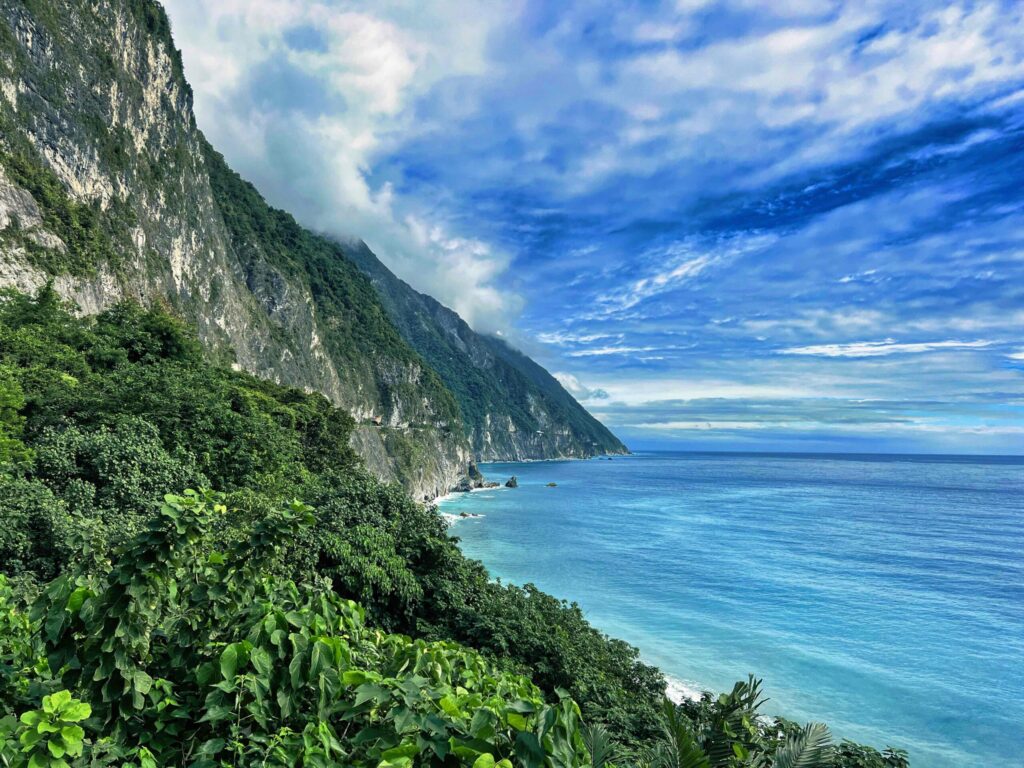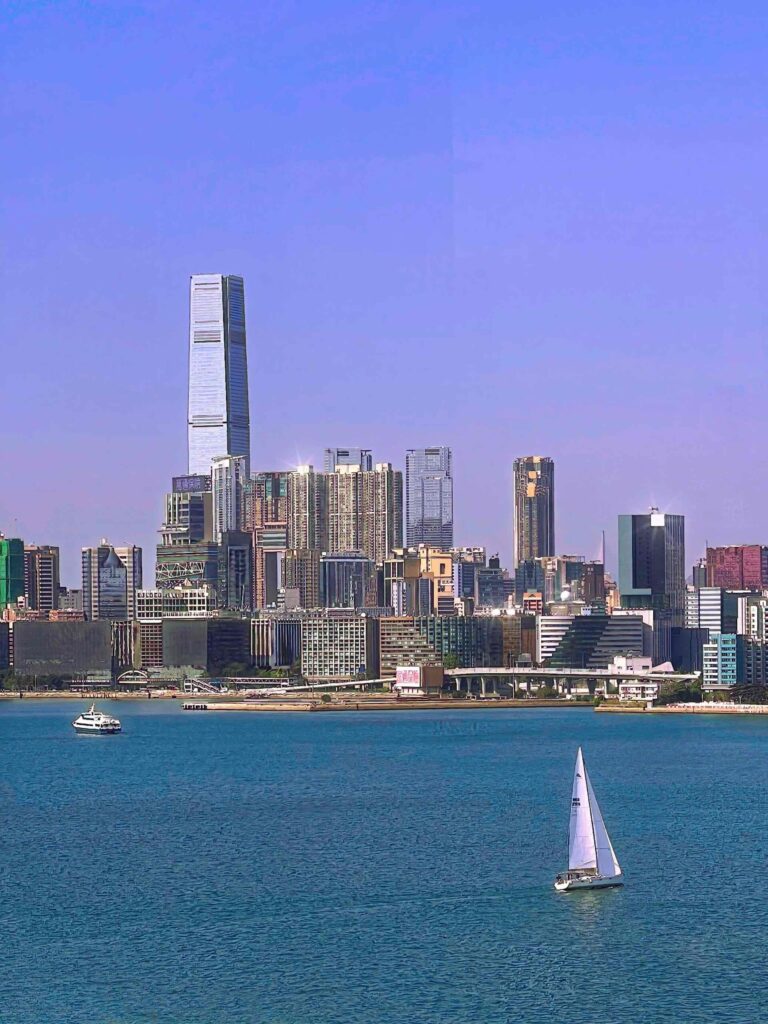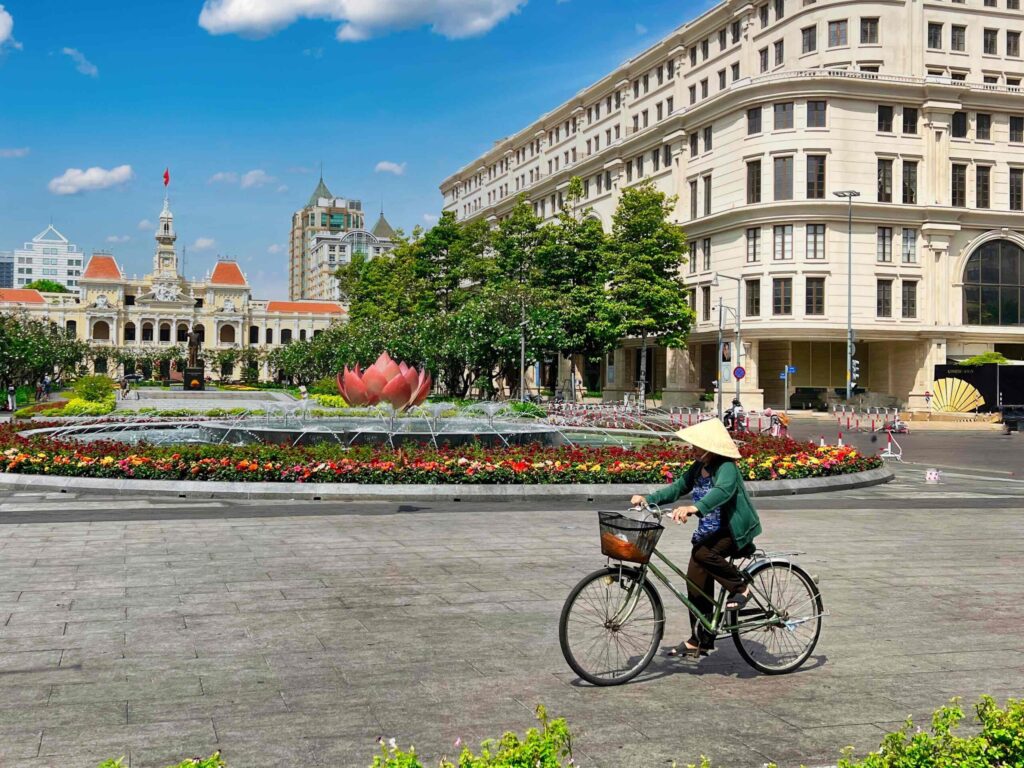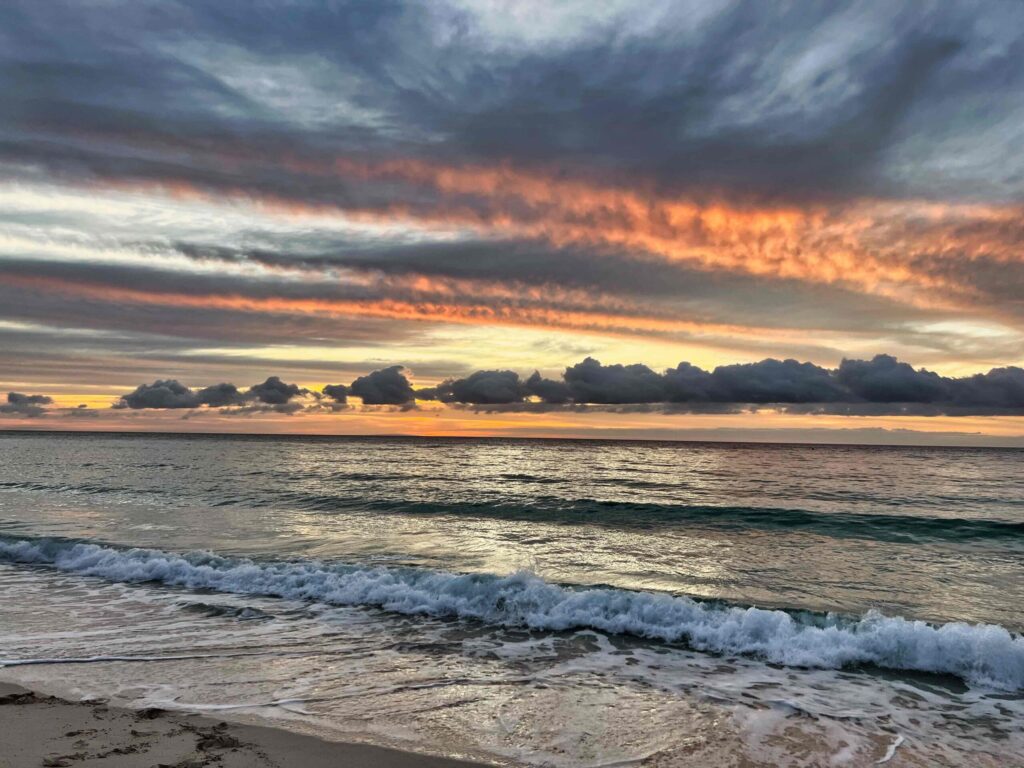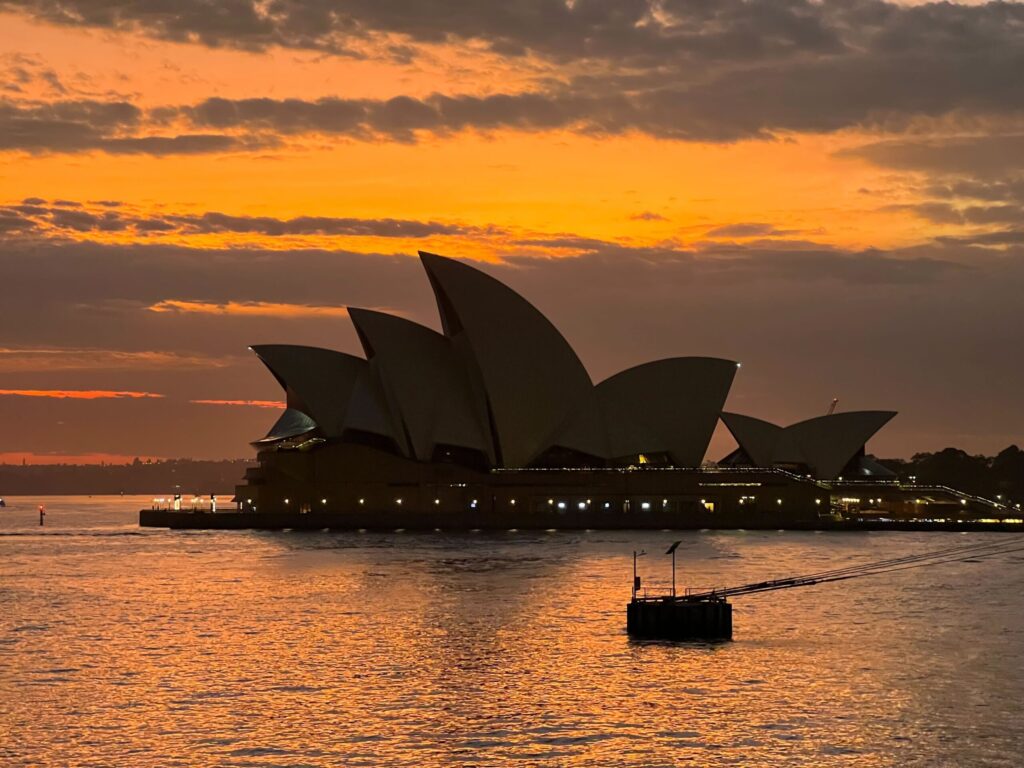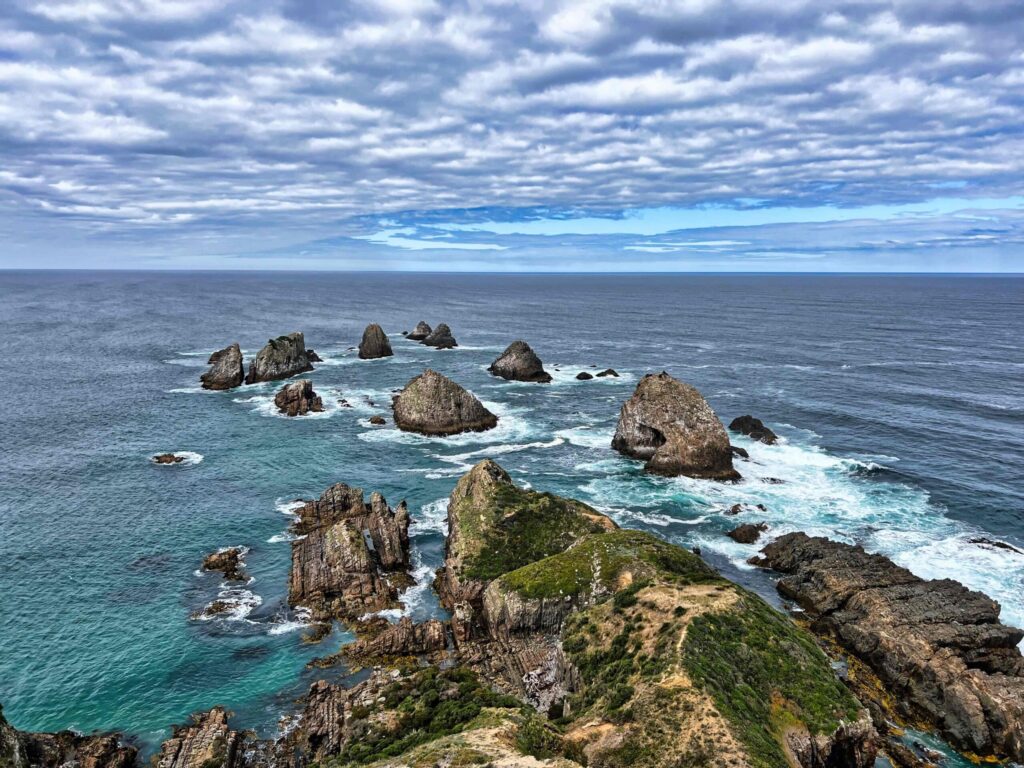This is my annual update on life as a digital nomad lawyer and travel with my wife Lisa. If you would like more frequent updates specifically about our travels, the places we stay, and our day-to-day life on the move, subscribe to the Your Law Firm podcast, and to Lisa’s newsletter.
10 Years as a Digital Nomad Lawyer
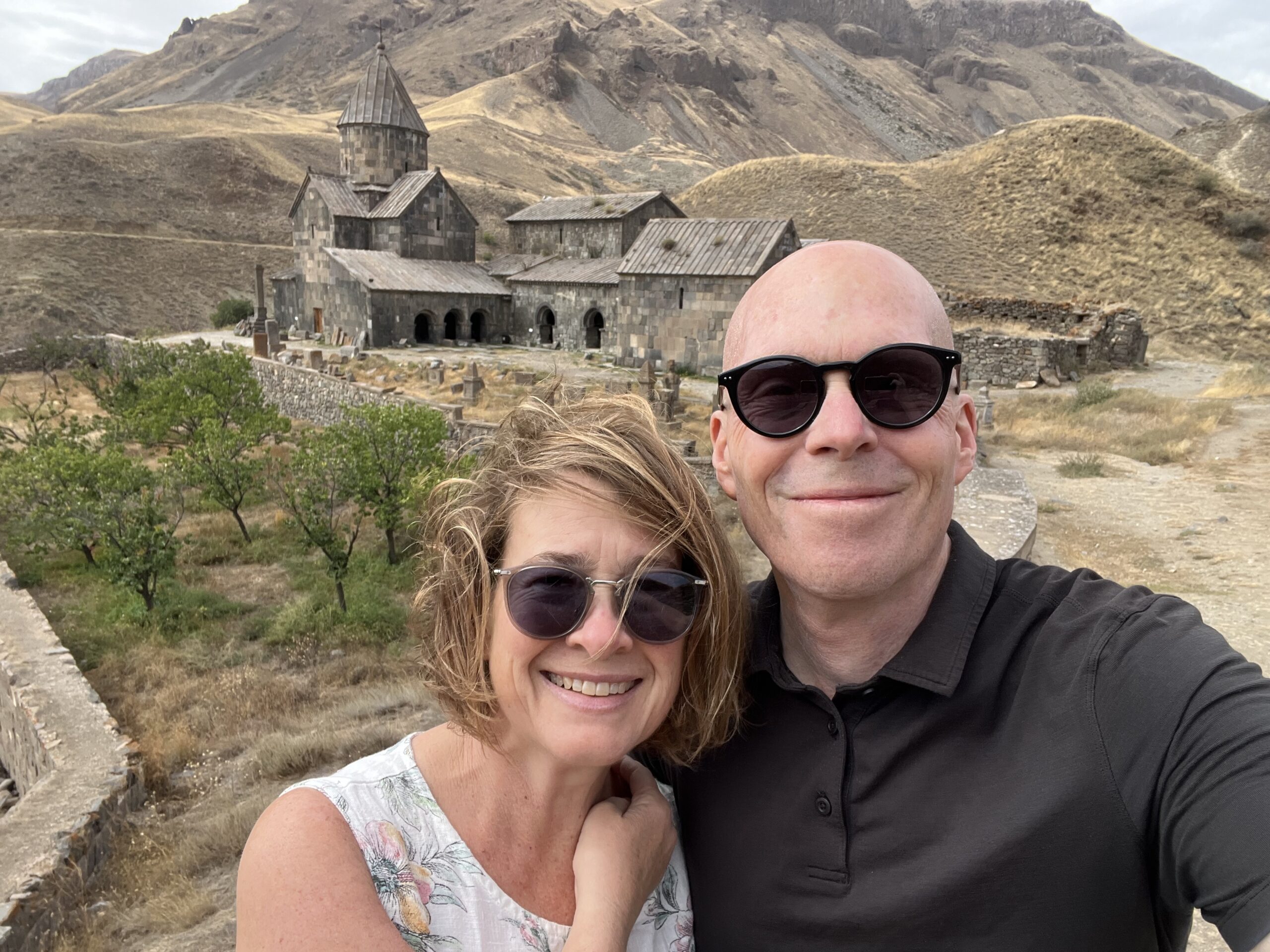
This life didn’t start with a plan.
We didn’t sit down ten years ago and map out a decade of movement. There was no whiteboard strategy. No long-range forecast.
It began with a moment—an inspiration—and a decision to see what would happen if we just … kept going.
What happened was ten years. Of motion. Of change. Of learning to live in uncertainty and call it home.
Ten years in, we’re still making it up as we go. And honestly? That’s half the appeal.
We’ve now spent 3,650 nights in hotels in more than 120 countries.
Some of those nights were unforgettable. Others blur into hallway carpets and buffet breakfasts. But they all add up to something: a way of seeing the world that’s no longer tied to borders, routines, or the idea of ‘going back.’
This isn’t a travel guide. It’s not a bucket list or a best-of.
It’s a look back at the rhythms, the returns, the places that shaped us—and the patterns that have only revealed themselves over time.
How We Choose Places
This question never goes away:
How do we decide where to go next?
I know that you’re used to me telling you that everything should be turned into a system. And after ten years, you’d think we’d have a system for picking destinations.
We don’t. Not really.
There’s a method, sure—but it’s more instinct than algorithm. Part emotion. Part practicality. Part mood-of-the-moment.
You might assume we just go back to our favorite places. But it’s actually the reverse—our favorite places are the ones we keep going back to.
This pattern has become clear over time.
Thailand leads with 435 days. Then Italy (170), the UK (169), Japan (154), Vietnam (131), South Korea (129), and France (106). Iceland (99) and Bonaire (98) are nearly tied. Turkey follows with 85.
It’s not a ranked list. It’s what happens when you let the road guide you. You go back, and go back again, and then you realize the place has imprinted itself on your soul. And you return yet again.
There’s no single thread. It’s life, timing, and a little bit of magic.
[ While I have you here, I wanted to remind you that you can get the latest articles delivered to your inbox a week before they go up on the web. Just one email per week. Sign up here. ]
Why These Places Keep Calling Us Back
Every place on that list is there for a reason.
Thailand is a hub because our kids (sometimes one, sometimes both) live there. Japan drew us in early during COVID—great healthcare, high trust, and a vibe we loved.
South Korea became another refuge. We spent over 100 days there during the pandemic because they handled it better than most countries. As COVID dragged on, Iceland and Bonaire offered sanity and stillness when we needed both. We moved less. Stayed longer. Let the storm pass.
Italy? That one’s just magnetic. It’s rarely part of any greater plan, until it is. Again and again. It’s effortless to love and impossible to resist.
The UK is pure practicality. We hit our Schengen limit—90 days in any rolling 180—and jump to Scotland or England. Easiest move on the board. Never feels like a compromise.
France is always a pleasure. And Turkey? Turkey’s the wildcard. The food, the people, the terrain—it checks every box. And it’s huge. We’ll never be done.
Planning vs. Reality
We do plan. A lot, actually.
But sometimes, we miss the mark about what it is we think we’re going to want at a given moment.
We’ll book a city to scratch a culture itch—or a nature-heavy trip, assuming we’ll be craving quiet. Then the mood shifts. The need morphs. And suddenly, we’ve misread the moment.
And the places? They rarely match the vision in our heads. You think you know what you’re walking into—but the ground always shifts a little once you land. That gap between expectation and reality is half the fun.
No destination is ever a waste. Even the mismatches offer something unexpected.
This lifestyle doesn’t reward an insistence on predictability. You plan, sure—but then you surrender. Because novelty finds you, whether you chase it or not.
We toss around ideas all year. From articles, podcasts, conversations in hotel bars or a half-memory from the back seat of a taxi five years ago.
Eventually, something clicks.
Sometimes it’s curiosity. Sometimes it’s obsession. Sometimes it’s both.
Lisa’s always had a thing for Paris. I chase what’s new. That tension—that blend of comfort and discovery—is what moves us.
Something clicks—that’s how the rhythm works, that’s how we know where to go.
The Big Picture
Europe? We’ve visited almost every country. Lisa’s love of history keeps us circling back. Add easy transit and open borders, and I’m along for the ride.
[ I'm glad you're enjoying the Friday File. I share my best marketing and practice management advice exclusively with my email subscribers every Friday. Join now. ]
Same with South and Central America. We’ve covered most of it.
And the Middle East? Lisa again. She fell in love with the people and the food. Iraq was her idea. I might’ve pitched it eventually, but she beat me to it. Great call. It was a fantastic trip.
Asia’s been a major focus—especially the eastern and southeastern parts.
But we haven’t seen everything we want to see.
The gap? Central Asia. A few still on the list. We’ll get there.
The big blind spot? The South Pacific.
It’s not that we’re uninterested. It’s that the logistics are brutal—long flights, weird routings, unpredictable infrastructure. The timing hasn’t worked. It will.
Africa’s still unfolding. We’ve been to 15 countries. It’s powerful. Complicated. Surprisingly expensive. Sometimes overwhelming. Sometimes heartbreaking. We’ve shifted plans at the last minute—more than once—because something easier called.
We’ll be back. Just not always right away.
Where We Went
We track our year from one wedding anniversary to the next—June 23rd. That’s when all this started.
Ten years ago, on our 25th anniversary, we left for what we thought might be a short trip.
We never went back.
This year? A mix, as always.
Some stops were booked months ahead. Others fell into place at the last minute. A few ambushed us entirely.
This lifestyle doesn’t lend itself to themes, color-coded categories, or tidy conclusions.
We move based on what opens up. What calls to us. What forces our hand.
And yet—when we look back, the pattern always appears.
There’s a rhythm to the motion. A logic that only shows up in hindsight. It’s a blend of practicality, emotion, curiosity—and that familiar ‘this just feels right’ feeling.
So here’s where the year took us. What stood out. And what stayed with us once we’d packed up and left, again.
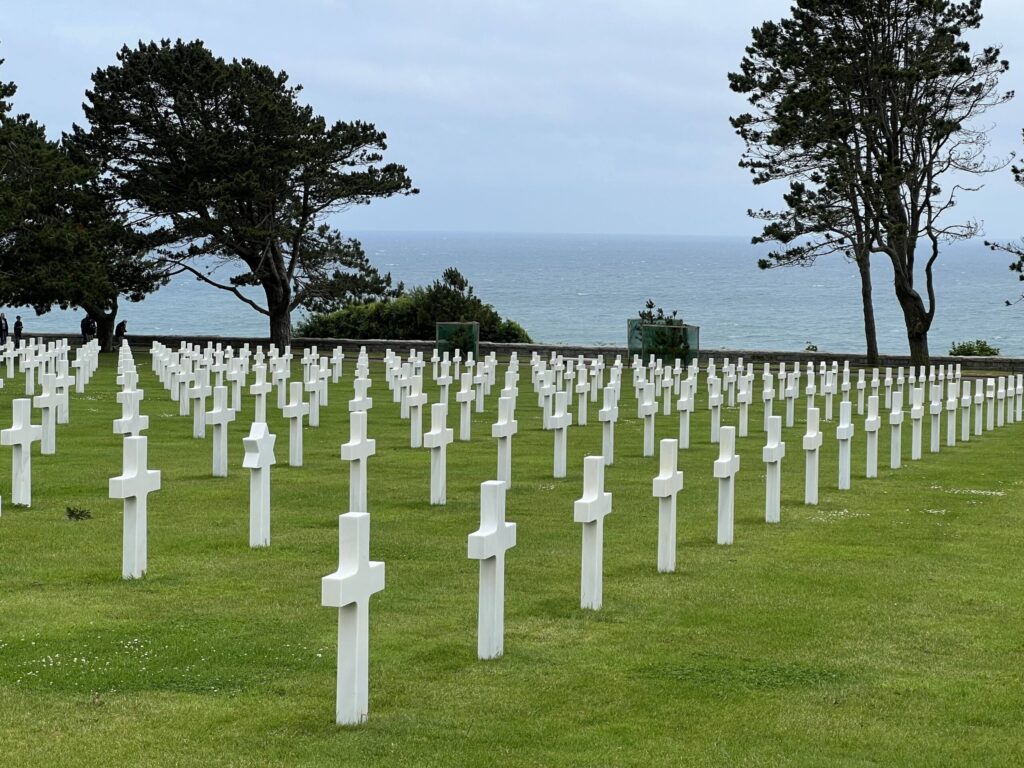
[ Ready to put these ideas into practice? I have a 10 day email course called Rosen's Rules that will help you take action starting right now. It's completely free, and this time in 2 weeks, you'll be a lot closer to having the practice you deserve. Sign up here. ]
France
When I wrapped up last year’s post, we were in Dinan—a beautiful town in Brittany that closed our travel year on a perfect note. We spent our days wandering along the river, loading up on pastries, and exploring the neighboring towns. Normandy was just a drive away, and the whole month felt peaceful and grounded.
This year started in motion.
We passed through Paris for a single night—just long enough to hunt for cold-weather clothes. Not easy in June, but we were heading to the Faroe Islands, and most of what we owned was designed for heat, not wind chill.
Paris had just enough left on the shelves to save us from bankrupting ourselves on Faroese fleece.
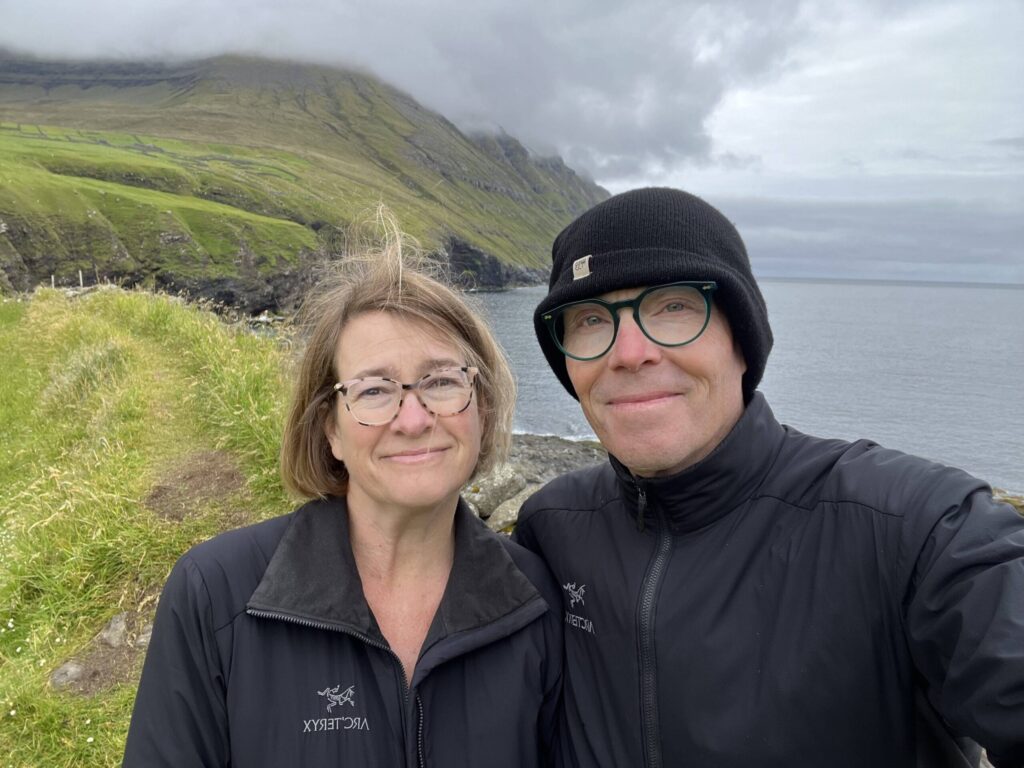
Faroe Islands
From French pastries and sunshine to misty cliffs and 50-degree mornings—we made a hard pivot.
The Faroe Islands checked two boxes at once.
First: the weather. Lisa likes it cool. It was summer, but not the sweaty, sunburned kind. Think chilly, breezy, misty mornings, and cliffs draped in fog. Second: visas.
When you’re living on the road full-time, visas shape your life. The Schengen Zone gives Americans 90 days in any rolling 180\. That limit resets gradually—and it’s always looming.
The Faroe Islands aren’t in Schengen. So after France, they gave us a kind of legal breathing room. A loophole with cliffs.
And beyond the red tape? Magic.
The landscape was cinematic. The air was cold and clean. And Lisa was in heaven—Tour de France on TV, tea in hand, shouting at cyclists she refers to by nickname.
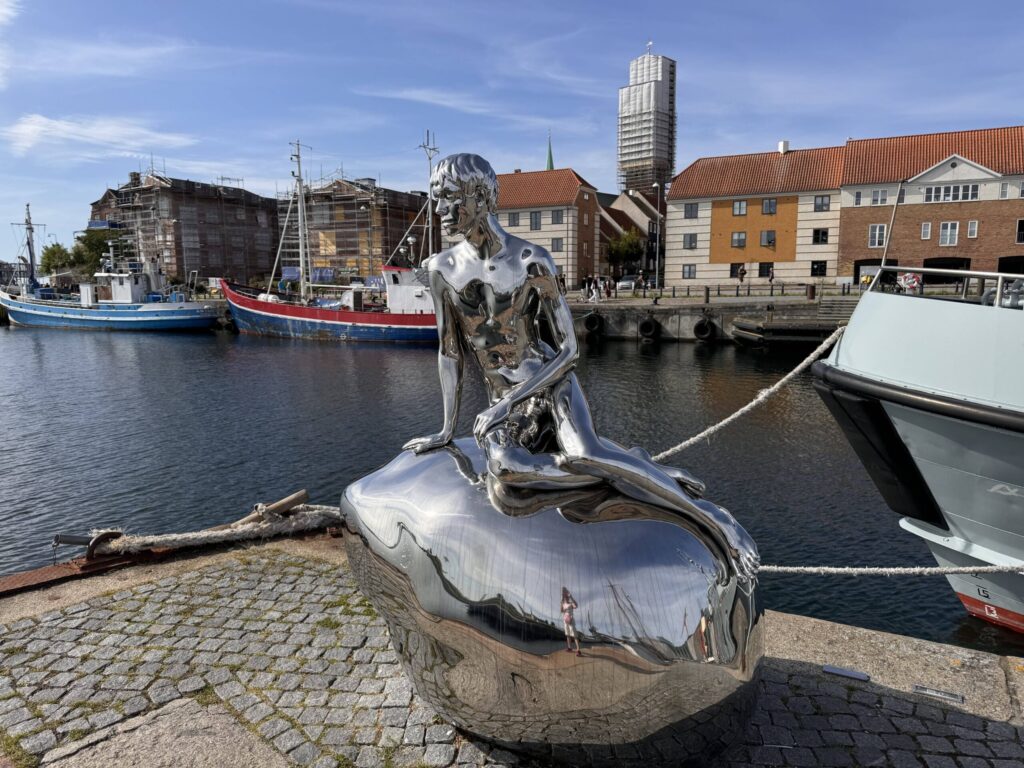
Copenhagen, Denmark
Culture shock isn’t just about language or customs. Sometimes, it’s population density.
We went from a Faroese village of 5,000 to what felt like 5,000 people just in our terminal at the Copenhagen airport. The contrast was immediate—and loud.
We’d technically been to Denmark before. A layover once. A cruise stop another time. My standout memories? A perfect Danish danish and paying $7 for a Coke.
Both memories held up.
Prices have only increased. But so has the quality of the pastries. We skipped the Coke this time and doubled down on danishes. And on the last day, we stumbled into a pizza place that served one of the best pies we’ve ever had. No exaggeration. We’re already planning a return visit—mostly for another round of that pizza.
Copenhagen itself is beautiful. Survey after survey says it’s home to some of the happiest people on Earth. I’m not sure if I could read that in their faces—but I can confirm they all look incredibly fit.
I’ve never seen that many bicycles in one place. Bike lanes come with pedestrian crosswalks just to give people a shot at crossing the street. Maybe it’s how they burn off the danishes (and pizza). Or maybe this is just what a functional city looks like when you fund it properly.
It’s impressive. And expensive. Very expensive.

Raleigh
From cardamom-laced bliss and bicycle utopia, we landed hard in reality: Raleigh, home of the annual diagnostic decathlon.
Our stop in Raleigh is always short—and always intense.
We fly in, pick up two rental cars (one for each of us), and speed off in opposite directions. Between us, we usually have a dozen or more doctor and dentist appointments—check-ups, labs, follow-ups, more labs. It’s a full-time job just keeping track of the medical calendar. Add in tests and imaging and procedures, and it starts to feel more like a week-long diagnostic retreat than a relaxing visit home.
But it’s not just medical madness. There’s a long list of people to see—friends, family, folks we’ve known forever. It’s the kind of list you can’t—and don’t want to—skip. So we schedule lunches, coffees, dinners, and often end up hosting people at the hotel bar just to squeeze it all in.
We book a hotel right off the highway so we can zip from appointment to appointment, restaurant to restaurant. And yes, there’s always a restaurant list. I make my usual pilgrimage to Greek Fiesta, Lisa heads to Boulted Bread, and I do my best to eat enough barbecue to last me another year.
It’s a sprint. A chaotic, exhausting, nonstop race of errands, obligations, and indulgence. Every year, we tell ourselves to plan something quiet and restorative right after Raleigh. And every year, we forget. We jump into the next adventure, already tired.
Still, there’s nothing like returning to a place that feels like home—even if it runs you ragged. It’s a reunion with people and places we love. And for a couple of weeks, it’s good to be back. Just don’t expect us to relax while we’re there.

Baku, Azerbaijan
From the US, we flew to the Istanbul airport for a very quick layover where we overdid it on baklava and tea. I don’t think we’ve ever passed through that airport without overdoing it, but it’s totally worth all of the calories, fat, and sugar. The baklava in Turkey is the best in the world and the Turkish Air lounge does a shockingly good job of cranking out delicious Turkish food and desserts.
But the lounge visit was quick, and 30 minutes later we rushed to our gate and off to Baku, where we landed just a couple of hours later.
We hadn’t planned it, but we arrived just as the city was gearing up for its annual Formula 1 race.
After seeing Monaco’s post-race deconstruction last year, it was fascinating to watch Baku getting built up for its own. Same scale. Same drama. Just in reverse.
The race takes over the center of the city—roads closed, fences up, bleachers rising out of nowhere. Even if you’re not a fan, the energy is contagious. You can feel the spectacle taking shape.
We didn’t stick around long enough to see the main event, but it was enough to remind us why the F1 calendar might make a pretty decent travel blueprint. Every stop is somewhere worth seeing, and billionaires clearly know how to pick a backdrop.
We only spent a few days in Baku, but it left an impression. The city feels ambitious. Confident. On the edge of something. We left curious—and just a little bit tempted to come back for race day another year.
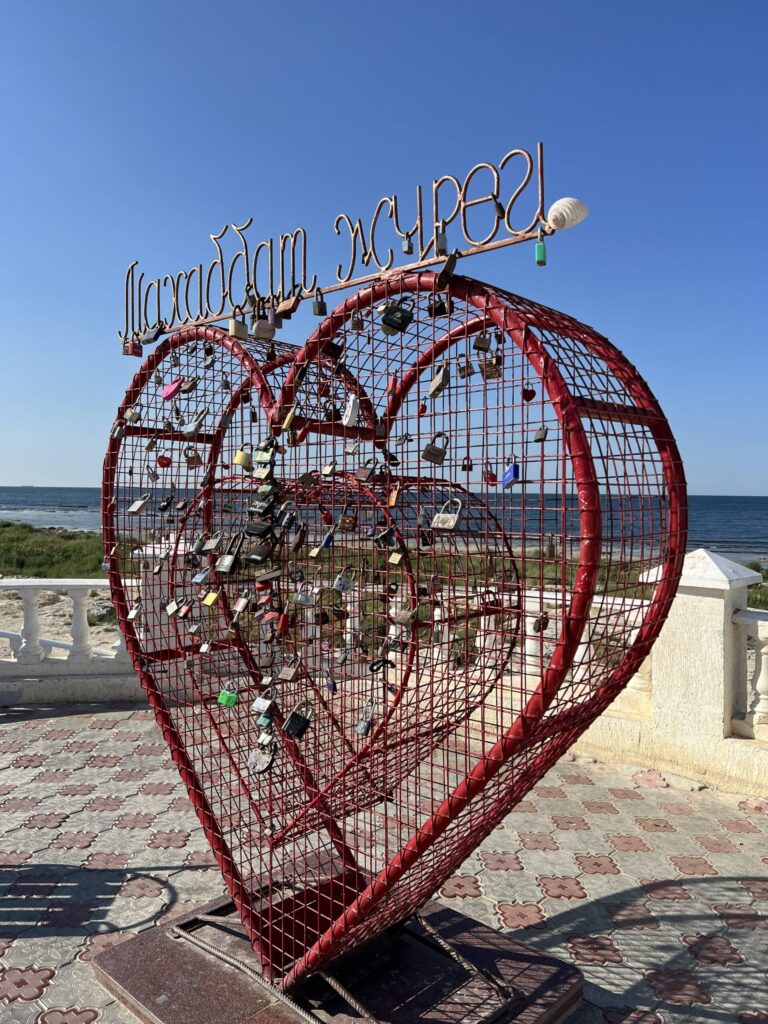
Aktau, Kazakhstan
Because of the conflict between Azerbaijan and Armenia, there are no direct flights between the two countries. So we looked at a map, checked a few schedules, and picked a work-around.
Aktau.
It was supposed to be a quick plane change. But we’ve been down this road before. A short layover becomes a few nights. A new dot on the map becomes a story.
Aktau is a small city perched on the Caspian Sea, mostly visited by locals looking for a getaway. It has a handful of waterfront hotels, busy restaurants, and more waterparks than you’d expect for a place where nobody really swims in the sea.
It’s not flashy, but it’s easy.
And while we met plenty of people who spoke English, we also encountered a common reality: speaking a language is not the same as understanding it. Conversations sometimes felt one-sided—lots of nodding, lots of smiles—but little back-and-forth. It’s a reminder that comprehension is its own skill, and accents plus vocabulary can widen the gap fast.
Still, the welcome was warm. The food was good. And the layover-turned-stopover gave us a glimpse of a place we had never expected to see.
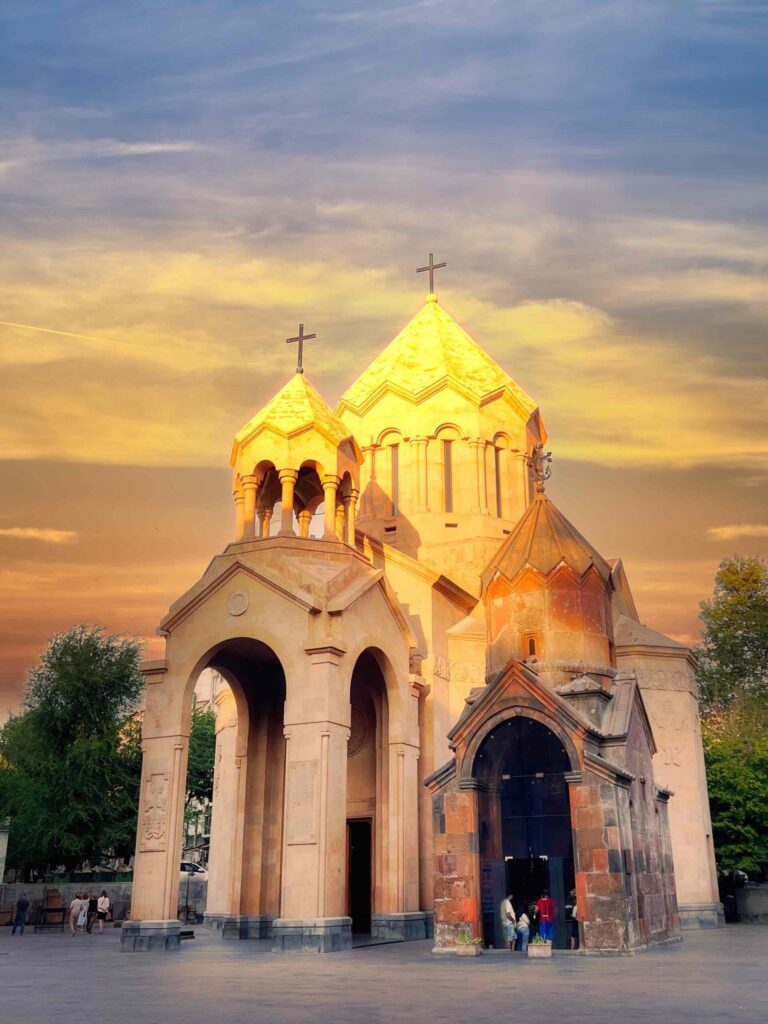
Armenia
We arrived in Armenia after our quick stop in Kazakhstan and a few days in Azerbaijan. The contrast was immediate—and heavy. Armenia had lost a big chunk of territory to Azerbaijan just a few months earlier. And even as outsiders, we could feel the weight of that loss hanging in the air.
It’s a small country. Tightly knit. Deeply proud. But its geopolitical reality is sobering—surrounded by stronger neighbors, short on allies, and fighting to hold its ground.
That kind of vulnerability creates a particular kind of unity.
You feel it in the streets. There’s tension, yes—but also quiet strength. Dignity. A shared sense of holding the line.
We stayed a full month. A week on the road, then four weeks in Yerevan. And with that kind of time, you stop being a tourist. You start to see how people live. What they value. How they carry themselves.
We went to the ballet. To the symphony. Multiple times. The old Soviet-era concert hall is grand and worn, but the talent inside? Flawless. These weren’t just performances. They were declarations. The arts here aren’t a luxury—they’re a cultural identity, passed down, held tight, and delivered with heart.
Then came Independence Day.
Thousands packed the main square. Full orchestra. Huge choir. Traditional songs. Cultural performances. The kind of night where a nation pours itself into a single space.
No tourists with selfie sticks. No curated Instagram moments.
Just people. Proud. Stoic. Present.
And then—just when the emotion was already at full tilt—the orchestra launched into Queen’s “We Are the Champions.”
Not traditional. Not expected. Absolutely perfect.
People cried. We cried. The crowd cracked open. You could feel something release—something too big for words, too fragile for analysis.
It was one of the most powerful moments we’ve ever experienced.
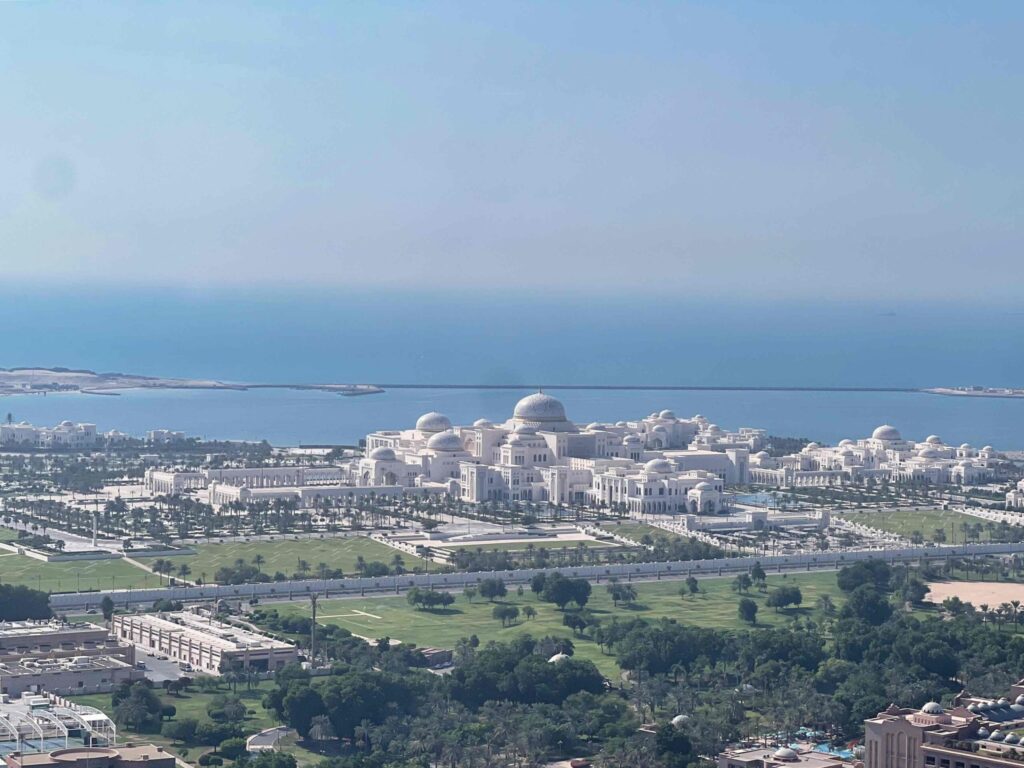
Abu Dhabi, UAE
We’ve spent a lot of time in Dubai over the years, so it’s easy to assume Abu Dhabi—just an hour down the road—would feel similar.
It doesn’t. Not even close.
Dubai is commerce in city form. Glass towers, designer malls, man-made islands. It’s engineered to attract money, and that money covers everything in glitz. One day last year we walked past ten ultra-luxury cars parked in a row—each easily worth over a million dollars.
Dubai doesn’t whisper wealth. It shouts.
Abu Dhabi plays a different game.
It’s the capital. It’s home to the national government, the royal family—and unlike Dubai, it actually has oil. That one detail changes everything.
The vibe is more reserved. More rooted. You still get luxury, but it’s paired with tradition. Gravitas instead of gloss. Museums, mosques, monuments.
The Sheikh Zayed Grand Mosque is one of the most monumental religious sites we’ve ever seen. The cultural institutions feel purposeful—designed to preserve, not just impress.
For us, it was a perfect stopover on the way to Asia.
Just a few days to slow down in a place that knows exactly what it is—without needing to bling it up to prove itself.
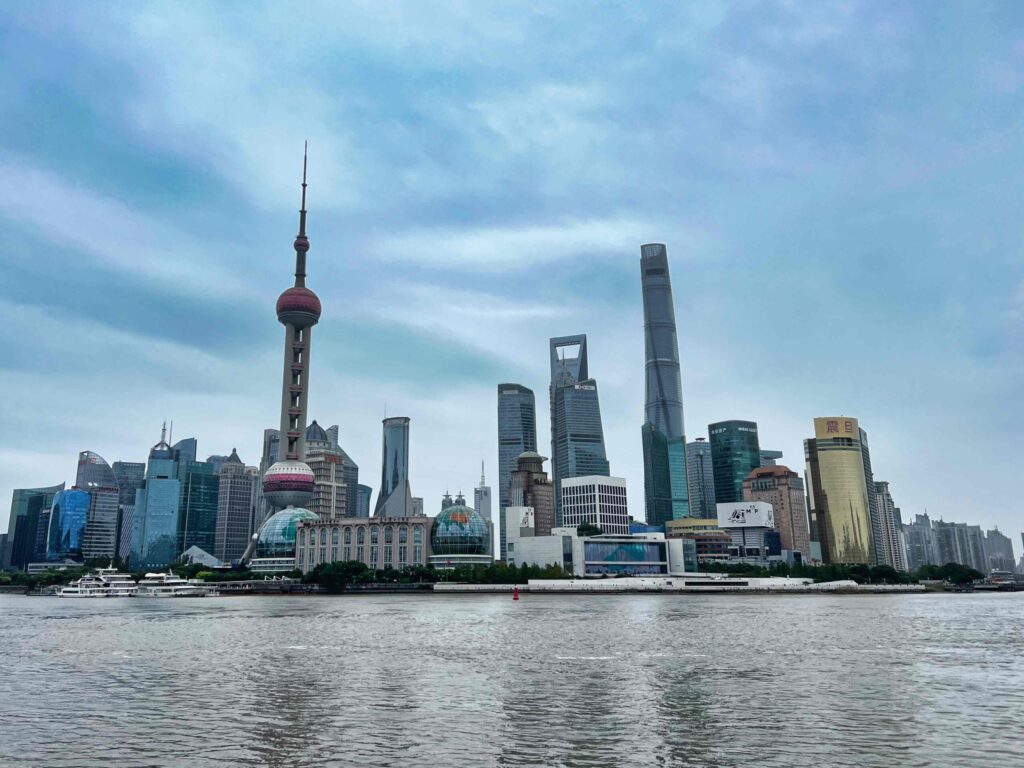
Shanghai, China
Shanghai is hard to resist.
There’s so much to see, so much to eat—and the prices are surprisingly low. People say visiting China is like stepping ten years into the future at prices from ten years in the past.
They’re not wrong.
It’s not dirt cheap—this isn’t Vietnam—but compared to the US or Europe, it’s a bargain. Beautiful restaurants, gleaming malls, slick shops—and everything costs less than you’d expect.
Public transport? Spotless. Efficient. Practically free.
A subway ride in Shanghai costs just a few cents. The stations feel brand new. Compare that to London or Amsterdam, where a single ride can cost as much as a latte.
And it’s not just infrastructure—it’s energy. The city feels like it’s investing in its people. Middle-class life, at least in Shanghai, is being actively supported.
You can feel the momentum. In the food courts. On the metro platforms. In the shine of everyday life.
Things change fast in China.
Last time we were there—Beijing, eight years ago—the traffic noise was oppressive. Engines revving, horns honking, and exhaust fumes filling your lungs.
Now, everything’s electric. The traffic is silent. No roar, no rumble—just quiet movement.
It sneaks up on you. Until one day, you realize you’re living in the future.
Of course, Shanghai gets extra attention and resources because it’s such a visible global city. But we’ve been to a lot of well-funded places around the world, and Shanghai holds its own.
It’s not just livable. It’s exciting.
And then, a short flight away, you find yourself stepping backward—way backward.
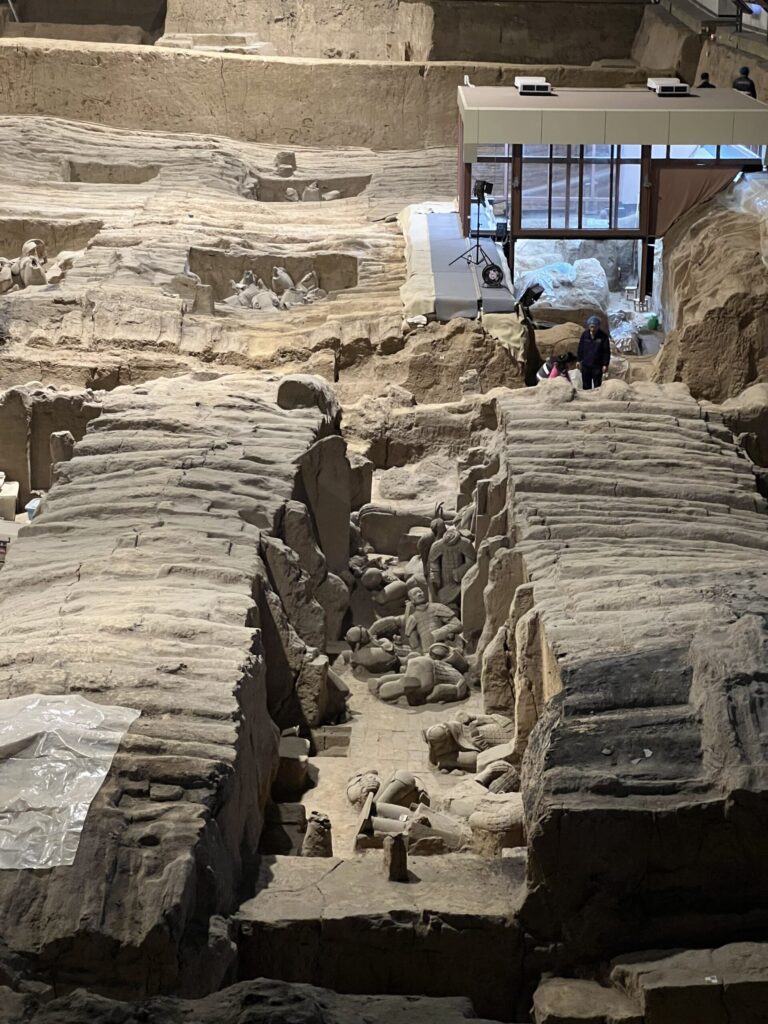
Xi’an, China
We’ve seen a lot of archaeological sites over the years. Egypt comes to mind.
But most of them feel … dormant. You wander through ancient ruins with faded info boards and a few sunburned volunteers on summer break. The digs are underfunded. The work is paused, waiting for a new grant.
You don’t feel energy. You feel dust.
And then you go to Xi’an.
The Terracotta Warriors aren’t just a museum piece. They’re alive—with motion, science, purpose. Researchers in full gear are on the floor, actively unearthing, restoring, cataloging.
High-tech equipment is everywhere. It doesn’t feel like a tourist site—it feels like a lab.
I hadn’t felt that kind of buzz since visiting the Kennedy Space Center as a kid. You can sense science unfolding in real time.
This isn’t just preservation. It’s resurrection.
And Xi’an itself? Not what I expected.
I imagined a sleepy town with a famous dig nearby.
It’s a modern city of nine million. Fast-moving. Alive. Surprising.
And very much awake.
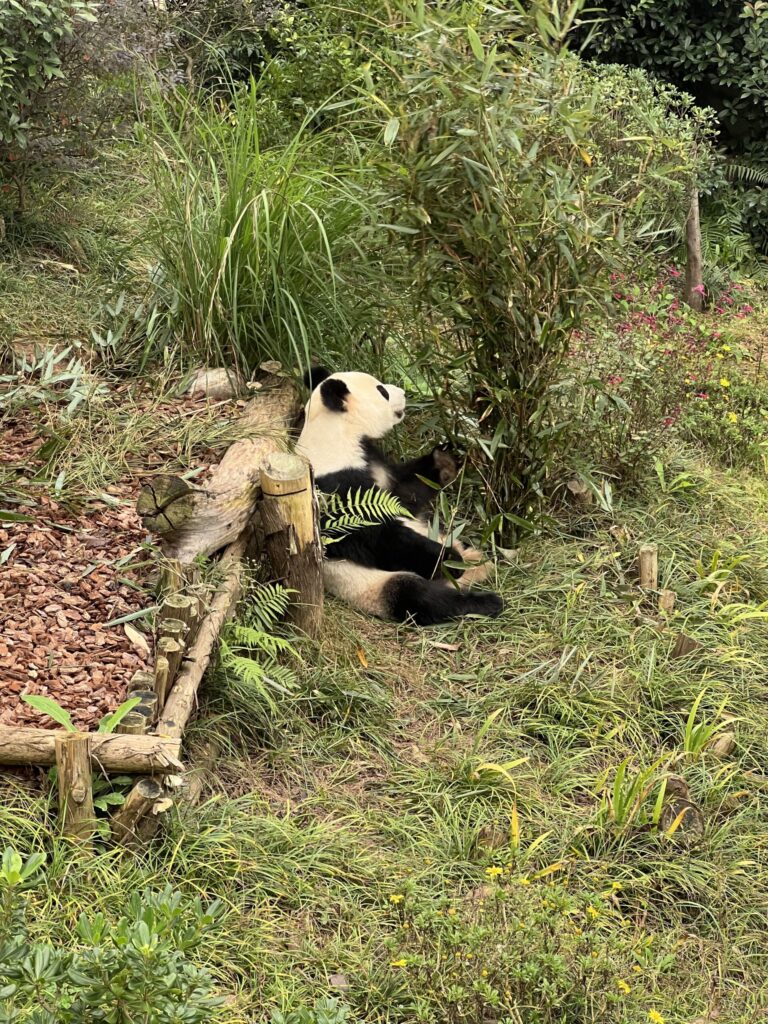
Chengdu
From archaeology in overdrive to animals and appetites—Chengdu promised a different kind of adventure. Not all of it went down easy.
The city is famous for two things: pandas and Sichuan food. We ticked both boxes, though not exactly as planned.
We started with the pandas.
We got to the sanctuary early—before they released the animals into the viewing areas. We waited for about an hour, until finally the pandas ambled out, ate a little bamboo, then promptly went back to sleep.
They’re beautiful. Enormous. Cuddly-looking.
And shockingly lazy.
I was glad we had morning tickets, as I suspect the afternoon crowd mostly sees nap time.
Then came the food tour. A deep dive into Chengdu’s street food scene. Big flavors, bold spices … and a big mistake.
By morning, I had food poisoning.
When you live in hotels full-time, you don’t get to ‘recover at home.’ You deal with it where you are. A couple of days of misery, followed by a few more of nibbling cautiously at bland food.
And spicy Sichuan cuisine? Not ideal for a healing gut.
To make matters worse, Chengdu sits in a valley. As winter approached, the cool air trapped pollution. Some days felt more gray than breathable.
The food, the fog, the pandas, the bug—it all left Chengdu feeling incomplete.
We’ll need to go back.
Oh, and my mother joined us during that stretch, too.
Just to keep things interesting.
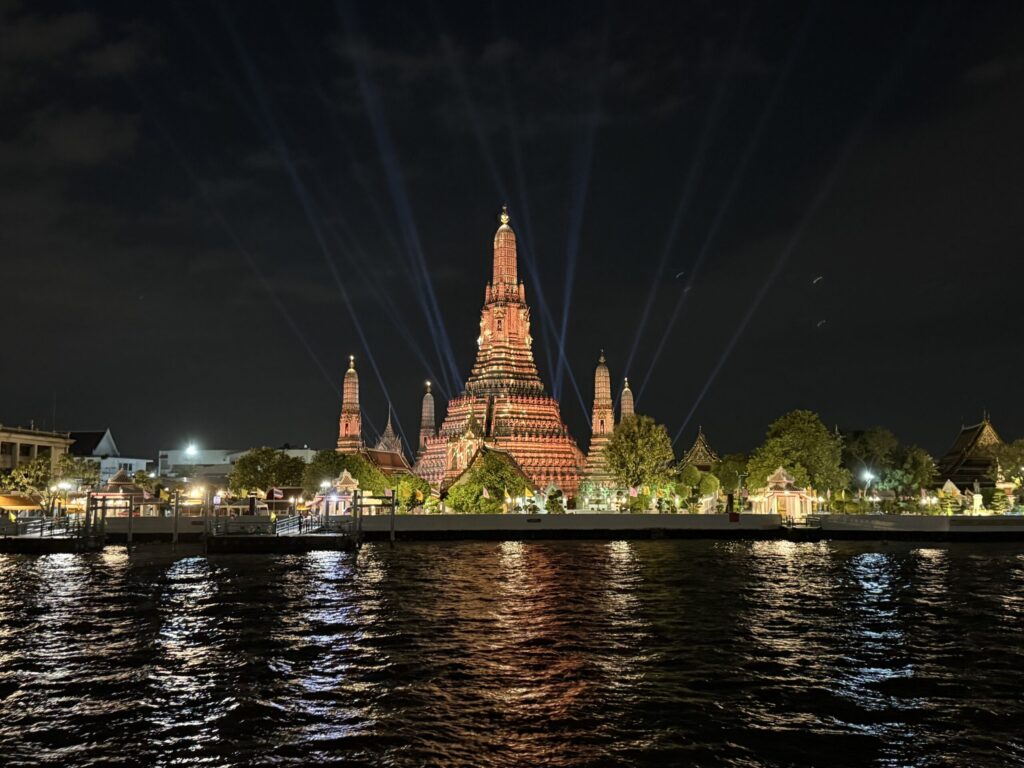
Bangkok, Thailand
We had planned to spend ten days in Bangkok over Thanksgiving. Just a quick visit with the kids before heading to the beach.
But then a medical issue popped up—and the beach got bumped.
We ended up staying for 30 days. And honestly? There are worse places to be when things go sideways.
There’s a lot of buzz about medical tourism—flying overseas to save money on care. That’s not what we’re doing.
We’re not flying to Bangkok for treatment. We just happen to live on the road. And eventually, like anyone, one of us needs to see a doctor.
Bangkok keeps turning out to be the right place for that.
Lisa and I each have our go-to hospitals. In much of the world, ‘private care’ doesn’t mean a solo doctor in an office. It means clinics inside hospitals. The doctors move between them. Appointments are available quickly. Walk-ins are common. No six-month waits.
And the care?
Excellent.
Sure, Bangkok might trail the US a little on the most cutting-edge tech. But what they lack in gadgets, they make up for in time, attention, and compassion.
It’s a good trade.
Our lifestyle gives us options. If we ever need something highly specialized, we can fly wherever that’s available. But for the routine stuff—physicals, blood tests, even colonoscopies—Bangkok more than delivers.
Accessible. Affordable. Efficient.
So instead of a beach vacation, we got a longer visit with the kids, a round of doctor visits, and a reminder:
Sometimes the best plans are the ones you didn’t make.
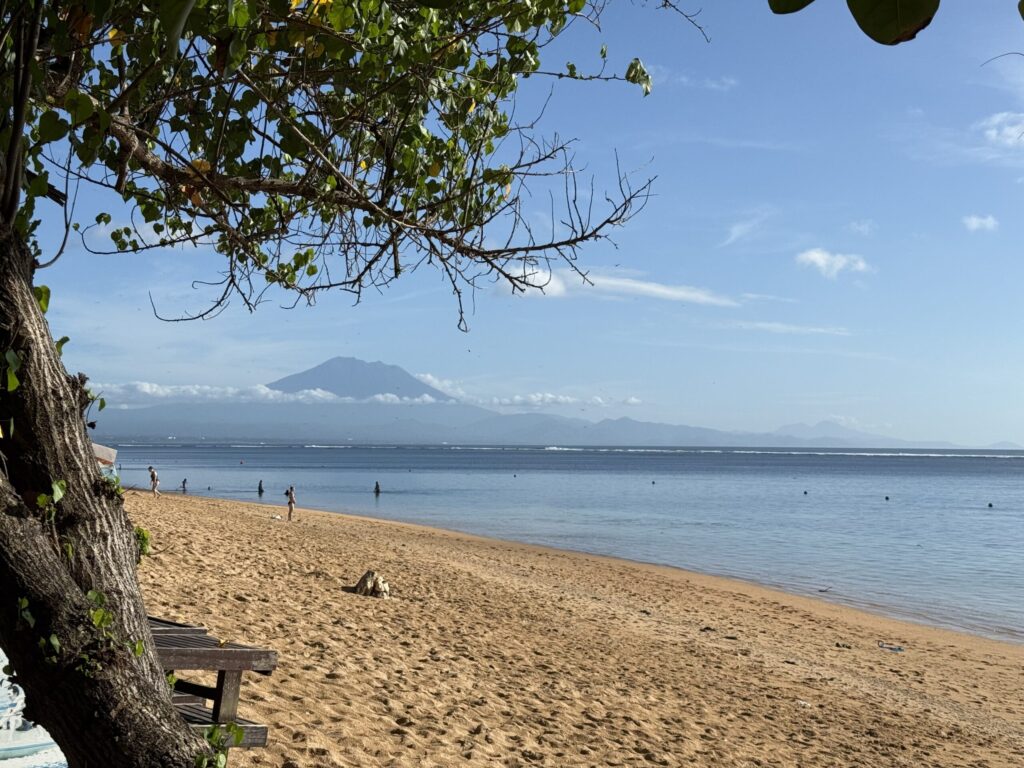
Bali, Indonesia
Bali has a problem. It’s paradise—but overcrowded.
The island doesn’t make overtourism headlines like Venice or Dubrovnik, but it should. Places like Ubud and the southern beaches are packed. Shoulder-to-shoulder, bumper-to-bumper packed.
We’ve seen this before. Amalfi Coast, for one. Gorgeous towns, impossible traffic, bottlenecked streets. You spend all day elbowing through the crowd … and the most relaxing moment is when you finally leave.
Bali’s not that different—unless you plan it right.
We didn’t try to ‘do’ Bali. We picked a spot—Sanur Beach—and stayed put for two weeks. No temple tours. No waterfall hopping. Just stillness. Rest. Ocean.
One day, we broke our own rule. Took a cab across the island to meet friends for lunch. Big mistake. It took two hours each way—two taxis, endless traffic, and a whole lot of regret (but totally worth it to see our friends).
Bali has magic. It really does. It’s big enough to shape itself to your needs—peaceful or buzzy, spiritual or social.
But if you’re not careful, it’ll wear you out. The infrastructure is stretched thin. The island can feel more like a traffic jam than a retreat.
So yeah—go to Bali. Just don’t try to conquer it. Pick your place, settle in, and let the island come to you.
And next time? Maybe give the lesser-known spots a shot. The ones that haven’t been loved to death yet.
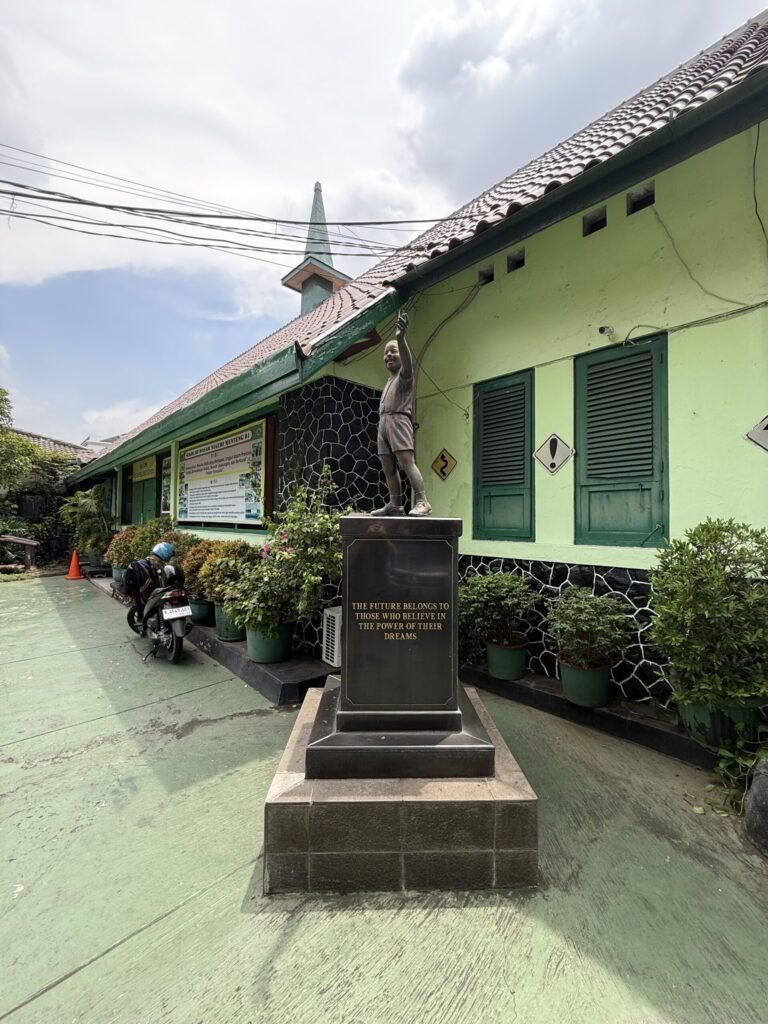
Jakarta, Indonesia
After the bottleneck that is Bali, Jakarta felt laid back.
It’s the capital of the fourth most populous country in the world—right behind India, China, and the US—yet most travelers skip it. That’s a mistake.
We’d heard the horror stories. The traffic. The chaos. So we planned ahead. Booked a suite at the Park Hyatt, dead center of the city. It was absurdly nice—like living in a luxury apartment with hotel service.
The location paid off. With a flexible schedule, we dodged the rush hours. Moved around easily. Explored without much hassle. And we noticed something strange: no crowds. No photo mobs. No lines. Just … life.
Jakarta doesn’t have a Colosseum or an Eiffel Tower. It has street scenes, workdays, schoolyards. You’re not being entertained—you’re being immersed.
The standout moment?
Barack Obama’s elementary school.
There’s a statue of third-grade Barack outside, and you can picture the kids streaming in, walking past this little monument to possibility. Imagine being a third-grader in Jakarta and seeing a statue of someone who once stood where you stand … and then became President of the United States.
That kind of story still resonates. Especially in a place where the leap from that schoolyard to the White House feels impossibly far.
Say what you want about America’s image abroad—but in that spot, with that statue? The dream is still alive.
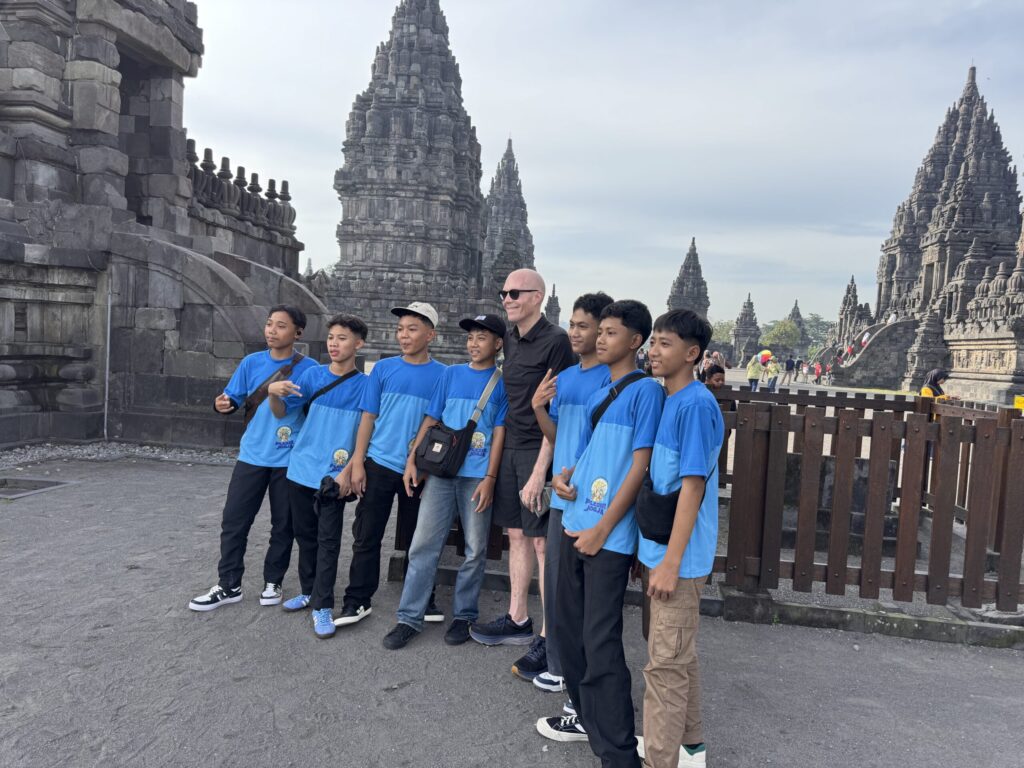
Yogyakarta, Indonesia
We spent ten days in Yogyakarta—mostly inside a Marriott attached to a mall.
Not exactly a bucket-list experience. But sometimes, that’s just how it goes.
The weather was sweltering. The days blurred together. We visited a few archaeological sites, including the world’s largest Buddhist temple. Impressive, yes—but hard to fully appreciate when you’re melting. Most days, we drifted between the breakfast buffet, the laundry room, and the food court in the mall.
Still, one moment cut through the haze.
At one of the temples, we were suddenly mobbed by school kids on field trips. Rural kids, mostly. Limited English, unlimited enthusiasm. “Where are you from?” was the go-to question, immediately followed by selfie requests—dozens, then hundreds.
Even the teachers joined in.
We smiled. We posed. We answered the same questions again and again. It was a full-on photo shoot.
It could’ve been exhausting. Honestly, it kind of was. But we’ve learned to show up for these moments. Because in a lot of places, especially far from the usual tourist paths, a little kindness goes a long way. A few minutes of good energy become a memory for someone else, and for us.
And that’s what stuck.
Not the temples. Not the heat. Not the mall.
Just a bunch of beaming kids, elbowing each other for selfies, delighted that two random strangers showed up and played along.
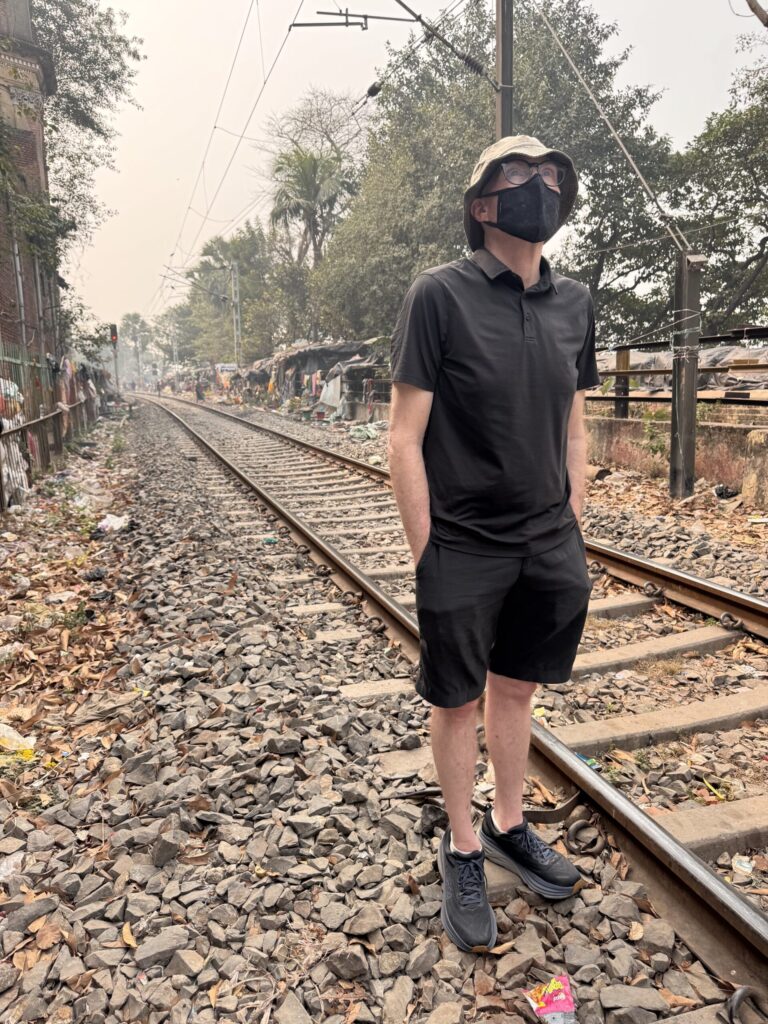
Kolkata, India
Our first trip to India, in 2017, was a shock.
The noise, the density, the rawness—we weren’t ready. I still remember the moment a man with no legs grabbed my ankles to beg as he slid across a train station floor.
It was too much.
Unfiltered suffering up close. I didn’t know what to do with it. I just wanted to leave.
But we didn’t. We stayed for two months.
And over time, something shifted. The chaos became color. The noise became music. The contradictions started making a kind of sense. By the end, we weren’t just surviving India—we were starting to understand it.
Three visits later, it still wears us out. But it also fires us up. We’ve built a toolkit of strategies for handling the hard parts, and with that comes access to something extraordinary. There is no place in the world like India.
Kolkata showed up on the itinerary this year as a transit point—an easy stop on the way to Bhutan. One night turned into five. And in that short time, we remembered why we keep coming back.
It’s not the landmarks. Aside from Mother Teresa’s legacy, the city doesn’t revolve around one big draw. It’s just … India. Unapologetic. Intense. Honest.
We rode ferries across the river. Wandered aimlessly through crowded markets. Took in the constant motion. Nothing was curated, nothing polished for tourists.
It was alive.
And when we left, we still weren’t done. India’s already penciled in for next year.
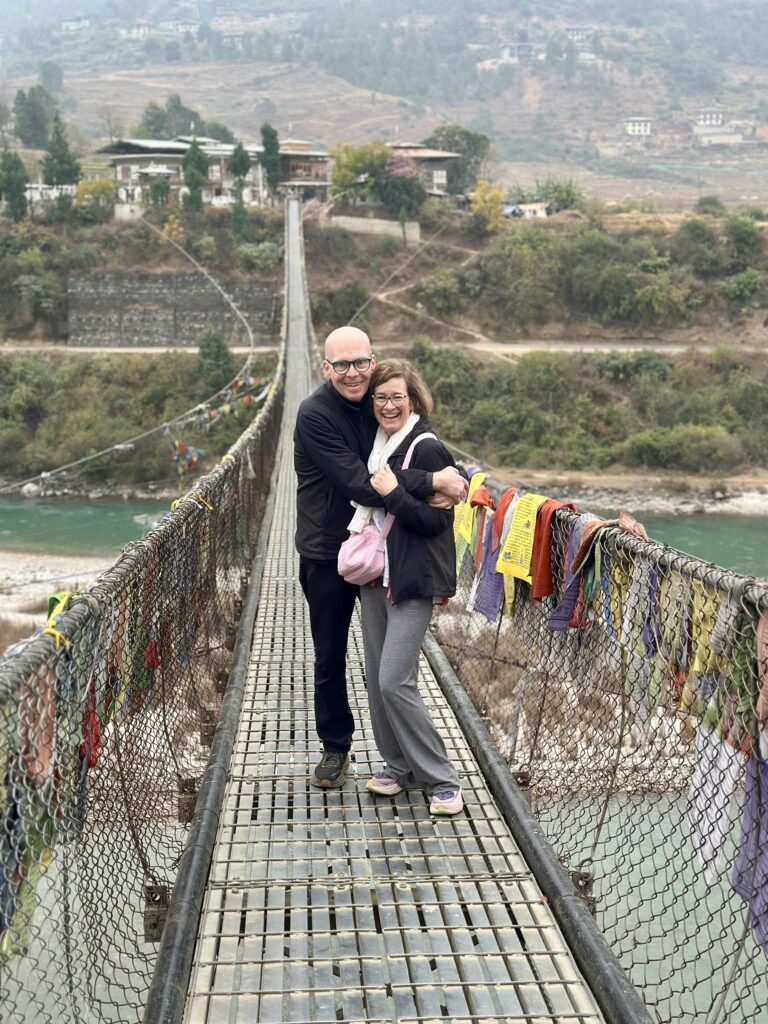
Bhutan
Everyone we talked to raved about Bhutan.
And to be clear—we get it. It’s beautiful. Peaceful. Clean. Thoughtfully run. But for us, it felt a little … quiet.
Bhutan is known for its National Happiness Index, and it’s easy to see that value in action. No traffic. No chaos. The hotels are consistent. The roads work. The food is safe. Everything runs smoothly.
And maybe that’s the thing.
Bhutan feels like South Asia—but filtered. It’s got the scenery of Nepal, a bit of India’s spiritual backbone, the mountains, the monasteries … but not the energy. Not the wildness. Not the edge.
For many travelers, that’s the point. The calm is the appeal. But we’ve spent time in India, Bangladesh, Nepal—places that shake you up, wear you out, and reward you with something unforgettable. Bhutan didn’t shake us. It tucked us in.
Part of that is by design.
Tourists are required to travel with a licensed guide. There’s a minimum spend per day. It’s structured, controlled, and curated—for good reasons. The government is trying to avoid overtourism and preserve culture. And in many ways, they’ve succeeded.
It’s an admirable model. It works. But it also means you’re always on a bit of a leash. Someone else is steering. And that’s not how we usually travel.
Bhutan is a kind, grounded place. We’re glad we went. We saw stunning landscapes, met thoughtful people, and caught a glimpse of a nation doing things differently.
But for us? It felt like a gentler remix of places we already knew.
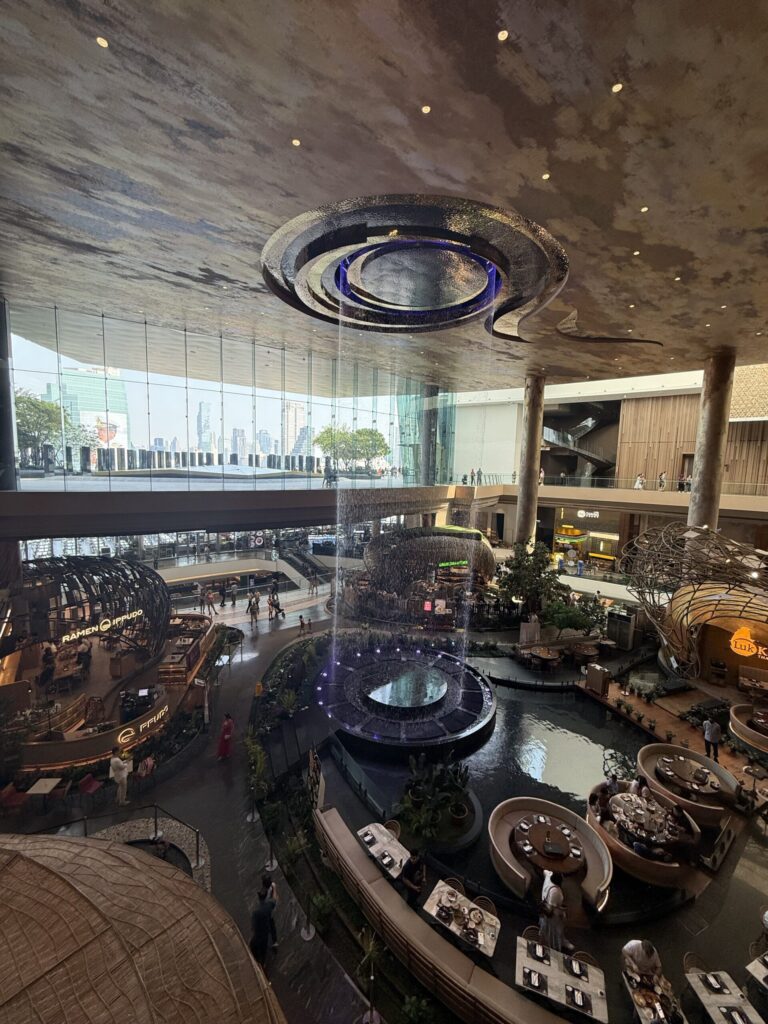
Bangkok (Again)
From a curated kingdom to the chaos we know best—we were back in Bangkok.
It was a short visit this time. That’s our pattern now. Both kids live there, so we swing through, say hi, and move along. No one wants their parents lingering too long.
This time, we brought a friend.
Stephanie flew in to join us—her first real trip to Asia. And that changed everything.
Bangkok is so familiar to us now that it barely registers as ‘foreign.’ We’ve got favorite restaurants, preferred clinics, shortcuts and side streets. It’s just … life.
But seeing it through Stephanie’s eyes? That reminded us of our first visit.
The noise. The traffic. The sheer density of humanity. It can be overwhelming. Especially if your baseline is Europe or the US. Nearly 60% of the world’s population lives in Asia. You really feel that number in places like Bangkok.
Watching Stephanie navigate the city brought us right back to year one. We remembered that early disorientation. The sensory overload. The feeling that you’re doing everything wrong and everyone knows it.
You forget that feeling—until you see it reflected in someone else.
It was a great visit. And a powerful reminder: travel doesn’t just take you places—it changes you, even if you don’t always see it happening.
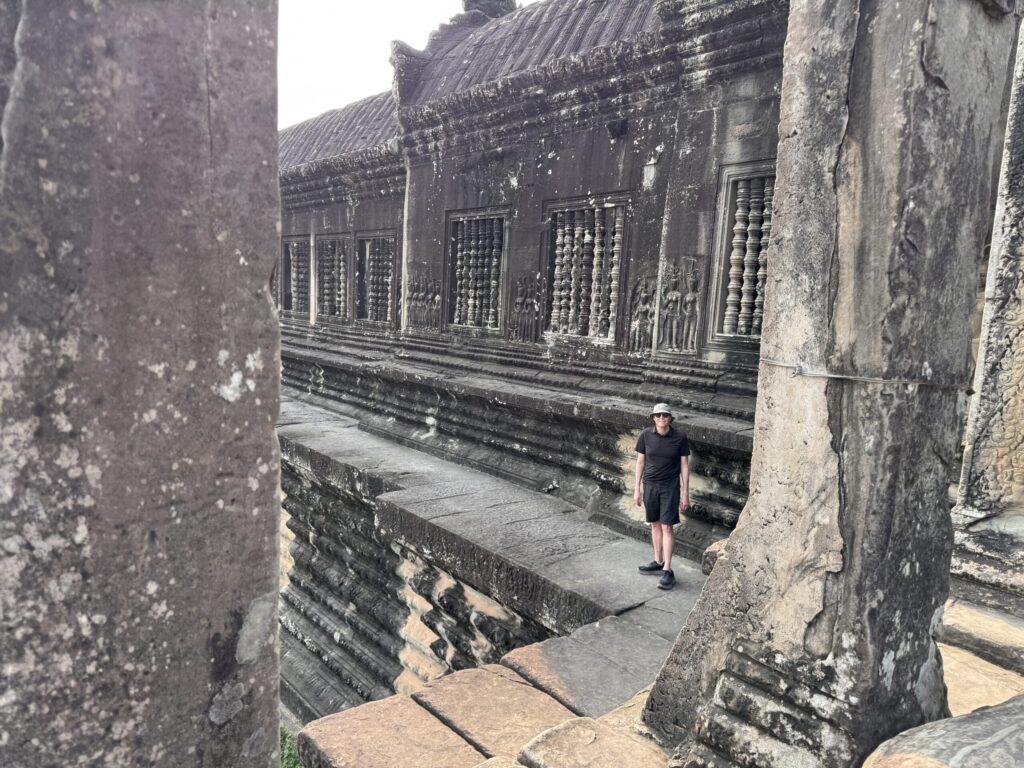
Siem Reap, Cambodia
Nine years ago, we met Bunthy.
Back then, he was a quiet driver with limited English and a deep eagerness to learn. You could feel it. He didn’t just want to get you from point A to point B—he wanted to understand, to grow, to build something.
This time, we hired him again.
The van was new—well, new by Cambodian standards. Twenty-one years old, spotless, wiped down at every stop. But it wasn’t the van that impressed us.
It was him.
His English had improved dramatically. His knowledge of the sites around Angkor was sharp and studied. He didn’t just drive—he guided. With context, with history, with heart. He’d transformed. You could tell it had taken effort. You could feel the work.
And the pride.
It’s easy to forget, from where we sit, how much access we’ve had. Education, mobility, language—all of it came easily. For people like Bunthy, everything has to be earned.
He’s doing well by local standards. But ‘well’ in Cambodia is still a grind. He carries that weight lightly, with humor and warmth, but it’s there. You can see it.
The part that hit me hardest?
We’re roughly the same age.
We could’ve been classmates. Our kids could’ve played soccer together. But geography had other plans. Our lives were shaped by a map neither of us drew.
That sticks with you.
He’s raising three kids now. One in college. One in high school. One just starting school. The youngest wasn’t even born when we first met him.
Watching his journey unfold—seeing who he’s become—that meant more to us than any temple.
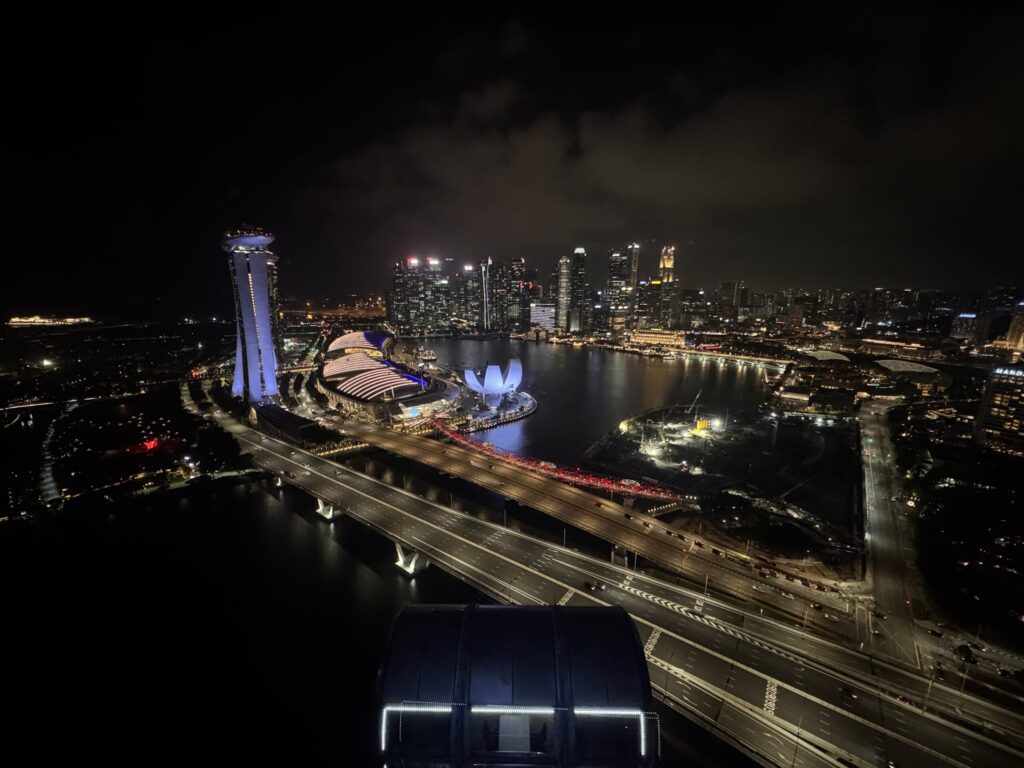
Singapore
We spent five days in Singapore.
Having already seen the major tourist sights on past visits, this time felt like a chance to experience the city differently—for me, at least.
Lisa’s friend was with us, so the two of them spent most of their time visiting landmarks, shopping, and zipping all over the city.
I was free to stay closer to our hotel, exploring the neighborhood on foot. No checklist. No rush. Just walking.
I wandered the side streets where daily life unfolds—laundry shops, $3 lunch stalls, bakeries buzzing with regulars, old men sitting quietly outside their buildings.
I didn’t talk to many people, but just watching life happen is my favorite kind of connection.
Being in Singapore and not feeling the pressure to race through a list of must-see sights felt like a gift.
Too often, we (ourselves included) start a trip with an ambitious itinerary. We try to see everything—and end up experiencing most of it at a shallow level.
But when that pressure lifts, you start to see the details. The small things.
How people parent at playgrounds. How customers interact with vendors. How bakeries operate differently from culture to culture.
It’s the kind of texture you miss when you’re rushing.
This time, Lisa and I had two completely different versions of the city. Both were real. Both were valuable.
But for me, taking the time to just observe was a quiet reminder of how much richness lives in the ordinary.
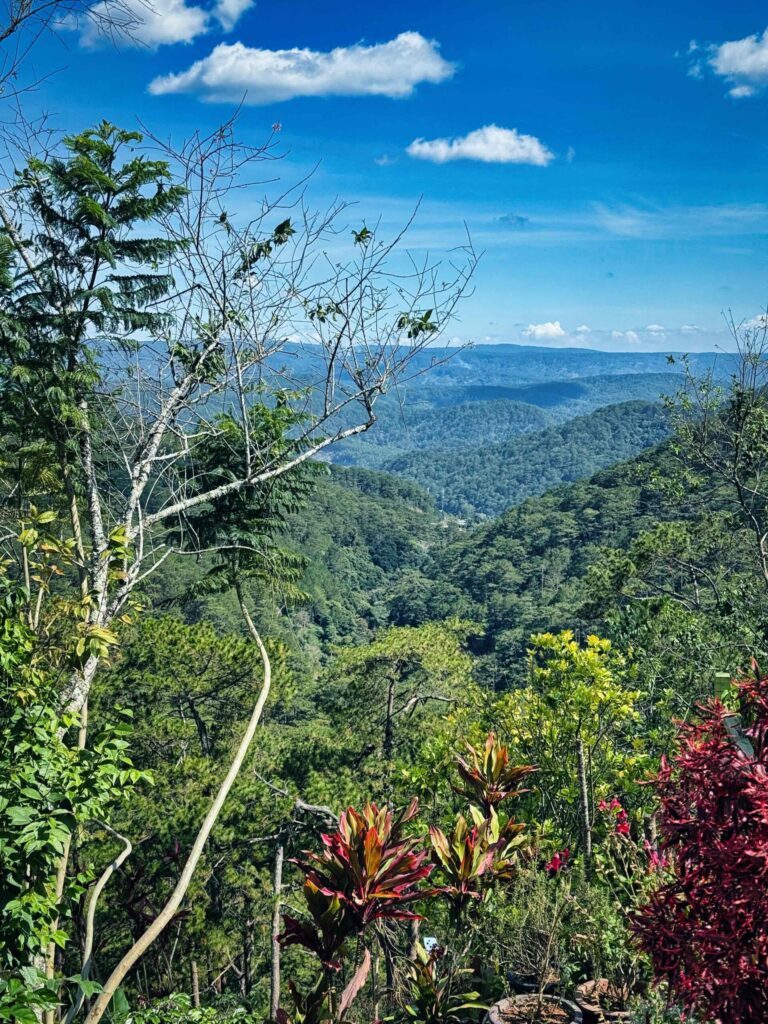
Da Lat, Vietnam
Our first trip to Da Lat, nine years ago, left us confused and a little frustrated.
We didn’t eat much Vietnamese food—mostly stuck to Western-style restaurants—and found the city harder to navigate than other spots we’d visited in Vietnam. It felt less approachable, more opaque. We never quite figured out how the place worked.
But the cool mountain weather stayed in our memories. So this year, we came back.
At 5,000 feet, Da Lat offers a break from Southeast Asia’s usual heat—high 50s in the morning, peaking around 80 by midday. It’s bliss.
And this time, everything clicked.
Maybe the food scene has expanded. Maybe we’ve changed. Either way, we ate incredibly well—Vietnamese as well as Western—and found the city far more accessible and enjoyable.
Looking back, we realized that our first trip to Da Lat felt like a failure. It was one of those rare moments when the cultural and language barriers really got in our way. We left feeling like we’d missed something important.
Coming back was a chance to fix that.
And we were both secretly hoping for a do-over.
What surprised us most was the contrast—not just in the city, but in ourselves. Walking the same streets, past the same buildings, we could see how much we’ve changed since year two of this journey.
The difference was striking.
We don’t often get that kind of clear perspective. But Da Lat handed it to us. And this time, we were ready.
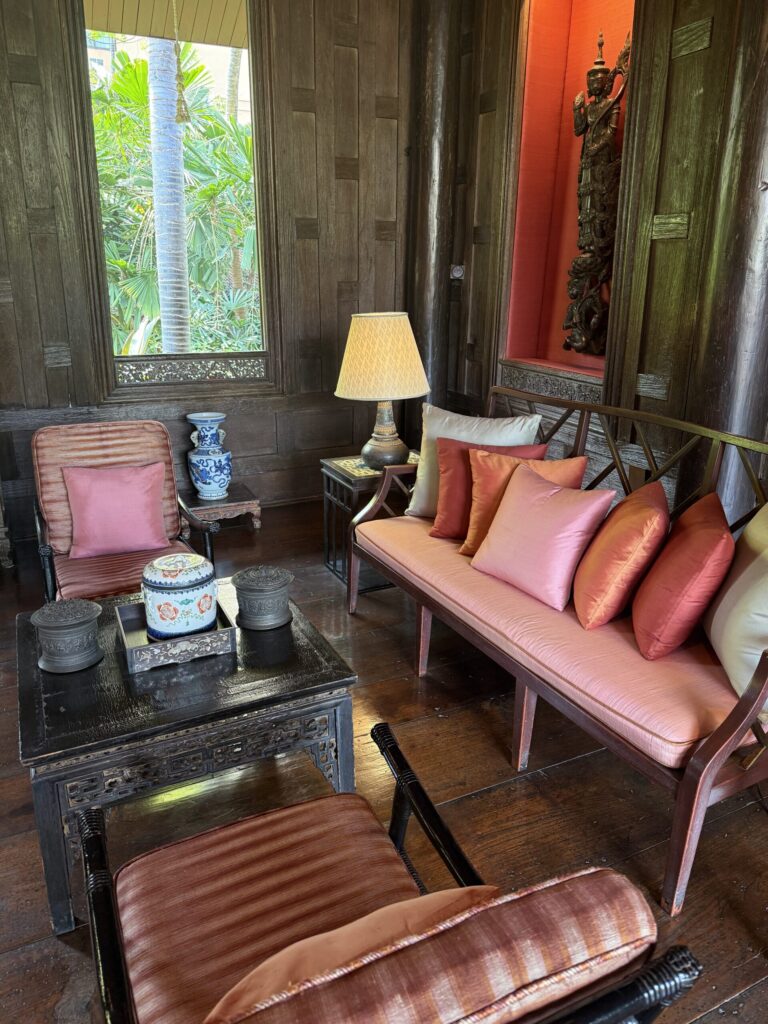
Bangkok (One More Time)
We always swing back through Bangkok before leaving the region. It’s where the kids are. It’s where the goodbyes happen.
And it’s always bittersweet.
This lifestyle makes the passage of time feel unusually precise. You can count the visits. You can measure the years. You can calculate exactly how many more times you might share a meal, hug a kid, or walk a familiar street.
It’s all there—in the spreadsheets, the calendars, and the constant math of long-term travel.
And once you’ve seen time that way, you can’t unsee it.
We left Bangkok knowing another visit was behind us.
And another sliver of time had quietly slipped away.
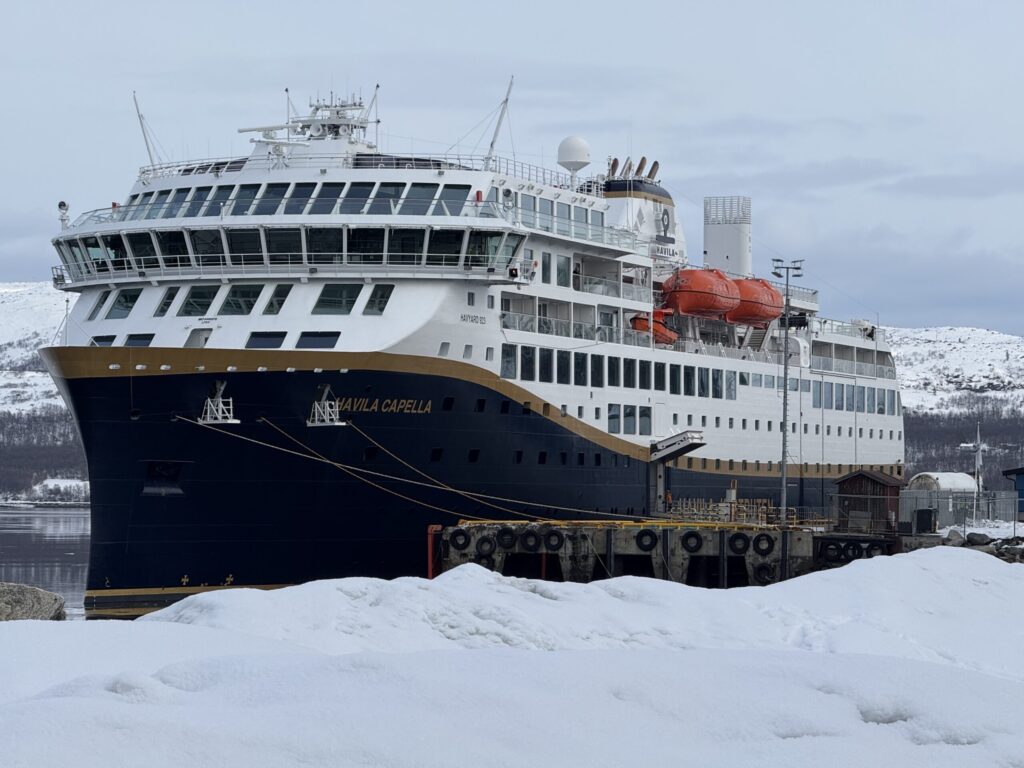
Norway
We’ve long been intrigued by the idea of sailing on a cargo ship.
A few cabins. No frills. Nothing to do but stare out at the open ocean and let the hours slip by.
I’ve always loved that idea. Lisa, less so.
So we found a compromise: the Bergen–Kirkenes Postal Route. Not quite a cargo ship, not quite a cruise—just a working (but comfortable) vessel that makes 77 stops along Norway’s coast over 12 days.
Fine meals. Calm seas. A quiet rhythm. It worked.
Most days, we stared out the windows or bundled up on deck, watching fjords drift by. One night, we caught the Northern Lights—just us and the sky. It felt like nature showing off.
And it was cold. Colder than anything we’ve experienced in ten years. The Arctic in March doesn’t mess around.
Still, it felt like sailing through a slideshow of postcards—each view more breathtaking than the last.
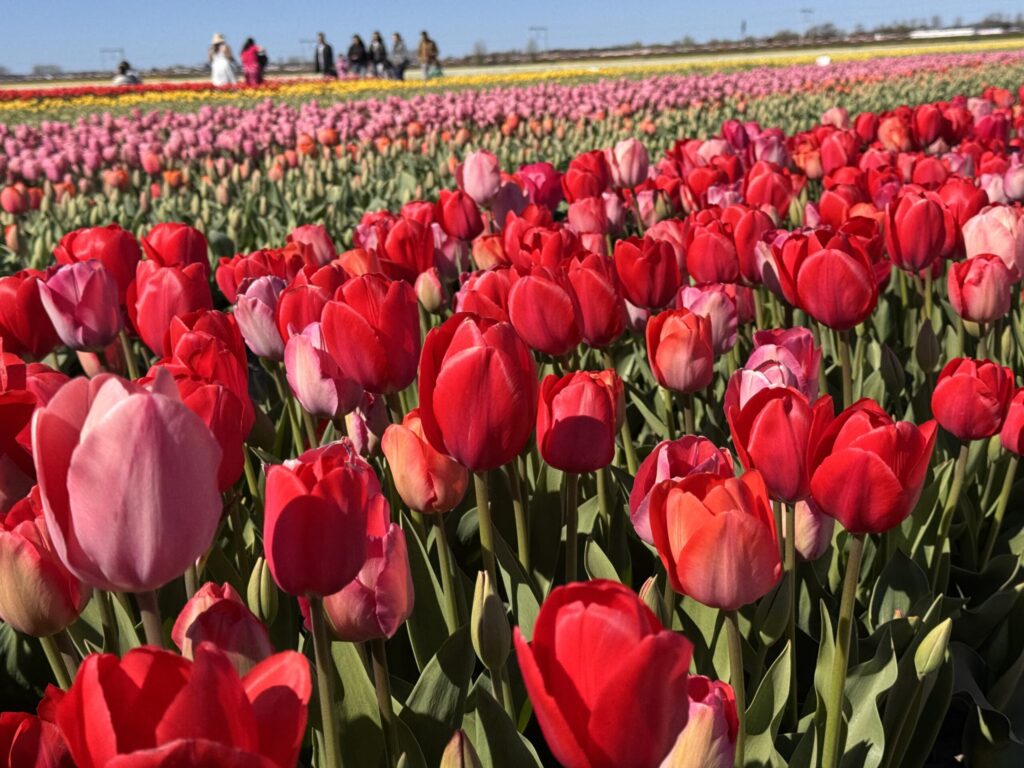
Amsterdam, Netherlands
We came for the tulips.
Even as a non-flower guy, I have to admit—they’re spectacular. The scale. The color. The precision. It’s where science meets art and explodes into a riot of beauty.
Totally worth it.
The rest of Amsterdam delivered, too—cool in April but fun. Lisa did a deep dive into the art museums. She hit them all. I wandered neighborhoods instead, watching how people actually live. The rituals. The rhythms. I never get tired of that.
We took day trips to Haarlem and Leiden—both smaller, more relaxed, and more manageable than the beautiful chaos of Amsterdam’s center.
Because, let’s be honest, the center is mostly a tourist zone. Charming, yes. But it often feels more like a theme park than a functioning city. The canals, the shops, the sex workers in their neon-lit windows—it’s built for the visitor, not the resident.
And while those sex workers may have looked warm in their little glass booths, I was freezing just walking past.
The real Amsterdam is outside the center. It’s diverse. The neighborhoods shift. The cuisines represent the whole world. And from what I could see, people are doing well.
The Netherlands feels solid. Like a place where things work and people don’t fall through the cracks. If you can handle the weather, it looks like a good life.
We really enjoyed our time there—tulips, tourists, and all.
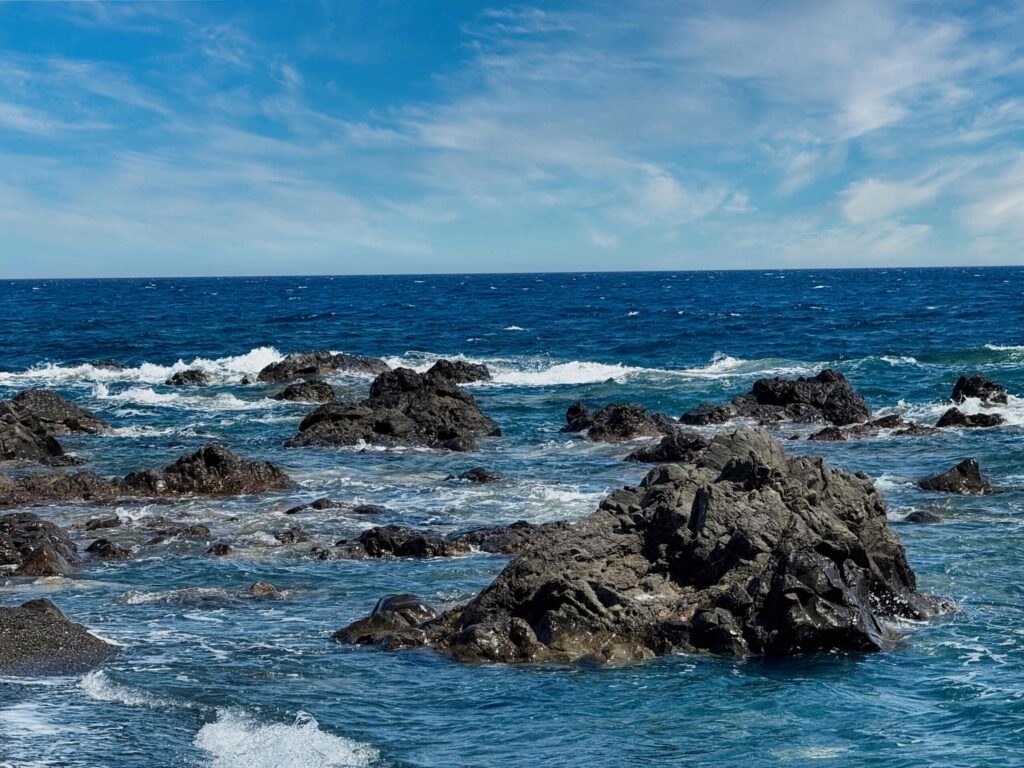
Cyprus
In Cyprus, we rented an Airbnb just 50 feet from the water—in a tiny village perched next to the Mediterranean.
Our host told us you couldn’t build that close to the sea today. Not legally, anyway. From the patio, we could hear the waves crash, toss rocks into the surf, and watch the sun disappear into the water each night.
Quiet. Stunning. Exactly what we needed after a stretch of nonstop movement.
The village was barely a dot—one restaurant for breakfast and lunch, another that opened for dinner. We could’ve driven to bigger cities. A few times, we did. But mostly we stayed put.
There’s something deeply restorative about being still—especially when your view is that good.
But the scenery wasn’t the whole story. It was the people.
Sit down for a meal, and the owner might pull up a chair, start chatting, and pour you a drink—on the house, naturally. At one point, I had someone rubbing my shoulders mid-conversation while telling his grandfather’s life story.
It’s that kind of place.
And it makes sense when you look at the map. Cyprus is within arm’s reach of Jerusalem, Lebanon, Syria, and Turkey. That whole corner of the world shares a cultural thread: hospitality as a core value.
They feed you. Embrace you. Treat you like family. It’s not a performance—it’s just who they are.
We didn’t do much in Cyprus.
We didn’t need to.
The ocean, the sunsets, the warmth—both literal and emotional—were more than enough.
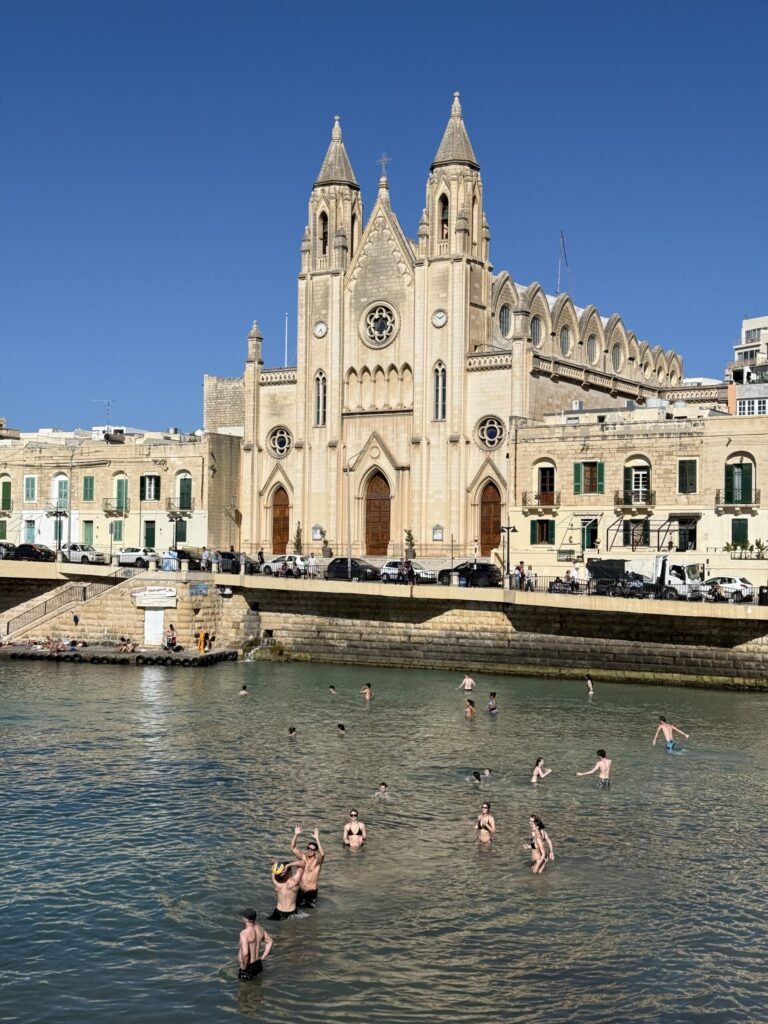
Malta
Malta was… fine.
The coastline stole the show—rugged and cinematic, with ancient forts and stone buildings clinging to the cliffs. The island took a beating in World War II, and much of what stands today is a mix of weathered resilience and careful reconstruction. It looks important. Sometimes it even feels that way.
But for us, the experience felt muted.
We spent our days wandering the old city, dodging cruise ship crowds, looking at buildings that probably deserved more attention than we could give. It was peak season, and the streets heaved with tour groups—umbrellas raised, guides shouting facts we mostly tuned out.
The food? Serviceable. A little bit of everything, not much that stood out. Malta seems to cater to everyone and, in doing so, loses some of its own flavor.
Still, the people-watching was next-level. Malta might have the highest concentration of beautiful humans we’ve encountered in a while—beachfront workouts, swimwear ad campaigns in motion. It was almost distracting.
And that kind of sums it up.
Not every place has to knock you sideways. Some places just… are. And that’s okay.
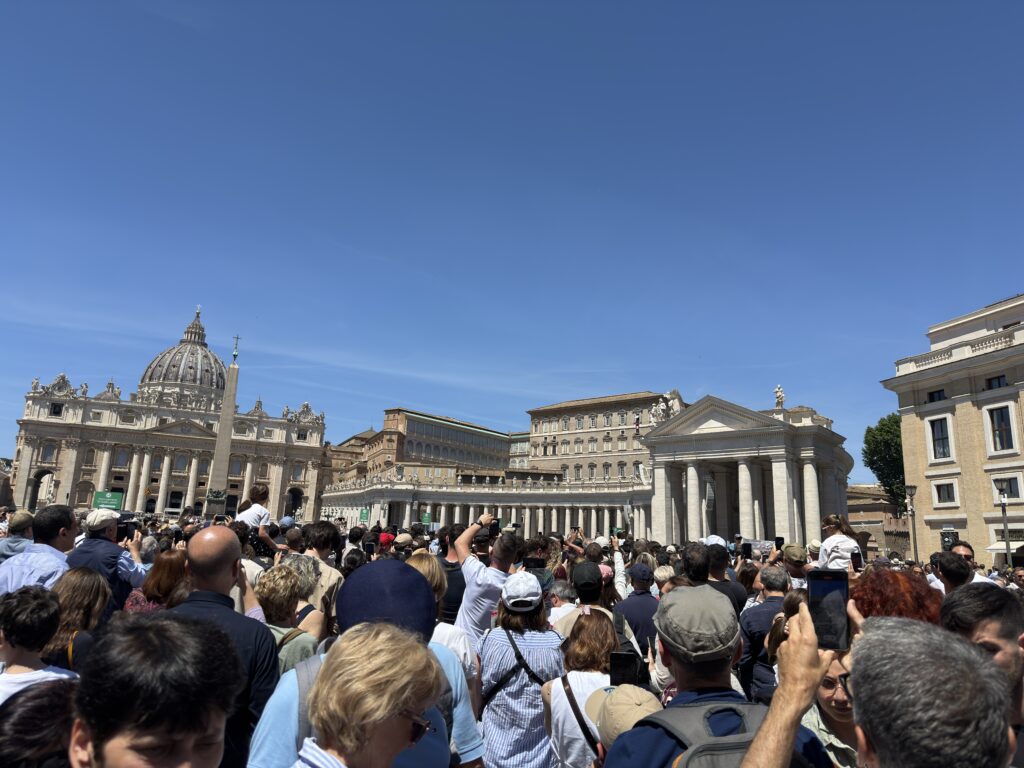
Rome
By now, we’ve earned the right to do Rome differently.
No itinerary. No reservations. Just wandering. A church here. A ruin there. A quick espresso. A long pause. Nothing to chase. Nothing to prove.
Rome rewards that kind of exploration. There’s something to see around every corner. Usually several things. Sometimes 3,000 years’ worth—stacked, layered, crumbling and alive.
This time, the city felt charged in a different way.
The Vatican’s Jubilee year had just begun, and security was tighter than usual. The machine-gun patrols weren’t new—but the posture had shifted. More alert. Less ceremonial. Our hotel, around the corner from the presidential palace, came with extra barriers and a constant reminder that Rome was being a bit more vigilant than usual.
But it wasn’t just tension in the air. It was something else too—something older. Deeper.
On Sunday morning, we joined the crowd in St. Peter’s Square as Pope Leo delivered the Angelus. The square, always busy, was overflowing—packed with prayer, fervor, and unshakeable faith. There was joy in the crowd. A kind of reverence that pulsed through the space.
Earlier that day, we visited the tomb of Pope Francis. Just a simple space. Quiet. Humble. Unadorned. And yet—moving.
Rome holds contradictions better than most cities. Power and humility. Noise and stillness. Chaos and calm.
You don’t have to do Rome every time. Sometimes it’s enough to be there—present, wandering, letting the layers of history and faith find you.
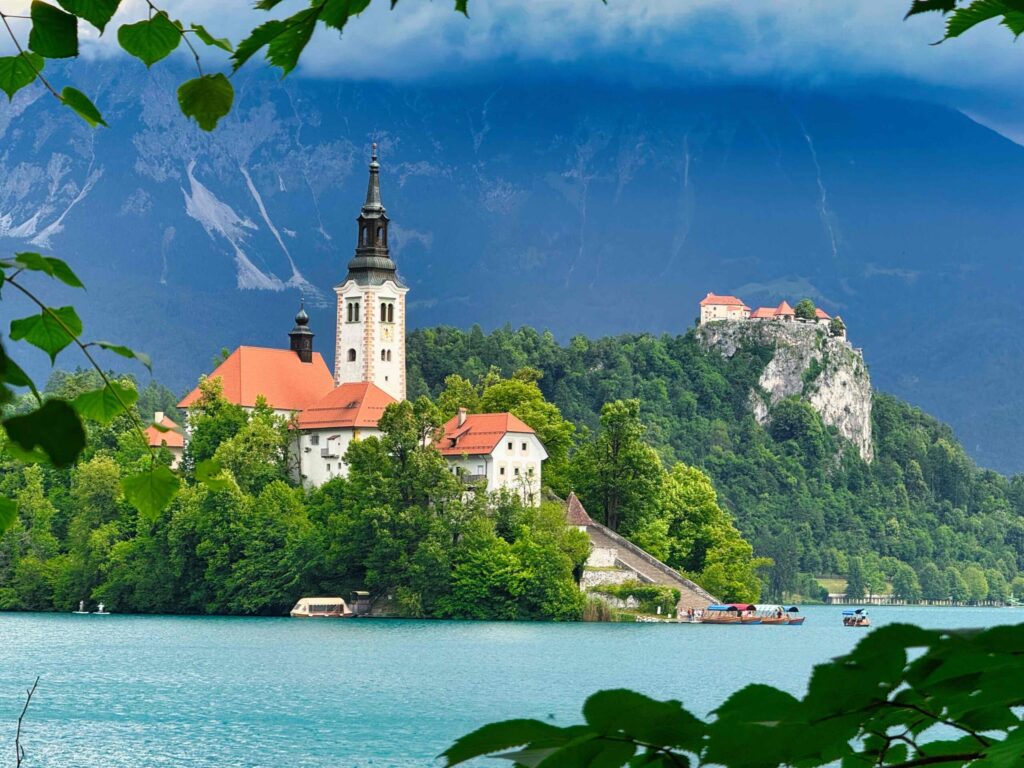
Slovenia
Slovenia’s been on our list for a while.
Compact. Green. Often overlooked.
The driver of our taxi from the airport wouldn’t stop talking. Not in an annoying way. In the way someone talks about their child who just aced the violin recital and then baked a perfect lemon cake. He was proud. Giddy, even. He told us—with no prompting—how clean it is here, how safe, how beautiful. The food. The cakes. The people. On and on. I half expected him to pull out a slideshow.
We didn’t argue.
Out the window: spotless streets, no trash, no grime. Just neat rows of buildings with stories to tell and the Julian Alps looming behind them like stern but loving grandparents.
Those snow-capped peaks aren’t just a backdrop. They’re a presence. They rise in the distance, quiet and massive, as if to remind you that yes, this is still Europe—but it’s a different kind. One where nature hasn’t been paved over or pushed out. It’s integrated. Part of the rhythm.
Ljubljana is a city with everything you’d expect from a European capital. Cobbled streets. Baroque facades. A castle that keeps watch from above. The river runs through the center, lined with cafes that spill out onto sunny terraces. It’s a city that invites you to slow down—grab a pastry, watch the boats glide by, and realize that maybe you’re in no rush after all.
And the food? It suits the place. Sure, there are Michelin-starred spots and famous chefs if you’re looking for them. But what really shines here is the food that feels like it belongs to the place: hearty, simple, satisfying. Beef goulash that fills you up and makes you feel like you’re sitting around a family table. Plates of dumplings—layered pastries, really—stuffed with sweet or savory fillings, each one a warm, flaky surprise. The restaurants have the same spirit: no pretension, no endless tasting menus, just good cooking that leaves you feeling taken care of.
It’s all so close, too. Lake Bled is just a short ride away—an island church, a castle perched on a cliff, and mountains that rival anything you’d find in Switzerland or Austria. The lake is touristy, of course, but not overwhelmed. Step off the main road and you’re alone, breathing in the pine-scented air, listening to the quiet. Further out, the mountains get bigger and bolder, clawing their way into the sky. It’s the kind of scenery that humbles you, that makes you feel small in the best way.
Back in the city, everything feels like it fits together—nature, food, and urban life in easy harmony. A city that’s self-contained and easy to navigate. No endless traffic jams, no chaos. Just a nicely balanced mix of elements—inviting you in, not showing off, but proud to share.
Slovenia doesn’t shout. It doesn’t need to. It charms. It’s the perfect place for us to close out another year of travel.
Wrapping It Up
Ten years in, this life still surprises us. We plan, but plans evolve. We chase novelty, but we also revisit the familiar. And through it all, we keep finding new ways to see the world—and ourselves.
We still don’t have a master plan. We never did. We just kept moving—toward whatever felt like the next right place.
What we found along the way wasn’t just new cities or countries—it was a new version of ourselves. One shaped by motion, made resilient by constant change, and still endlessly curious.
If the people we were in year one could meet us now, I think they’d be a little shocked. We adapt faster. We let go more easily. We laugh more when things go sideways. The road didn’t just take us places. It changed the way we move through all of them.
So we’ll keep going. Not because we know where it leads, but because the not-knowing is half the point.
Here’s to another year of wandering, wondering, and maybe—just maybe—fewer bouts of food poisoning.
2024 – 9 Years as a Digital Nomad Lawyer
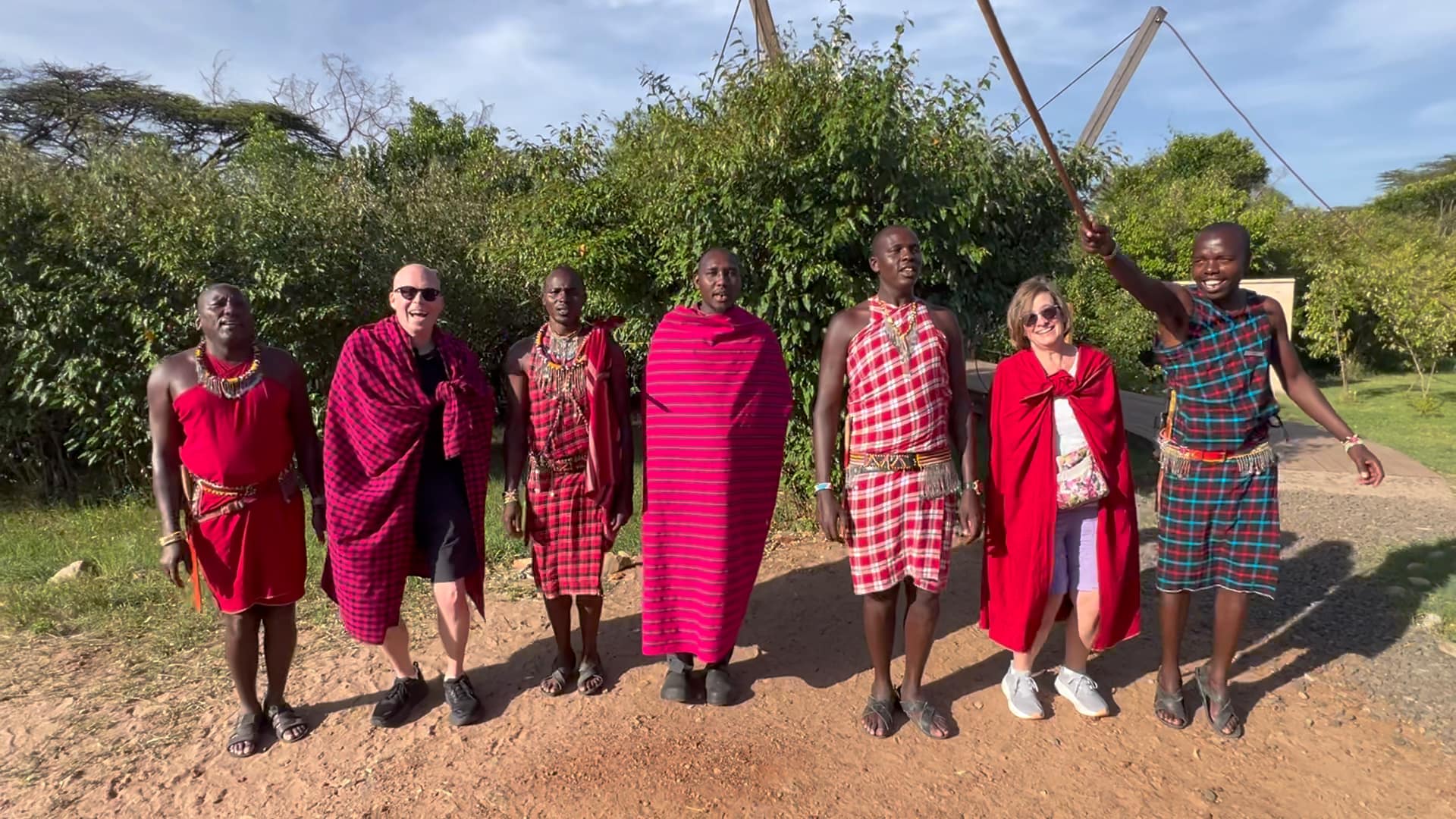
This year, our travels took us to many more countries than usual. We bounced around a lot more than normal over the past twelve months. Let me explain.
Slow travel vs fast travel
In 2015, we landed in Berlin and stayed for two solid months. We’d been told that moving slowly was the “right” way to be digital nomads. We enjoyed Berlin, but by the end of our time there, we were ready to get busy, move on, and see more places. We picked up the pace by reducing the length of our stays in each destination.
For a few years, our pattern involved staying in a couple of places for a month each, interspersed with shorter stays, often a two-week road trip. This gave us time to settle into a place, learn more about our environment, and focus on work tasks without too much disruption. That pattern worked for quite some time.
Then COVID hit and disrupted our system. To avoid the virus and comply with government regulations, we settled down for long stretches in South Korea, Iceland, Bonaire, and Thailand. This meant fewer places for more extended stays and very little advance planning due to rapidly changing circumstances.
As COVID constraints disappeared, we shifted gears and booked trips well in advance to lock in lower rates amid surging prices. This new approach led to relatively short stays and lots of movement, a reaction (perhaps overreaction) to the slow pace of travel during the pandemic.
Our fast-paced travel continued through 2023 and into 2024. Booking well in advance meant we were committed to the plan, even if we occasionally got tired of moving so frequently. We were caught between an overly ambitious pace and some great deals we didn’t want to lose by slowing down.
So the last 12 months have been about moving fast and enjoying the last gasp of reasonably priced travel that we had booked while prices were still lower. That’s a long-winded explanation of why this year’s list of stops is longer than usual. Expect my June 2025 report to be a bit shorter.
This past year in a nutshell
We were in Tokyo the last time I wrote our annual nomad update. Tokyo is the most populous city in the world, making it busy and crowded, but it’s also one of the most convenient, comfortable, and functional cities we’ve ever visited.

Japan
We’ve visited Tokyo several times and always enjoyed it, but this visit was fantastic. We’ve become very comfortable being in Japan, which is one of those places that can be a little awkward for first-time visitors. By now though, we’ve fully engaged with the food, the people, the transit system, and the vibe. It’s not an accident that we’re already plotting our next visit. It’s a great place to spend time.
Tokyo has nearly everything a city can offer—much of it is the best in the world. The coffee, the chocolate, and even the pizza beat out the best from most other places. We spent very long days exploring the nooks and crannies of the city, usually from early in the morning until evening. I even had the best dental cleaning of my life while we were there. We packed a lot into our four weeks in Tokyo.
But as June turned into July, it got hot and humid, and the annual rainy season got wet. We packed up and moved to cooler weather in the mountains of Hokkaido. Our goal was to enjoy lower temperatures, and we did. A bonus was that the lavender was in bloom, and seeing that part of Japan decorated in purple was awesome.
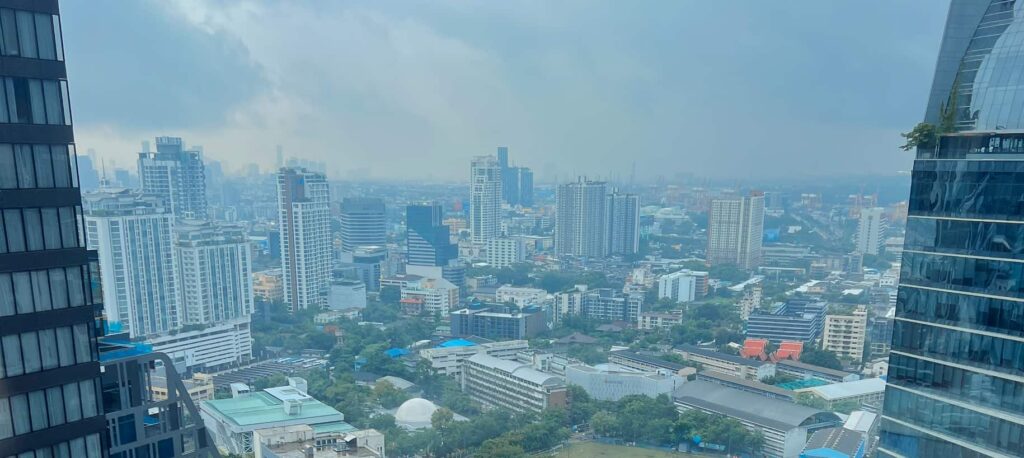
Thailand
After cooling off in Hokkaido, we flew to Bangkok to spend a quick week visiting our older kid, Toby, who has lived in Thailand for ten years. Bangkok is hot, hot, hot, but it’s easy to stay in the air conditioning nearly every minute of every day.
After nine years on the road—which has become a big chunk of my life—going to Bangkok feels as much like going home as anywhere else. It’s a great city that we love visiting. Plus, we like seeing our kid.
We’ve had some long visits to Bangkok—once we stayed in an Airbnb in our son’s building for two months. This time, we only stayed a week, and Toby was grateful. A parenting lesson learned.
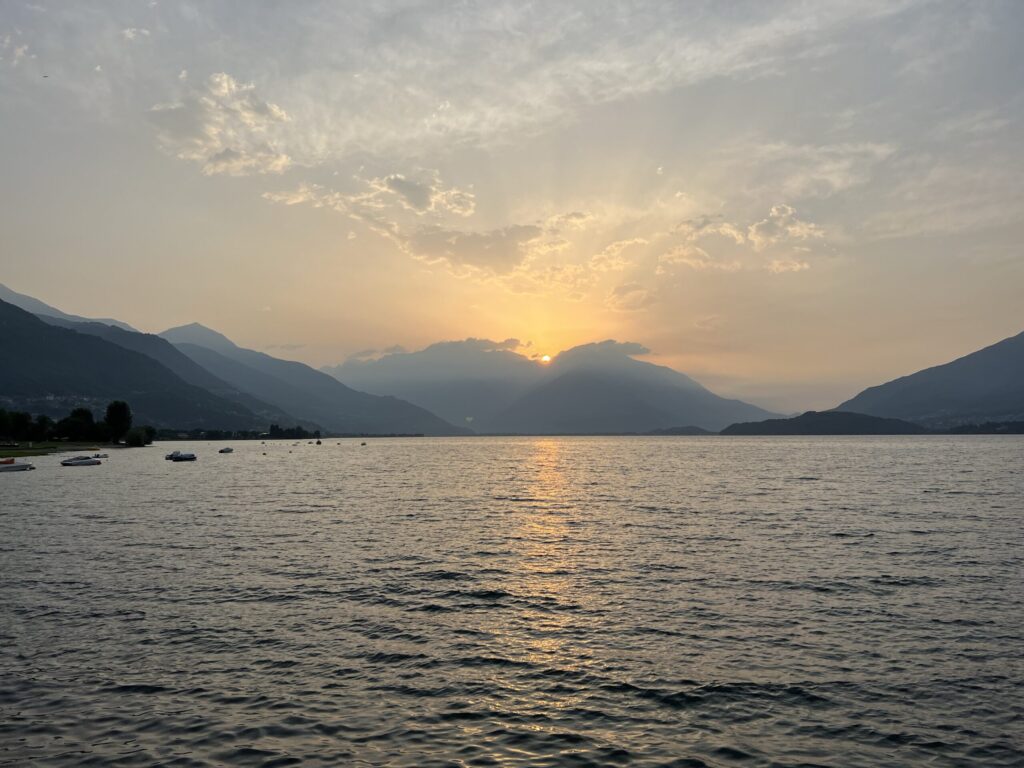
Italy
After a long flight from Bangkok to Milan, we headed out in a rental car to Lake Como. We rented a place with a view up at the north end of the lake. It was in a smallish village with shockingly few tourists and amazingly good gelato. We stayed for a couple of weeks, giving us time to head down to the better-known villages of Bellagio and Como—which are packed with tourists. While we enjoyed our time in Italy, I have to say that we would’ve had an entirely different experience if we had stayed in one of those more well-known towns. Como in the summer is a hot, crowded, sticky mosh pit of tourism.
We’d hoped for cool-ish weather, and it was definitely cooler than the southern parts of Italy, but there was a heat wave, so we were glad to have air conditioning. We’d been warned to be careful with the AC because it would cost extra, but we were thrilled when the extra charge totaled about €30. Lake Como is a great place to visit, but it’s probably not the best place for avoiding the heat.
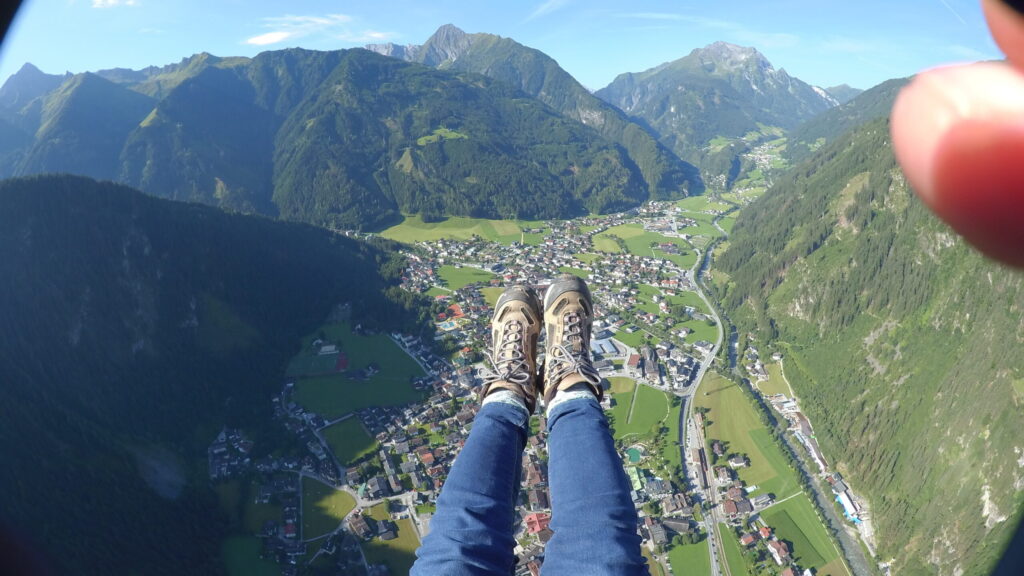
Austria
Heat avoidance is, however, a specialty of the Austrian Alps. We’d stayed in the same apartment two years earlier, so we knew the area and the climate. If it ever threatened to get hot in the valley of Mayrhofen, all we had to do was jump in a gondola and go up 8,000 feet, put on our jackets, and enjoy lunch in one of the mountaintop restaurants.
Two friends visited us during the month we spent in Austria. Having friends visit is a special thrill for us. Full-time travel complicates relationships. Meeting up on the road and spending a few days together is a great way to enjoy old friends and keep the relationships alive.
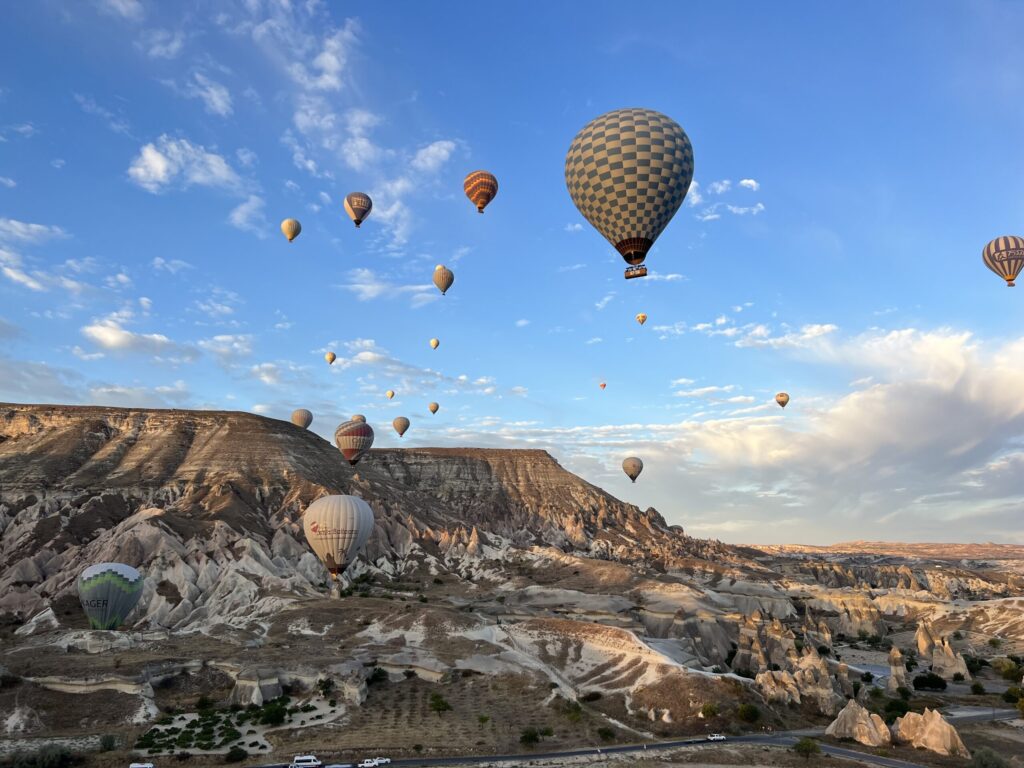
Turkey
After longer stays in Italy and Austria, we were ready for a bit of variety, and Turkey delivered.
We spent a week in Kaş, a charming fishing village on the Mediterranean. Kaş is one of the places we visited in 2015 when we first started our journey as digital nomads. We loved it then, but as the author Thomas Wolfe said, “you can’t go home again.” Things have changed in Kaş, and while we enjoyed our second visit, the magic of our first visit wasn’t quite there. We had changed. I’m sure Kaş is magical for many of the folks we saw enjoying their holidays there, but we were ready to move on when our eight nights were over.
We hopped in our tiny rental car and headed to Konya, a city we had never visited. Aside from Kaş and Istanbul, we hadn’t explored much of Turkey. Konya surprised us with its fascinating blend of history and modern economic growth. We spent a few days exploring the city’s rich heritage, including the Mausoleum of Rumi, and soaking in the local culture.
From Konya, we drove to the incredibly touristy but undeniably beautiful region of Cappadocia. Famous for its unique rock formations, known as fairy chimneys, Cappadocia is a place that warrants its popularity. We rode a hot-air balloon above the stunning landscape, enjoying a bird’s-eye view of the spires and valleys below, and hiked through the ancient cave dwellings that dot the area. Some places are touristy for good reason, and Cappadocia is one of them.
Our journey continued with a flight to Izmir, where we spent five days exploring the city. Izmir’s vibrant waterfront and rich history provided a perfect backdrop for exploring the ruins and enjoying the local food.
Finally, we took a short flight to Istanbul, one of our favorite cities. A couple of friends from the US visited us there, and it’s always a pleasure to show off a city we love. We ate a lot of outstanding Turkish food and rode a boat on the Bosphorus and wandered the city, soaking up the vibe at the intersection of ancient and modern.
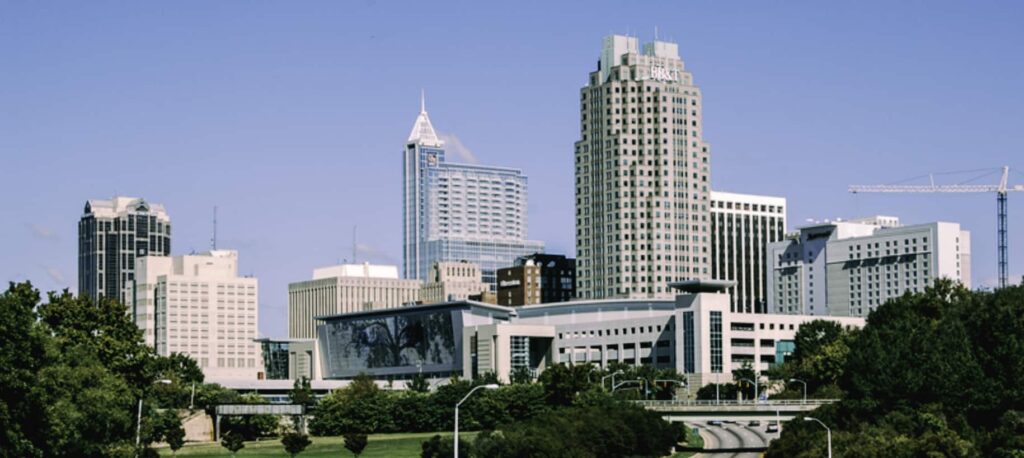
United States
Next on our itinerary was the United States. We spend about two weeks a year there, primarily for medical check-ups and family visits. We always have a great time, and it’s endlessly fascinating to see how much Raleigh, the city we used to live in, changes from year to year.
The downtown neighborhood where we lived for our final three years, looks almost unrecognizable compared to when we left nine years ago. The transformation is dramatic, with new buildings, restaurants, and stores popping up everywhere. It feels like a different place, and seeing how much it has evolved is both exciting and surreal.
During our visit, we run around like crazy, trying to see everyone and catch up. It’s a whirlwind of activity, but we love the opportunity to reconnect with friends and family. However, we also cherish it when folks visit us on the road. Those visits allow for more quality time together without the rush and distractions of our brief stays in Raleigh.
Returning to our former home city often feels a bit strange – like we’re tourists in a place that used to be so familiar.
Each visit to Raleigh ends with us feeling a little less connected to it. It reminds us how much our lives have changed—how much we have changed—and how our sense of belonging has evolved. Despite this, our time in the United States is always meaningful, filled with love, laughter, and a sense of connection, even as it underscores our nomadic existence.

Mexico
After leaving the US, we headed straight for Mexico City. We made the same journey last year and were eager to return. There were two main reasons for this choice: first, the food. Mexican cuisine is simply unbeatable, and Mexico City offers the best of it. Realistically, you can’t get genuinely authentic Mexican food outside of Mexico.
The second reason is the travel logistics. Mexico City has been a fantastic hub for finding bargain fares out of North America. In 2022, we snagged great business-class deals to Europe, and we were lucky to be able to do the same in 2023. Unfortunately, those deals now seem to be getting harder to find.
We’re huge fans of Mexico City, and our visits have coincided with the Day of the Dead celebrations for the past two years. This vibrant festival is endlessly entertaining, with its parades, costumes, elaborate exhibitions, and lively street performances.
Mexico City never ceases to amaze us. Its deep history, bustling markets, and diverse neighborhoods offer endless opportunities for exploration. Whether strolling through the historic center, visiting the Frida Kahlo Museum, or simply people-watching in one of its many plazas, the city always has something interesting to offer. It combines the best of tradition and modernity, making it a perfect stop in our travel itinerary.
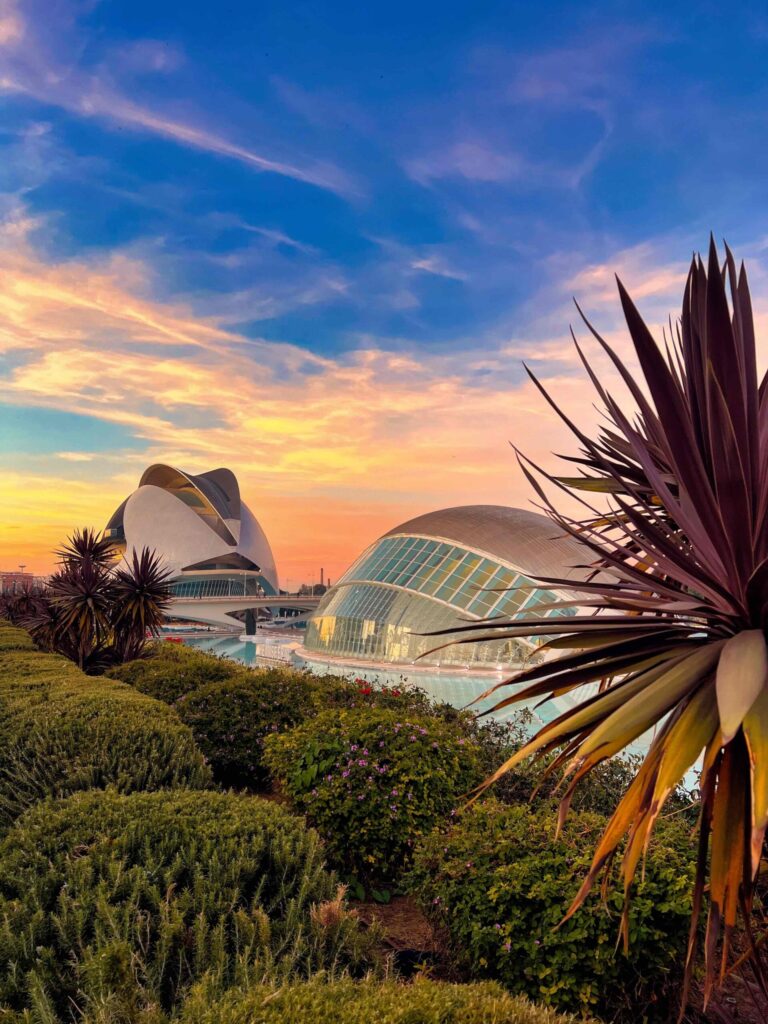
Spain
We flew from one Spanish-speaking country, Mexico, to another, Spain. We arrived in November, which I had assumed would be a bit late in the year and quite cold, but it was actually the perfect time to visit. The weather was pleasantly mild, making our meanderings comfortable and enjoyable.
We started our journey in Granada, a city steeped in history and known for the stunning Alhambra Palace. We spent our days exploring the intricate Moorish architecture and the beautiful Generalife gardens.
Next, continuing the theme of ancient Moorish architecture, we traveled to Córdoba, home to the magnificent Mezquita, a mosque-cathedral that exemplifies the blend of Islamic and Christian architecture. The historic center of Córdoba is a UNESCO World Heritage site, and we thoroughly enjoyed getting lost in its maze of cobbled streets.
From Córdoba, we headed to Seville, a city that captivated us with its vibrant culture and stunning landmarks. The Plaza de España, with beautiful tile work and grand architecture, was a highlight. We also enjoyed wandering through the historic Santa Cruz neighborhood and visiting the impressive Seville Cathedral.
Our final stop was Valencia, a seaside city that we had visited once before, on a cruise, and had always wanted to explore further. The futuristic City of Arts and Sciences provides a delightful contrast to the historic charm of the medieval center.
This visit allowed us to see a different side of Spain, beyond the bigger cities of Madrid and Barcelona. The historic sites, the delectable food, and the charm of wandering through lesser-known streets made for a memorable experience. Spain in November was a revelation, and we’re already contemplating where we’ll go on our next visit.
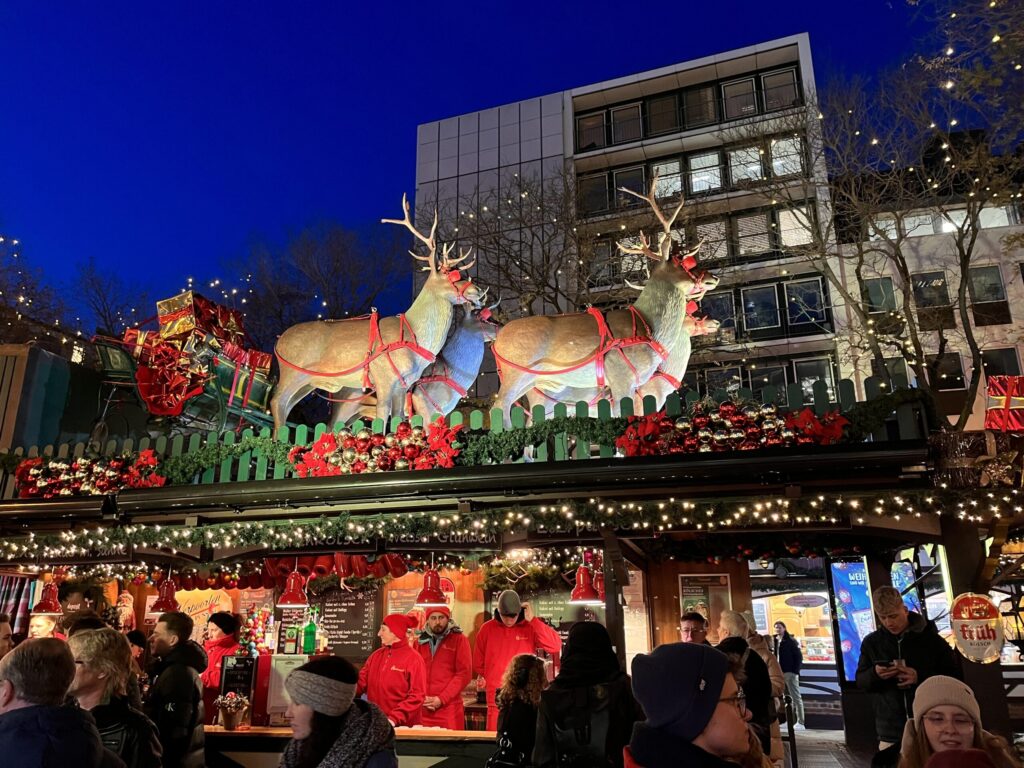
Germany
The next country on our list was Germany. Lisa had always wanted to go to the Christmas markets, but I had vetoed them for years because I wasn’t keen on being cold. And yes, it is cold during the Christmas markets. I had put it off as long as possible, but eventually I ran out of excuses, so we headed to Germany.
Our first stop was Cologne, where the Christmas market was … as cold as I expected. It was definitely festive, with twinkling lights, beautifully decorated stalls, and the enticing aroma of mulled wine and gingerbread filling the air, but it was also definitely cold.
Next, we visited Düsseldorf, which has a multitude of Christmas markets. We strolled through many of them, sipping hot chocolate and snacking on massive hot cheesy pretzels. It was cold, but fun.
Our final stop was Frankfurt, where we explored another charming Christmas market. The festive foods, beautiful decorations, and lively atmosphere made each market visit special. It was fun and interesting to see the different touches each city brought to their celebrations.
However, I have to admit: I wouldn’t necessarily do it again. It is, in fact, really cold. You spend most of your time outside, standing while you eat. The idea is to socialize and drink a lot of alcohol, which theoretically keeps you warm while you shop for Christmas decorations and gifts. But have I mentioned the cold? I’m not saying I didn’t enjoy it, but I probably won’t volunteer to do it again anytime soon. Once was enough to satisfy both my curiosity and Lisa’s long-standing wish.
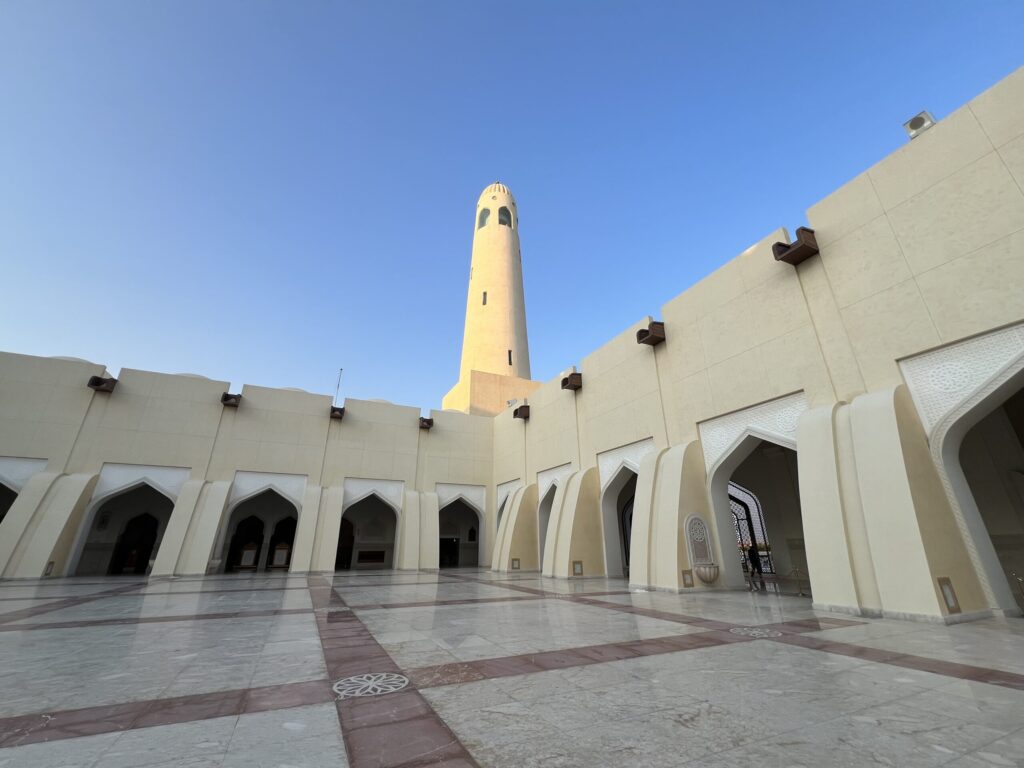
Qatar
A shocking number of our destinations are the places where we’d have to change planes anyway. That’s how Qatar ended up on our itinerary. Previously, we had only passed through the Doha airport during layovers. This time, we decided to check into a hotel and stay for five nights, which turned out to be a fantastic decision.
Qatar impressed us with its stunning modern architecture and amazing food, particularly at a Syrian restaurant we discovered. The culinary scene in Doha offers everything from traditional Middle Eastern dishes to international cuisine.
The people were hospitable and friendly, and we often saw them outside at night, chatting while their kids played nearby. The sense of community and the nightly social gatherings added a warm and welcoming vibe to the city.
Doha is affluent and modern, with magnificent hotels that are a testament to the city’s wealth. We were pleasantly surprised by how affordable the accommodations were, likely due to the many rooms built for the World Cup. This made our stay not only comfortable, but also a great bargain.
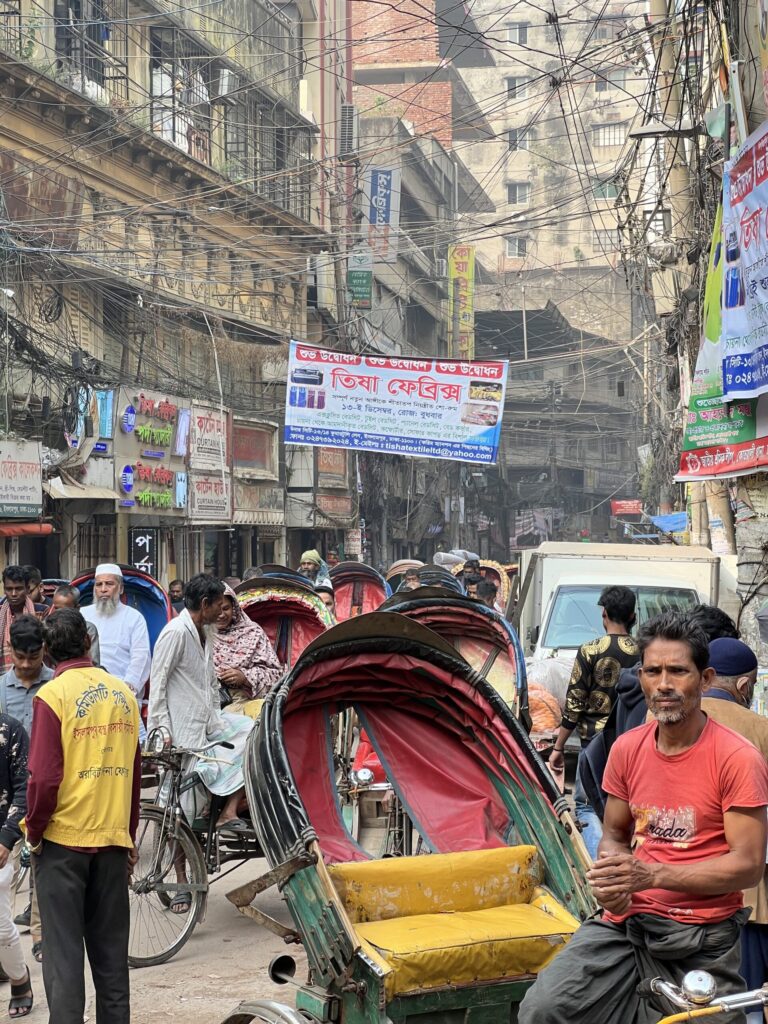
Bangladesh
Why Dhaka? I’ve been aware of Bangladesh since I was a little kid. I remember the Concert for Bangladesh; my parents had the album. I’m unsure how the country first got on my radar, but it did. Over my lifetime, I’ve seen hundreds of pictures of people packed on top of trains—always in Bangladesh.
Years ago, we met a guy from Dhaka at a roadside rest stop. We spent 10 minutes chatting and became Facebook friends. He kept the country on our minds.
Since we were going to be in the neighborhood, we had to drop by. We knew it was a poor and densely populated country, and I’ll admit we insulated ourselves from that to some extent. We flew business class from Qatar and stayed in a suite at a beautiful Marriott. We hired a guide for a day to show us around the city. The population density had me a little nervous.
I shouldn’t have been. Yes, it’s crowded, poor, and intense, but the people are incredibly nice on a level we could not have even imagined. They are welcoming, sincere, curious, and interesting. We were surprised and delighted by their warmth and hospitality. But it truly is intense. Leaving the country five days later and navigating our way to the plane was another hectic experience. Nothing about life in Dhaka is easy.
Despite the challenges, our time in Dhaka was eye-opening and memorable. The city’s street life, chaotic markets, and friendly people left a lasting impression on us. We visited historical sites like the Lalbagh Fort and the Ahsan Manzil, which offered glimpses into Bangladesh’s rich history and culture.
We were deeply touched by the kindness of the people we met, from our guide who showed us around with pride, to the locals who wanted loads of photos with us. They were legitimately some of the nicest people we’ve ever met, and that’s really saying something.
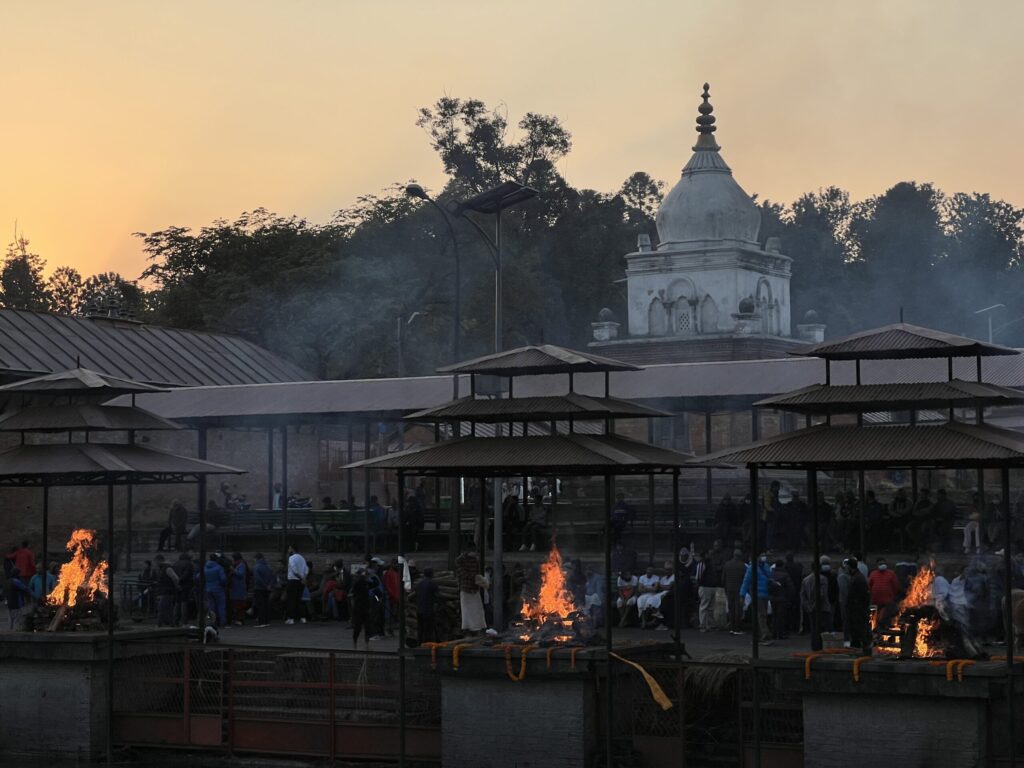
Nepal
The next country on our list was Nepal, where we spent time in the small mountain town of Pokhara and the bustling capital of Kathmandu. We needed somewhere to be for Christmas, so we booked well in advance. It can be tricky to secure accommodations over the Christmas and New Year’s holidays because places fill up quickly. Fortunately, we found a nice Hyatt in Kathmandu and booked it for two weeks over Christmas.
We spent a week in Pokhara, taking advantage of easy access to some ‘baby’ hikes. Nestled in the mountains, Pokhara is a gateway town for trekking in the Annapurna range, but we just wanted some short day hikes. Even those challenged our fitness.
One of the highlights of our stay in Pokhara was waking up early to watch the sunrise over the Himalayas. The sight of the sun illuminating the snow-capped peaks was nothing short of magical.
Kathmandu reminds us a lot of India, and it’s easy to see why. Nepal was once part of India, and the similarities are striking. The city is busy, crowded, and densely populated, with a vibrant street life that’s both chaotic and fascinating. What makes Kathmandu particularly interesting is its diversity. Situated between India and China, the two most populous countries in the world, Nepal has become a unique intersection of cultures. This blend is evident in the religions, languages, and traditions of the people we encountered.
We explored the rich cultural heritage in Kathmandu, visiting ancient temples and ritual sites that are still the heartbeat of the city. The local cuisine was another highlight, with momos (Nepalese dumplings) becoming a quick favorite.
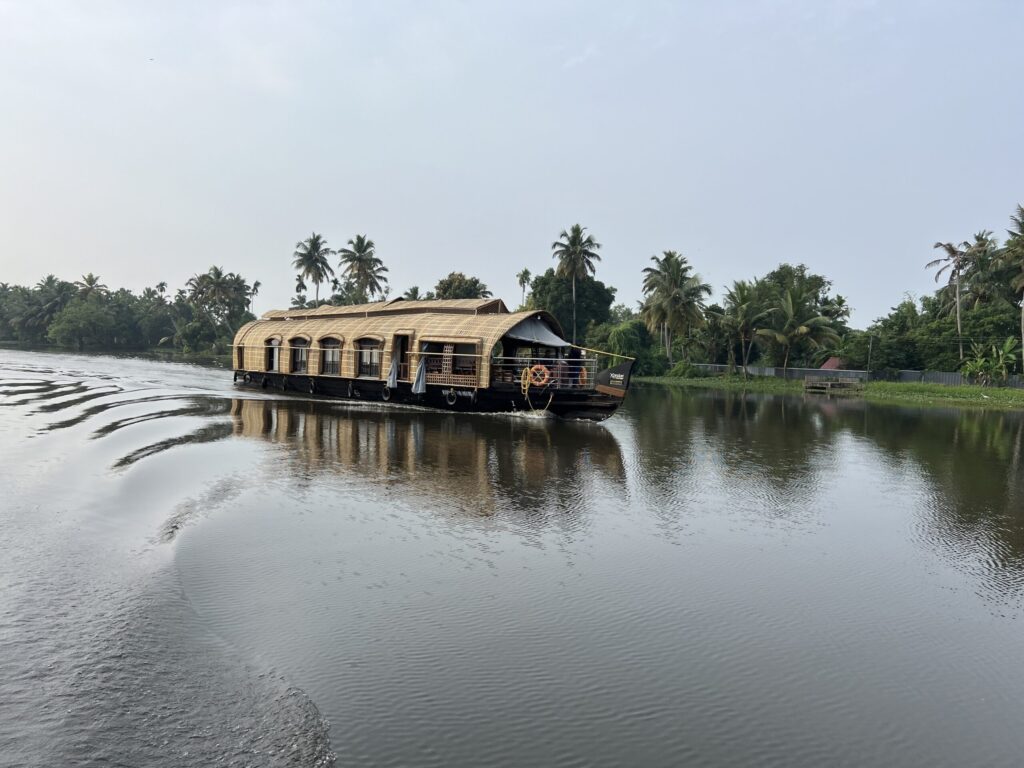
India
From Nepal, we flew down to southern India, eager to explore a new region of this incredibly varied country. Our adventure began with a couple of nights on a houseboat in the backwaters of Kerala. This relaxing and beautiful experience was entirely different from our previous visits to the bustling cities of Mumbai and Delhi, and the historic Rajasthan area. The backwaters were less densely populated, and to our surprise, beef was available on many menus, a rarity in most parts of India.
After our serene houseboat experience, we hired a car and driver to spend about ten days traveling across the region. We left the backwaters and embarked on a road trip that took us through some of the most picturesque parts of southern India. Our first stop was Munnar, a hill station famous for its tea plantations and stunning landscapes. The rolling hills covered in lush green tea bushes were a sight to behold. We spent a couple of days in Munnar, exploring the tea estates.
Next, we traveled to Kodaikanal, another beautiful hill station known for its mist-covered cliffs and serene lakes. The crisp mountain air and breathtaking scenery tempted us into a glamping situation, which was as close to camping as we’ve been in a long time.
Continuing our roadtrip, we headed to Chettinadu and then Madurai, where we had the opportunity to witness the Pongal festival up close. The local villages were transformed with colorful decorations and festivities. It was fascinating to see the cultural traditions come to life and to be part of the community’s celebrations, even as outsiders.
This part of India offered a very different experience than the more touristy areas we had visited before. The pace was slower, the people were incredibly welcoming, and the landscapes were some of the most beautiful we had seen. This journey through southern India provided a new perspective on the country. It was a mix of relaxation and adventure, culture and nature, and it gave us a deeper appreciation of India’s size and diversity.

Maldives
Anticipating that two months spent in Bangladesh, Nepal, and India would be a lot to take in, we knew we’d need a break, and the Maldives were the perfect respite. Flying there from India was a great plan, and we really did have a relaxing time. We stayed in an overwater villa at one of those fancy resorts and I must say, it was absolutely beautiful. The Maldives are as beautiful, if not more so, than all the pictures you’ve seen.
Is it worth flying halfway around the world? Probably not, but it was just a two-hour flight for us, making it very convenient. We also found a good deal on the resort, so it all worked well. However, there is a weird isolation being on a private island where the resort is the only thing there. There’s nowhere to go except for the activities and amenities provided by the resort, which can feel a bit confining.
Despite this, I’m glad we did it. The seaplane ride was nice, offering stunning views of the turquoise waters and coral atolls. The beauty of the Maldives, with crystal-clear waters, vibrant marine life, and pristine white-sand beaches, is undeniable. I’ve never seen so many shades of blue.
The resort experience, however, comes with a hefty price tag. We managed to avoid spending an incredible amount of money, but some of the prices were beyond belief—$200-$800 for dinner and activities costing over $1,000 per person. It’s just a very expensive place to vacation.
In the end, while the Maldives is stunning and offers a unique experience, I’m not sure I would fly halfway across the world to get there when there are so many other great beaches around the globe.
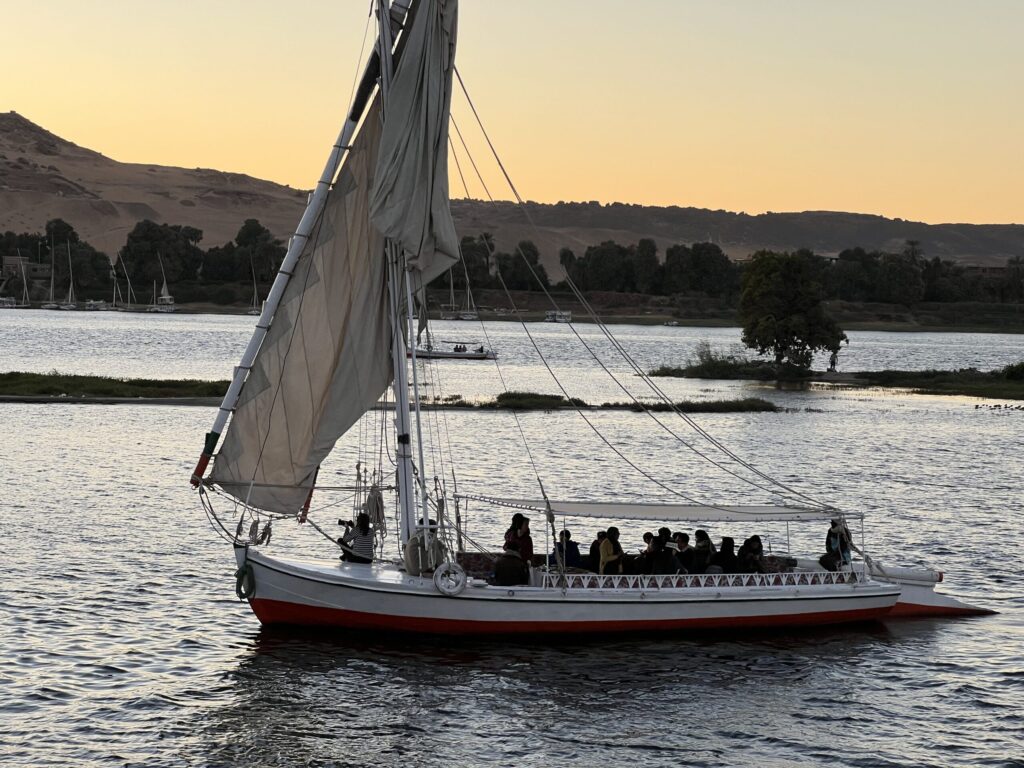
Egypt
Next up was Egypt, a country we’ve visited multiple times and always enjoy. On this trip, we spent a couple of weeks moving quickly, starting in the far south and making our way north, up the Nile.
Our journey began in Abu Simbel, a breathtaking site with massive rock temples built by Ramses II. The grandeur and scale of these monuments set the tone for the rest of our stay. From Abu Simbel, we took a car to Aswan, a city that offered equally impressive historical sites. The Philae Temple was the highlight.
In Aswan, we boarded a Nile cruise that took us to Luxor. Being on the Nile, rather than next to it, was a different way to experience this famous river, giving us a different perspective on life in rural Egypt. And Luxor is hard to beat: Karnak Temple and the Valleys of the Kings and Queens were all worth the repeat visit.
After the cruise, we flew to Cairo and spent about a week there. Cairo, with its chaotic streets and bustling markets, was a fitting conclusion to our trip. The city’s energy is both invigorating and exhausting; the never-ending stream of vendors peddling their wares just add to the intensity. However, the historical sites, like the Pyramids of Giza, make it worth doing.
We are always happy to be in Cairo and equally happy when it’s time to leave, knowing that we’ll likely return when we’re geared up for another Cairo experience.
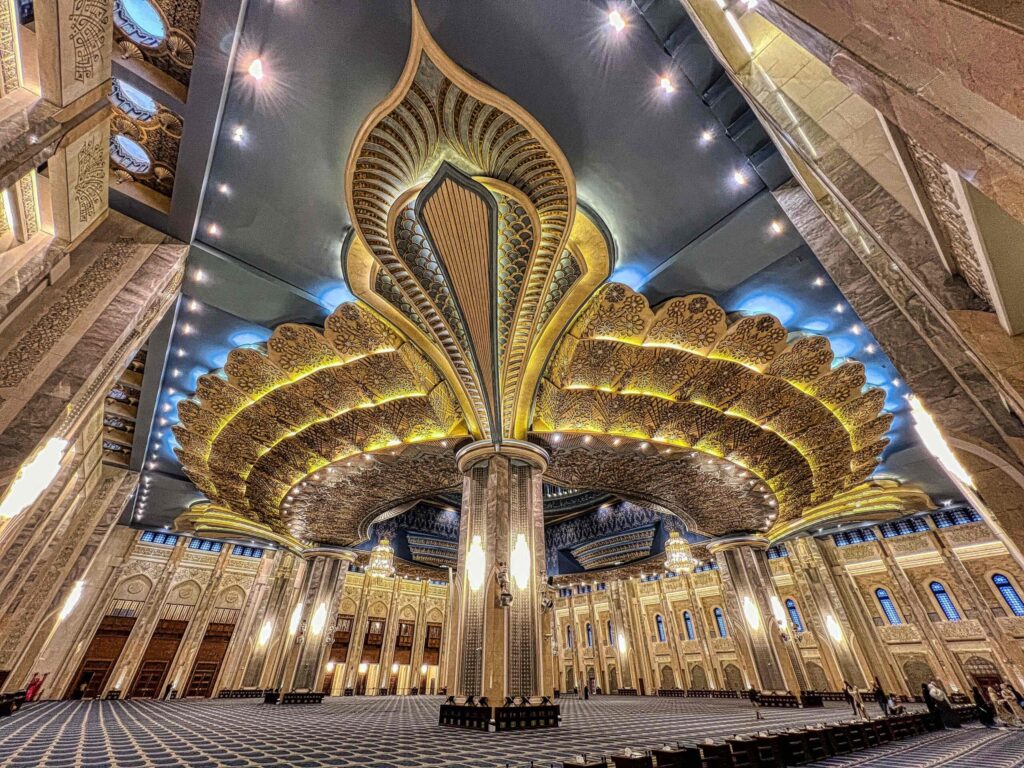
Kuwait
The phrase ‘culture shock’ doesn’t entirely convey the experience of arriving in Kuwait City from Egypt. We left our hotel in Giza, on the outskirts of Cairo; a taxi drove us down a 10-lane highway jammed with battered cars flying along at high speed. Horns were honking, drivers were swerving, and the highway was lined with people waiting for buses that simply stopped in the right-hand lane.
We rushed through the chaotic Cairo airport, boarded a plane, and just two hours later landed in Kuwait City, which could not have been more different. The city is clean, orderly, organized, and nearly perfect in its appearance.
Kuwait City exudes wealth. Our hotel was filled with Swiss bankers catering to wealthy, oil-rich Kuwaitis. The stores were filled with luxury goods, and even the Cheesecake Factory at the mall was beautifully upscale. The city’s affluence was evident everywhere we looked.
Kuwait City’s order and cleanliness were a refreshing change after the intense experience of Cairo. It was a place where everything seemed to work seamlessly, and the complete difference in atmosphere was both striking and soothing. The city’s impressive infrastructure and high standard of living were evident in every aspect of daily life, making it a fascinating place to explore and experience.
Our three-day visit to Kuwait City was too short to be restful. But we still needed a little downtime before we headed down to Africa. It was time to slow down.
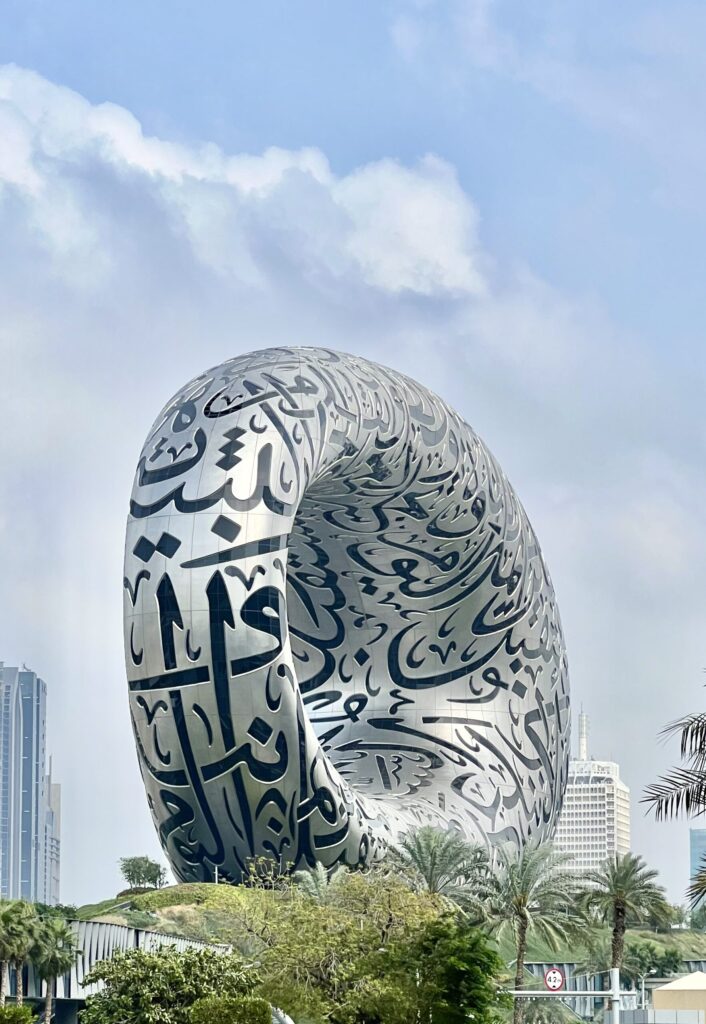
United Arab Emirates
Fast travel is exhausting. I’m not complaining—it’s a great problem to have and easily solved with a bit of downtime. But the constant moving, activities, touristing, and stimulation add up quickly. We needed a break, and Dubai was the perfect place for that. We restocked stuff we needed like deodorant and sneakers, visited doctors and dentists, and enjoyed some fantastic hummus.
Dubai is a great place to rest and recharge. With every type of hotel and cuisine available, great places for long walks, and fascinating people-watching opportunities, the city has it all. You can have anything delivered, making it perfect for just sitting back and watching the world go by while recharging your batteries.
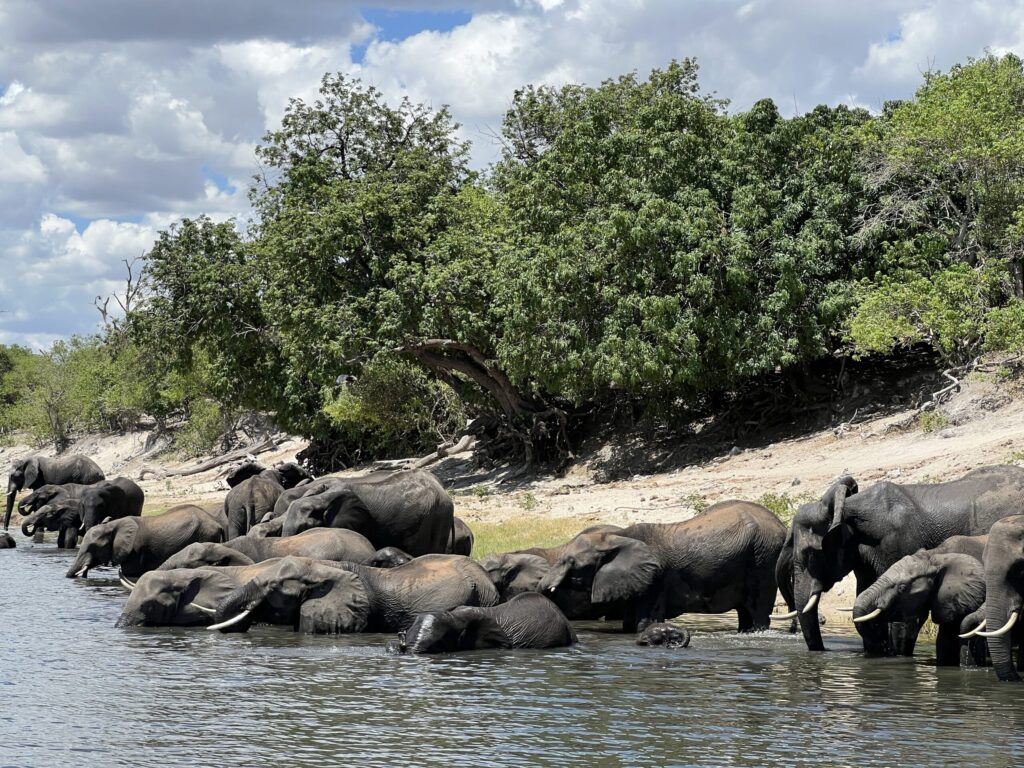
Kenya, Zambia, Botswana, Zimbabwe, Ethiopia, Seychelles
After chilling out in Dubai, we were ready to get moving, and that’s exactly what we did for a bit over a month as we explored parts of Africa.
In Kenya, we spent a few days in Nairobi, where we found some fantastic food, before heading out into the bush for a Masai Mara visit. Seeing elephants, lions, giraffes, Cape buffalo, and more in their natural habitat was incredible. We’d seen most of these animals before, but experiencing them from a luxury resort within a national park jam-packed with wildlife made it even more special.
Next, we headed to Victoria Falls, and it’s impossible not to be impressed by the sheer power and beauty of the water. Wow! We had a fantastic time exploring the area, soaking in the awe-inspiring views before moving on to Botswana for more wildlife adventures. Chobe National Park offered a unique experience as we toured the animal habitats by boat rather than safari trucks. The smooth ride made for an awesome way to visit and see even more animals, especially elephants and hippos, up close.
After our fill of animal adventures, we were ready to hit the beach but realized we’d have to change planes in Addis Ababa, Ethiopia. We decided to turn our layover into a longer visit to enjoy some delicious Ethiopian meals. We’ve loved Ethiopian food for decades, and it’s never better than it is in Addis. Satisfied and stuffed, we flew off to the Seychelles.
The Seychelles, even in rainy season, was a great place to relax, unwind, and catch up on work. We explored the main island, enjoyed the spectacular scenery, and watched storms roll in over the ocean. It was the ideal end to a whirlwind African adventure.
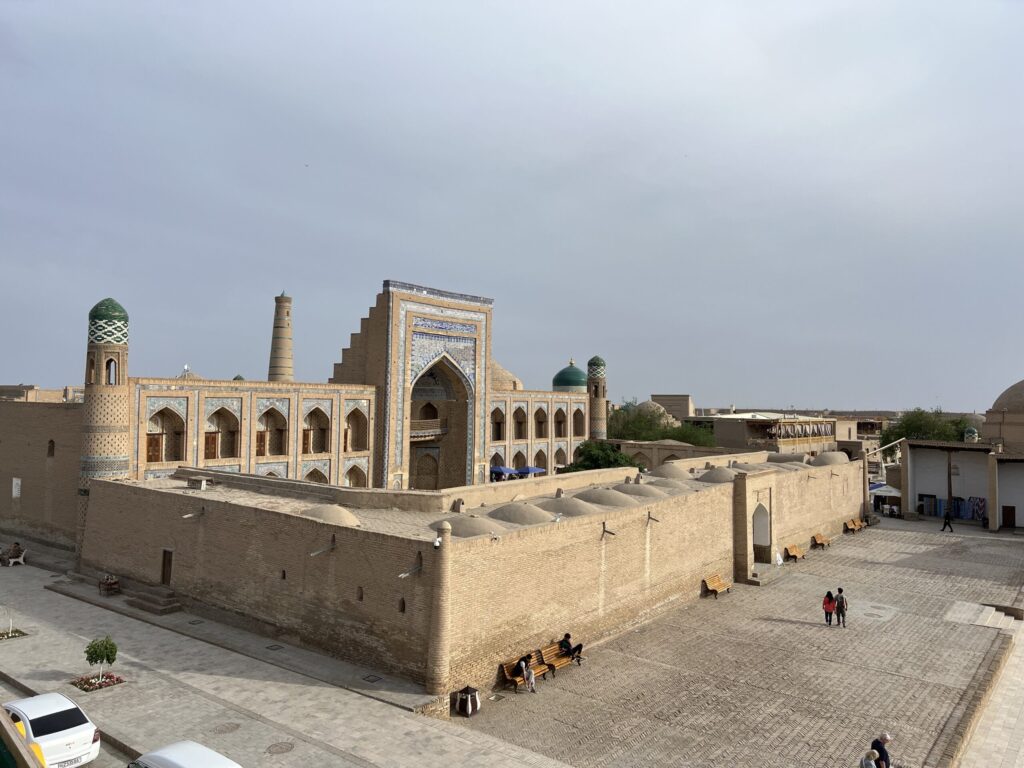
Uzbekistan
Next on our journey was Uzbekistan. We flew from the Seychelles, which made for an awkward transition since flights to Uzbekistan tend to land in the middle of the night. We had a 9-hour layover in Dubai, which added to the travel complexity. We made the most of our layover by visiting one of our favorite restaurants in Dubai. It’s owned by three Syrian brothers. Despite Syria’s troubles, it has produced some amazing chefs.
We finally arrived in Tashkent at four in the morning, only to find that our hotel had forgotten to send a car to pick us up. This turned out to be a blessing in disguise, as it introduced us to just how inexpensive Uzbekistan is. The hotel had previously offered to drive us from the airport for $45, but our impromptu airport taxi cost only $7. This was the beginning of many taxi rides in Uzbekistan, each costing as little as $2 for a half-hour ride.
Uzbekistan is off the beaten path, although it was highlighted in The New York Times “52 Places to Visit” in 2019, just before COVID. Despite the country not receiving a huge number of tourists, the ones who do visit are treated incredibly well. We found that hotel staff in each place we visited spoke excellent English and offered all sorts of guidance and help. The country has a well-worn tourist route that makes it an organized, orderly, and easy place to visit.
We started in Tashkent, where we wandered around the markets and explored the subway stations, which were built during the Soviet era. From Tashkent, we traveled to the ancient Silk Road cities of Samarkand, Bukhara, and Khiva, seeing all the historical buildings and beautiful tile work and meeting incredibly pleasant and friendly people.
The food was much better than we expected, although it was a bit challenging for Lisa, who is a vegetarian. Nonetheless, we enjoyed fascinating sights and appreciated the rich history.
Tashkent impressed us with its modernity and infrastructure, making it an attractive spot for digital nomads. However, Khiva was probably the most interesting and fun city to hang out in, with its well-organized UNESCO-protected tourist center that felt almost like a theme park. It was incredibly easy to visit, with a lot to offer in terms of historical and cultural experiences.
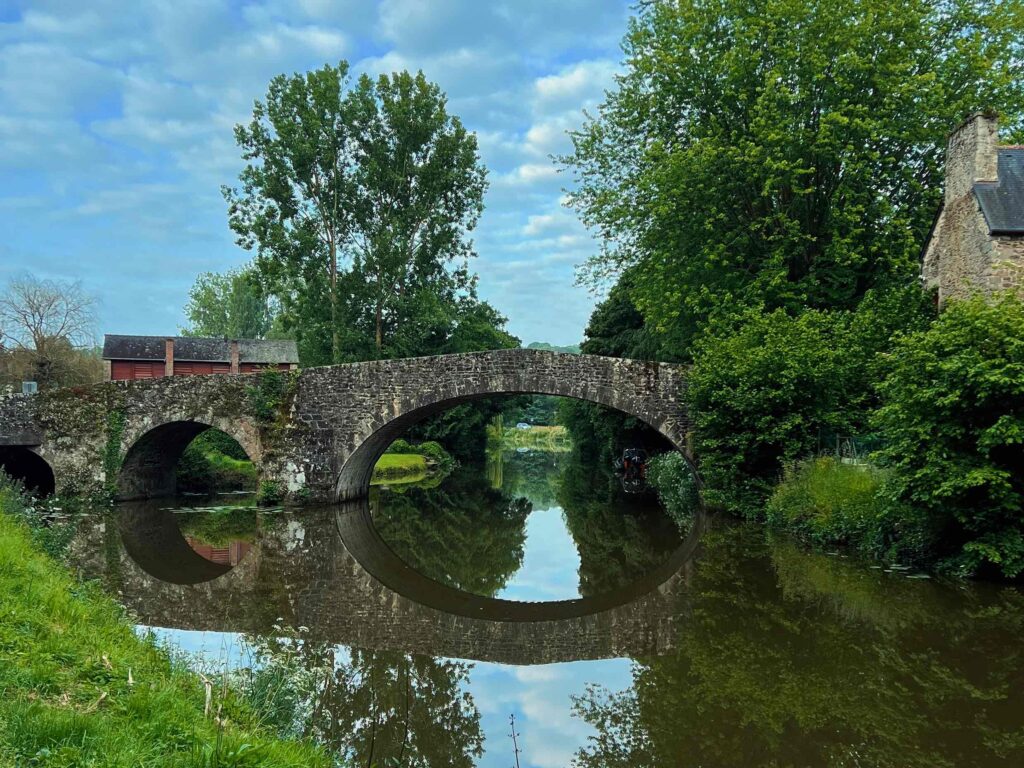
France
As I write this, we are in France. Our French adventure began with a week in Paris, where we hung out with the same American friends who visited us in Istanbul late last year. It was wonderful to reconnect and explore the city together. One of the highlights of Paris, for us, is always the pastry and chocolate. Lisa, being somewhat of an expert on both, ensures we spend a lot of time sampling these delights—for research purposes only, of course. We’re just doing our part to contribute!
After our friends left, we traveled to the south of France and spent a month in Sanary-sur-Mer in Provence on the coast. We chose this town because it won an award for having the best market in France, and it certainly lived up to its reputation. The scenery was beautiful, the food was delicious, and the market was fantastic. Being there for a month gave us time to slow down and get some work done. This marks the beginning of our plan to slow our pace a bit, shifting to longer stays in fewer places.
From the south, we traveled to a small town called Dinan in Brittany, where we are now. Seeing these smaller villages gives us a different perspective on the country than we might have had if our only experience was Paris. Dinan, with its medieval charm, cobblestone streets, and historic buildings, has been a delightful place to explore. It’s a different experience from the hustle and bustle of Paris, offering a very different view of French life.
France has been a great landing spot from a busy year. We look forward to continuing this slower approach for a while longer.
Moving forward
Looking ahead, we plan to continue our journey at a slightly slower pace, taking more time to immerse in each destination. The past year has reminded us of the value of balancing fast travel with periods of deeper exploration and relaxation.
We are planning to leave France soon, and unless things change, the next 12 months will take us to the Faroe Islands, Denmark, Azerbaijan, Kazakhstan, Armenia, UAE, China, Thailand, Indonesia, Singapore, Cambodia, Bhutan, Norway, the Netherlands, and Cyprus. While we aim to slow the pace a bit, curiosity and wanderlust inevitably tempt us to keep moving, exploring, learning, and growing.
If you’re curious to find out where we end up without waiting for my annual update, check out our continuously updated itinerary and subscribe to Lisa’s newsletter. She’ll keep you in the loop. In the meantime, we’d love to hear from you about travel ideas and are always happy to meet up along the way.
Our journey continues, and we look forward to sharing more adventures with you. Thank you for following along and being a part of our travel story. Safe travels and see you on the road!
2023 – 8 Years as a Digital Nomad Lawyer
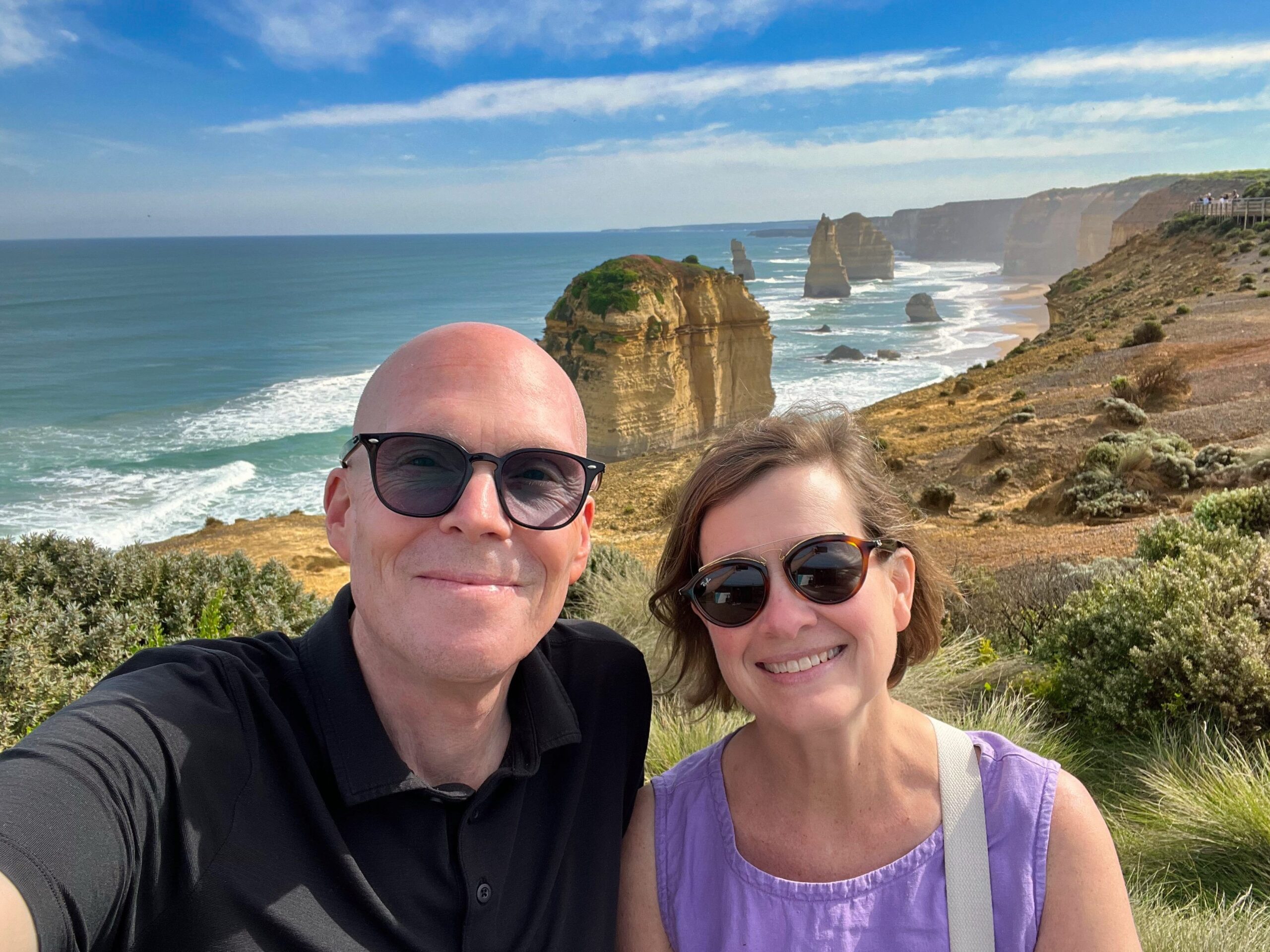
We’re just shy of 3,000 nights on someone else’s sheets.
Our wild, bed-hopping ride kicked off on June 23, 2015. Tonight, we’re hitting the hay for the 2,922nd time without the plush luxury of our beloved Sleepcomfort bed back in Raleigh, North Carolina. We still remember how the air whooshed out like a sigh of relaxation when we dialed in our favorite sleep numbers.
Since then, our dreamtime has been all over the place. We’ve slept in hotels, motels, quarantine facilities, dorm rooms, boats, ships, tents, airplane seats, cottages, apartments, and houses we’ve rented along the way.
Sure, we don’t always sleep as soundly as we’d like, but we love living footloose and fancy-free.
We have no intention of stopping. And, I guess unsurprisingly, we’ve gotten better at it.
We tested ourselves in Hong Kong
We spent January 1st of 2016 in Hong Kong. We returned for the start of 2023. Revisiting Hong Kong was a great opportunity to compare the us of 2016 to the us of today.
We’re different people this year than we were back then. We’ve grown.
In 2016, Hong Kong threw us for a loop.
One afternoon we timidly edged into the crowded entryway of a dim sum restaurant. We were bustled into an elevator and taken to the third floor. A host rushed us to a table, and cart-pushing servers instantly started doling out mysterious plates of food. Was that a chicken foot? Lisa is a vegetarian. Things started badly, and the tension began to build.
Then, completely embarrassed, we realized we were drinking the hot tea that we were meant to use to clean our dishes. Biting into a dumpling, Lisa became convinced that she was eating pork. A helpful Chinese guy leaned over and tried to help—in Chinese. It wasn’t helpful; it was awkward and stressful.
Lunch ended, but Lisa was still hungry, and our departure from the restaurant did not release the tension. I said something I thought was funny, and kaboom!
The marital tension exploded into a big argument on a Hong Kong street corner. We stormed off in different directions. I can’t remember what we argued about, but I’m sure I was right.
Hong Kong challenged us in 2016. The language barrier was impenetrable, the transit system was indecipherable, the restaurants were overwhelming, and our Airbnb fire alarm wouldn’t stop going off. We were a little freaked out that week. While we had a vague sense that Hong Kong might be fun if we could figure it out, we were really happy to leave and go somewhere easier.
This time, seven years later, we had a blast in Hong Kong. The people were great, the transit system was easy, and we ate in all the restaurants without incident (except for one little noodle problem that got resolved by a waitress who just shook her head in disbelief—we found it hilarious, rather than embarrassing).
We’d grown. We handled the challenges, enjoyed the novelties, and loved the city. Many years of travel have taught us many lessons.
We didn’t argue a single time, and we started missing Hong Kong the moment we left.
Missing things
Speaking of missing something—let me tell you about our luggage.
Last fall, we boarded a flight in Moldova. We had a tight connection in Vienna on our way to Prague.
Unfortunately, our checked bags stayed in Vienna.
We had nearly nothing with us except our computers and credit cards.
For the first few days, we kept thinking the bags would show up shortly. We hesitated to act. We didn’t buy clothes. We washed our underwear in the hotel room sink.
On day three we kicked into gear and stocked up. We had no choice. We patched things together for our two weeks in Prague and then flew off to our next stop in Helsinki.
We got kind of used to our stuff being gone—it was like we had started over. I bought an electric razor. Lisa shopped for sunscreen. We replaced our suitcases. We discovered that having next to nothing was manageable, and that we were okay.
Then, twenty-three days later, our bags showed up in Finland, out of the blue.
Lessons learned
We’d learned back in 2015 that giving away all of our possessions was something we could handle. It had been a bit uncomfortable at first, knowing that everything we owned fit into a carry-on bag, but we adjusted. We got used to the feeling of being untethered.
But having that last little bit of stuff taken from us was a new set of lessons. Checking into a hotel with nothing but a laptop, jacket, and sunglasses felt odd.
We survived. We bought the essentials, and proved to ourselves that all we really needed was a credit card.
Our attachment to our stuff proved less important than either of us could have imagined.
We’ve grown, changed, evolved…
Traveling for so many years has changed us. We’re different people than we were back in 2015. Mostly we don’t see how we’ve changed, but the Hong Kong experience showed us some things about ourselves.
The people we used to be were very different. Our lives have been enriched by the experiences we’ve had in the last eight years. The missing luggage also gave us a glimpse into ourselves.
It was weird to think back to our fully stocked suburban house and jam-packed attic, and then find ourselves without toothpaste, deodorant, or anything else.
We’ve reached a point where we kind of enjoy not having things. It’s light, nimble, and freeing, but it’s also pretty easy to get very attached to having clean underwear and a fresh shirt. We’re different but we’re also the same.
Let’s just say that for now, we’re carrying on our carry-ons. We’re keeping our luggage close because we may be minimalists, but we still like having our things.
So far, I’ve mentioned a few of our stops this year: Hong Kong, Moldova, and Prague. Let me fill you in on the other places we visited.
This past year in a nutshell
The last time I wrote one of our nomad updates we were hanging out in Brasov, Romania. We ended up staying there for a month. The summer weather was comfortable, as we had hoped. Let’s begin our journey from the past and move swiftly towards the present.
Romania
We picked Romania for the cool mountain air in Brasov, to avoid the summer heat at lower altitudes. That worked out well and we stayed comfortable and were pleasantly surprised by some terrific restaurants we discovered away from the tourist areas.
We got up into the high mountains and found snow. We took road and train trips to check out the castles and vampires near Sibiu and Sighisoara. We spent some time in Bucharest, and were overall quite impressed by the country.
Moldova
Then it was time to head to Moldova. People in the capital, Chișinău, had heard loud bombs dropping near the border with Ukraine in the early days of the war. We saw plenty of evidence of refugees fleeing the war as we traveled from Romania. It’s a sad situation for so many folks.
We were pleasantly surprised by Chișinău, which is a beautiful European city. It doesn’t have an Eiffel Tower or anything, but it has lots of parks and boulevards, along with a complicated history and the largest Jewish cemetery in Europe.
The unrecognized breakaway state of Transnistria is nearby. We spent a day touring Transnistria and it was fascinating to cross the border and see the Russian, Moldovan, and Transnistrian troops sharing authority.
It didn’t hurt that Moldova is an amazing bargain; excellent food was incredibly inexpensive.
After a short visit, we headed for the airport, unwisely checked our bags, and took off for Prague.
Czech Republic
We landed just a few hours later, but the luggage carousel spun and spun and our bags never came through the opening. We checked and saw our Apple Airtags pinging from Vienna, where we’d changed planes.
Landing in Prague without luggage was disorienting, but it provided some structure for our visit. We spent part of each day ensuring we had something to wear the next day. Sometimes having a mission makes the visit more exciting and gets us off the beaten track.
Prague is filled with tourist attractions and the track is definitely beaten. There is so much to see in this city, and even though it can get crowded, it’s definitely worth a visit. The city is full of history and has a beautiful location. During our frequent shopping outings, we discovered several local festivals and markets.
We took a quick road trip down to Vienna in a futile attempt to recover our luggage. We made the most of it by stopping for lunch in Bratislava, Slovakia. Now we can tell people we’ve been to Slovakia; I think that makes us sound like adventurers.
Finland
We landed in Helsinki just after the young prime minister got caught up in a controversy for dancing at a party and being fun and interesting. That was our first clue that Finland would be a good time.
Within hours I’d wandered into the nearby public library. It was packed—on a weekday—with kids, college students, adults, and seniors. It was a vibrant, perky, positive environment filled with way more than books. Visitors can reserve and use kitchens, audio and video studios, musical instruments, 3D printers, sewing machines, and so on. It’s amazing what government can do when it works well. Maybe all political leaders should dance more.
After hanging out in Helsinki for a couple of weeks, we took the ferry over to Tallinn.
Estonia
Tallinn is a small, very relaxed Northern European city with lots of tourists, many of whom visit by cruise ship. It has all the usual Europe things: a beautiful old town, historic churches, museums, dramatic government buildings, a HoHo bus, plus chilly weather in September. We stayed for a couple of weeks in the old town and lived within the history.
We visited a former KGB prison that featured some outstanding exhibits. Nearby is the Russian embassy, which is currently surrounded by barriers and graphic protest signs affixed by opponents of the war in Ukraine. The KGB history and the photos of current war atrocities create a tense environment in a tiny country that borders Russia.
The weather and the politics were chilly, and after a couple of weeks we had used up the number of days we’re permitted to stay in Europe. It was time to leave before we got kicked out.
Scotland
We landed in Edinburgh, where we’ve spent considerable time on many visits. We love the city despite it being chilly and wet. It’s comfortable, the food is delicious, and the people speak a language closely resembling English.
We keep returning to Edinburgh because we often need somewhere to go when we run out of Schengen time. The UK isn’t part of the Schengen agreement. We’re only allowed to stay in the Schengen Area for 90 of every 180 days, and we somehow keep running up to the limit right before we head back to the US for our annual visit. Edinburgh is in the right place at the right time for us.
USA
We return to Raleigh once a year for a few weeks. It’s an opportunity for us to catch up with old friends, visit with family, and see our doctors for annual checkups. Our visit was, as usual, lots of fun (except for all those medical visits).
I can’t help but mention, on the topic of medicine, that we have seen lots of doctors in lots of countries over the past eight years. Our bills for those treatments are typically under $100. Even in Australia and Japan, the visits have been relatively inexpensive.
During our time in Raleigh, Lisa had a quick medical procedure that ended up involving an overnight observation in the hospital. I did my part to run up our bills as well, having a variety of medical tests. The total for our Raleigh medical visits exceeded $125,000. Ouch!
It blows my mind that we Americans face these kinds of bills. Thankfully that total was negotiated down somewhat by our insurance company, who then paid the balance. But even after the discount the charges were incredible.
Mexico
While researching flights from Raleigh to Asia, I discovered that prices were much lower if the flight originated in Mexico rather than in the US. That inspired our visit to Mexico City. I figured if we were going to fly there anyway, we might as well make the most of it, so we stayed for a few weeks.
Our visit coincided with Halloween, the Day of the Dead, and a Formula 1 race. All of that festivity made for a great visit. The Day of the Dead celebrations alone would have made the stopover worthwhile. We were joined by our youngest child, Lane, who speaks a fair amount of Spanish and made our time in Mexico City even more special.
We’ve always enjoyed Mexico, but this visit turned us into superfans of the country. Mexico City is such a quick and easy flight from most of the US that we are encouraging everyone we know to go visit.
I could go on and on about all the great things a tourist can do in Mexico City. That list would include Chapultepec Park, the anthropology museum, and the Pyramid of the Sun. But at the top of the list would be two of the best restaurants in the world—Pujol and Quintonil. Both were quite the experience.
We left Mexico City and spent nearly two weeks down in Oaxaca, consuming all the Mexican food we could hold. Oaxaca is the center of Mexican food culture and it’s all delicious. Unfortunately, a garbage strike marred the first few days, when the fragrance of aging garbage wafted through the open-air restaurants. Thankfully the strike was settled, the garbage was collected, and we were able to enjoy our tacos.
Oaxaca is a picturesque, colorful, touristy town with great restaurants. The nearby ruins are a big attraction and are easy to visit. We loaded up on Mexican food, then began gearing up for a pivot to Asian food.
Taiwan
After three weeks in Taipei and a nine-day road trip around the country, I can report that all is well in Taiwan. It’s a great country with amazing food and the nicest, most helpful people you’d ever want to meet. Plus, at least in the urban areas, there are plenty of English speakers.
I came to think of Taiwan as the most frictionless place we’ve ever visited. It just works. Everything is smooth. That extends from restaurants to transit, hotels, retail, and laundry services. It’s such an easy place to live.
Our road trip took us down the east coast to Hualien City, Yuli, Taitung, Kenting, and Kaohsiung. We saw 13,000-foot-high mountains and breathtaking beaches. We turned in our rental car in the south and took the high-speed train back up the west coast to Taipei.
Someone recently asked me if Taiwan is a safe place to visit. We felt incredibly safe.
Hong Kong
The contrast between Taiwan and Hong Kong is interesting. The two places are very similar, but also very different.
Taiwan has a culture heavily influenced by China and Japan. Hong Kong has a culture heavily influenced by China and the United Kingdom.
Because we spend so much time and energy thinking about and eating food, we compare it to the difference between eating Taiwanese food at Din Tai Fung, and eating at your favorite dim sum restaurant. Those meals are not the same, but they’re not all that different. Both have dumplings and noodles, but the preparation is different, leading to localized textures and flavors. It’s hard to capture the distinctions, but we can say that both are terrific places to visit and they both have delicious food.
We enjoyed a harbor view of Hong Kong for Christmas and New Year’s. It was an exciting time to be in the city, in the first days after their post-Covid reopening, and we thoroughly enjoyed ourselves, but we were blowing our budget in Hong Kong and it was time to head to less expensive territory.
Vietnam
Upon landing in Ho Chi Minh City, we promptly checked into the elegant Park Hyatt Saigon. The same hotel would have cost a fortune in Hong Kong but because we had relocated to Vietnam, it was a bargain.
We visited Vietnam for the first time about six years ago, and fell in love with the country. We’re always suggesting it to friends as a destination, but we haven’t been back ourselves in years so it was time to go.
It was fantastic to return. The energy, people, and food make Vietnam a wonderful destination. We returned to Saigon and ate at some of the same restaurants we had been to before. We went back to the war museum. We wandered the streets and soaked it all in. Saigon has an energy that’s hard to capture in words.
After a week in the city, we traveled to Mui Ne, a small beach town several hours away. We checked into a hotel owned by a couple we had become friends with during our last visit. It’s not often that we get to spend hours and hours chatting with someone who actually lives in the place we’re visiting. Those conversations happen far too infrequently. Hanging out with this couple every day for a week renewed and solidified our affection for Vietnam.
Bangkok
Speaking of affection, we left Vietnam and headed for Thailand. While we love Thailand, we’re even more attached to our eldest child, who has lived there for nearly a decade. Anytime we’re on that side of the planet, we drop in for a visit.
We had a great time seeing Toby, bopping around Bangkok some, and eating lots of Thai food. We already have another quick visit planned for next month.
Brunei
While we had many good reasons for going to Thailand, we had very few for going to Brunei. Our primary justification for the visit was that it’s one of the few countries in the region that we had not previously visited.
Brunei is a small, fascinating country led by a very wealthy Sultan. We wandered around looking at amazing buildings, hiking in the jungle, and spotting crocodiles and proboscis monkeys.
I’m not sure that we’ll be returning to Brunei anytime soon, but I’m glad we spent five nights checking it out.
Boracay, Philippines
Then it was off to the Philippines. It’s another country we’ve never visited before, but it’s one that we want to return to at some point.
We spent one night in Manila before taking a quick flight to Boracay Island, where we checked into a very nice oceanfront resort with a big pool. For two weeks we did little other than sit by the pool, eat Filipino food, and watch the sun go down over the ocean. I can tell you that Boracay has stunning sunsets.
Australia
After two weeks of relaxation on Boracay it was time to move. We took the long flight to Australia and settled in for a week in Sydney. We did lots of wandering around and particularly enjoyed seeing the WorldPride festivities. I had visited Sydney before but Lisa had not, so it was fun showing her the Opera House, Bondi Beach, and the other hot spots.
New Zealand
On the map, New Zealand looks pretty close to Australia, until you check your plane ticket for departure and arrival times. It’s further than you might imagine.
We headed to Christchurch and picked up a car for a two-week road trip on the South Island. We stayed in tiny motels and did lots of driving and hiking. We moved fast, spending just one or two nights in each spot. We covered a lot of ground as we gawked out of the car windows. The scenery is beautiful and, in retrospect, we could have stayed longer on the South Island.
Instead, we flew to the North Island. The North Island was enjoyable but not as beautiful as the South Island. We spent another two weeks driving around; the highlight was Cape Reinga at the island’s northern tip. The views from there are nothing less than spectacular.
Then it was time to fly back to Australia.
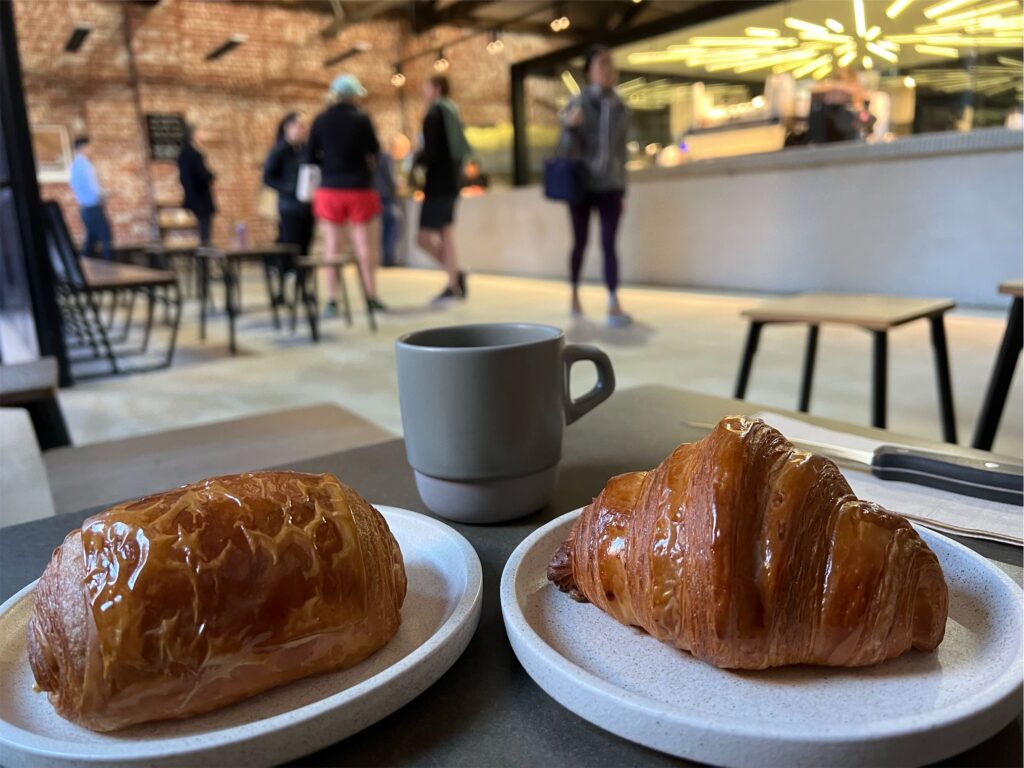
Australia
After all that driving in New Zealand we were ready to slow the pace just a bit.
We spent a week in Adelaide, where Lisa got to hug a koala bear. Adelaide is a beautiful, calm, clean, and organized city that makes visiting pleasant. Then we flew from Adelaide to Melbourne and settled into an apartment for a month.
Our principal reason for visiting Melbourne was the world-renowned croissant shop Lune. We ate croissants every single day of our 28-day visit.
The croissants were the highlight of our time there.
Melbourne is so much like most of America that it feels incredibly familiar and predictable, which makes it an effortless place to visit. We understand the food, the people, the language, and the culture, so after four weeks of chilling and eating croissants, we were energized and ready for adventure. We hopped on a plane headed for Japan.
Singapore
On the way to Japan we had a quick stop to make. Our original flight to Japan was in economy and involved a red eye, which we were dreading. I eventually discovered a routing change that had us land in Singapore at about 9:00 pm and take off the next day at about 2:00 pm, allowing us to sleep in a comfortable bed in an airport hotel.
That worked out beautifully. We got a good night’s sleep and explored the Singapore airport, which is often rated as the best in the world. There’s an incredible waterfall in the shopping area, along with a butterfly house. After a great day in the airport, we headed off to Japan.
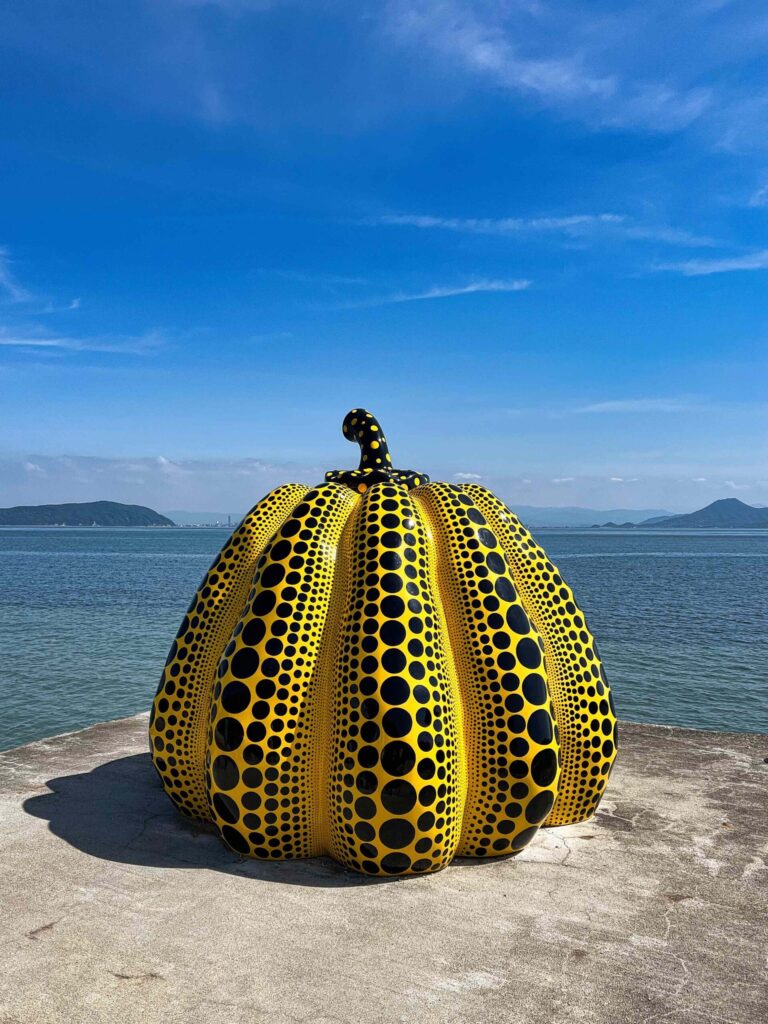
Japan
Japan has been a whirlwind. We landed in Tokyo and two days later hopped on a bullet train for a month of visiting Kyoto, Osaka, Naoshima and Teshima Islands, Hiroshima, and Nagasaki.
Now we’re in Tokyo. We’re enjoying a month in the world’s biggest city, before heading up to Hokkaido in a week or so.
We’ve had enough time to catch up on work, get a little rest, and hit a bunch of tourist attractions. The highlight so far was a Tokyo Giants game. The fans make the game an amazing experience.
We’re soaking in everything Tokyo has to offer. It’s a huge city and we’ll never see it all. But we ride the subway every day, exploring neighborhoods and stumbling into many exciting things.
Planning the past year
The pandemic now feels pretty much over. China is open and we’re seeing fewer and fewer masks in Japan. But Covid’s impact on travel will continue to influence our plans for the rest of this year.
We deliberately booked much of our travel for late 2022 and all of 2023 back in the fall of last year. We’d been watching the impact of travel reopening—especially as travel between the US and Europe increased. We could see pent-up American demand driving up prices and crowding destinations across Europe.
The writing was on the wall as China geared up to unleash its population back onto the travel world. We booked flights and hotels before the prices went up. It didn’t hurt that we were able to lock in a great exchange rate when the US dollar was so strong last fall.
We booked travel to China for this spring, hoping that might work out, but we also booked parallel plans. Ultimately we decided that China might not be the best choice this year, due to the Covid infection rates when they ended mitigation measures. It was a good thing we had made those alternate plans.
Thankfully our booking decisions mostly worked out well. We had locked in some fantastic bargains before prices skyrocketed. I giggled when we checked into our mini-suite in one Japanese hotel for $45 per night, including breakfast. The price had soared since we booked.
Moving forward
Each year, our philosophy of travel planning evolves a little bit more. We learned quite a bit and refined our approach over the first five years, and thought we had worked out a pattern that met our needs. Then Covid came along and broke the system.
Now we’re dealing with the impact of Covid on demand for travel, but we’re also paying attention to the possibility of an economic slowdown. We’re also observing the effect of global politics, which makes some destinations more logistically challenging, and overloads others with excess tourists.
Of course, we’re also paying attention to our personal preferences and interests. Lately, we’ve been looking toward building some longer stays into our plans. The quick pace of the last 18 months has worn us out a bit. But there’s always some tension between our interest in seeing new places and our need to avoid exhaustion. We’ve been struggling to find that balance for eight years now, and I doubt we’ll ever get it just right.
We plan to pack up and leave Japan next month, and pop in for a quick visit to see Toby in Bangkok. Then we’re off to Italy, Austria, and Turkey before our annual visit to Raleigh in October. Then we’ll repeat Mexico City. From there, we’re not sure yet. I’ll let you know what we decide—in June of 2024.
If you’re curious to find out where we end up without waiting for my annual update, check out our continuously updated itinerary and subscribe to Lisa’s newsletter. She’ll keep you in the loop. In the meantime, we’d love to hear from you about travel ideas and are always happy to meet up along the way.
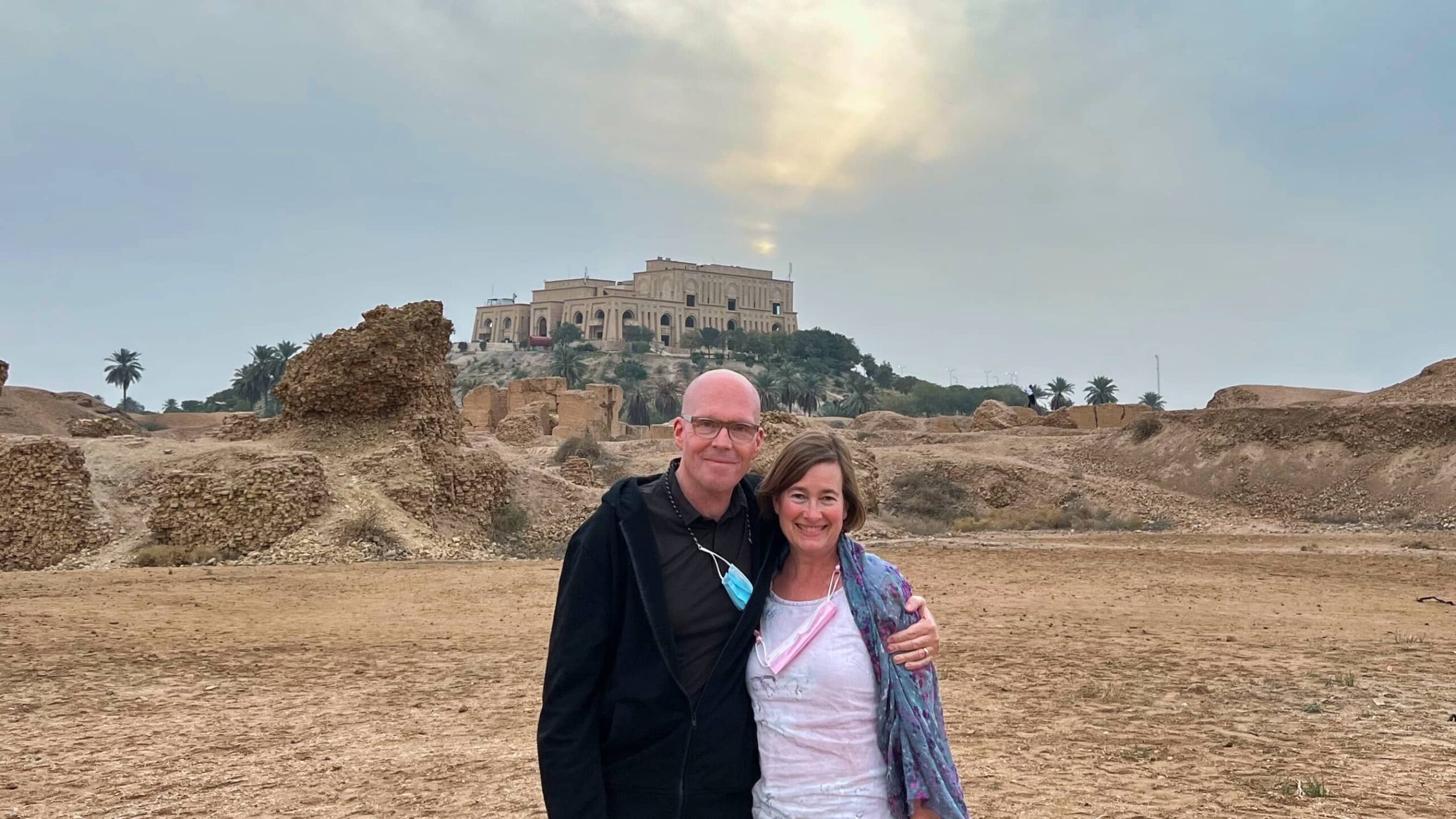
2022–7 Years as a Digital Nomad Lawyer
Americans keep telling us that Covid is over and it is—kinda—in some places. But not everywhere. We’ve continued to need masks, vaccine passes, and special permission to enter many countries. The conditions and restrictions are evolving but many challenges remain. The big one, of course, is getting covid.
We got it (we blame the Russian tourists). They were packed into our hotel in Phuket, Thailand in January. Like Eve with the apple, Lisa got it first and gave it to me. Having been vaccinated repeatedly, we had mild cases and bounced right back.
But Covid continued to complicate our lives. Our younger kid, Lane, visited us in Naples, Italy, and so did Covid. Lane spent an extra five nights alone in an Airbnb waiting to test negative for re-entry to the US.
This past year in a nutshell
Between concerns about Covid and the need for medical treatment, our last year has been a pretty even mix of moving fast and staying put. We spent a fair amount of time in Iceland and then in Thailand, sitting still, so we were ready to get back to moving and that’s exactly what we’ve done. Once we got the green light to go, we picked up the pace a lot.
Last time we talked was near the end of our time in Iceland. While we loved it there, we had been vaccinated by the kind Icelanders, and after 3.5 months, we were ready to get going again. The Covid numbers and the tourist numbers were down in Europe and the cheap prices and short museum lines beckoned.
But…
The foot hanging over our heads
Throughout our time in Iceland, we had Lisa’s foot hanging over our heads. She’d been experiencing foot pain since we left Thailand in April of 2021. An MRI, and a second MRI, showed that surgery was a strong possibility.
The foot impacted our time in Iceland, making hiking difficult, but we were hoping to get through the summer before the surgery became necessary. Lisa was still hoping the foot would heal, so she wouldn’t need to have the surgeon fix it.
The Icelandic doctor said there was no rush, so off we went from Reykjavik to Venice. The adventure was underway after chilling out, literally, in cold Iceland. We picked up the pace knowing that the foot might soon slow us down again—it clearly wasn’t done with us. The recovery time for surgery would be many months, but in the meantime, we had places to see, things to do, gelato to eat. Off we went.
The itinerary—July to September 2021
Italy: We flew to Venice and checked into a very dark hotel room. Normally, we’re not big fans of a dark room but after nearly endless daylight in Iceland, we welcomed the darkness.
Venice was quiet. We were able to visit the tourist attractions without crowds. That was terrific. We were also able to spend time in Florence and Bologna. Visiting Florence without crowds was a gift. It wasn’t crowded but it was, however, hot.
Austria: We caught a short flight to Vienna and spent a week doing tourist things. Again there weren’t many tourists and that made the visit to the city a pleasure.
Then it was time to cool off. A quick train ride took us high up into the Alps. We spent a few weeks in Mayrhofen riding the gondolas up a different mountain each day for a long hike followed by lunch with a view. Lisa was able, powered by the amazing scenery, to wobble along in her hiking boots.
France: We wrapped up the summer with a month in Paris. My mom joined us for part of that visit. I visited Berthillon for ice cream twenty-eight days in a row. The queue was short of tourists so I kept going back. I also visited quite a few pastry shops. Thankfully lots of walking helped work off the snacks. But after four weeks it was time to go. We grabbed a flight back to the US for visits with our families and the orthopedic doctor.
Derek joins the family
In October the surgeon worked his magic and replaced Lisa’s tendon with a donor tendon, which she named Derek. He’s good and does exactly what tendons are supposed to do. But he didn’t make it easy.
Lisa had the surgery in early October and could not put weight on the foot. That meant using a combination of crutches and a knee scooter for six weeks. One of the benefits of living in hotels is how easy it is to book an “accessible” room. I’m not sure how we’d have survived without the special handrails in the bathroom.
Lisa continued to recover but would need months of physical therapy in order to get back on her feet. We headed off to Thailand where we knew she’d get the care she needed allowing us to take a pass on the North Carolina winter which was drawing near.
On the road again
Flying to Thailand was a joy. We took advantage of the first-class treatment offered by the airlines when someone is encountering mobility issues. Japan Airlines did more than we could have imagined making our journey easy.
Thailand: We picked Thailand for the recovery for a couple of reasons. We knew physical therapy would be different than in the US. There is something magical about the Thai people. They are very hands-on, compassionate, and gentle. The idea of getting the therapy in a Thai hospital was very appealing.
Thailand was also appealing because the hotels offer terrific service, plus it’s so easy to have meals delivered or to grab a taxi for quick trips. It’s an easy place to navigate and Lisa took full advantage of the help.
We underwent a brief quarantine to enter the country, then stayed in Bangkok for six weeks. The doctor treating Lisa had trained at Duke under Lisa’s surgeon. The physical therapy worked quickly and we could see progress with each visit. We knew we had made the right call by flying to Thailand.
As the holidays approached we flew down to Phuket where our eldest child, Toby, is living. The physical therapy continued and there was even some beach walking because sand challenges the foot muscles.
Getting Covid slowed us down a bit and therapy was skipped for a week. But, that was just a short detour on the path to recovery.
A spring in her step—recovered!
By February Lisa was ready to go, and we’d been rewarded with a negative Covid PCR test. She donated her boot and her crutches and we headed for the airport.
While Lisa didn’t entirely trust Derek she was ready to put him to the test. She’d written a thank you note to the donor family and it was time to put some mileage on the foot.
The itinerary—February to Present
In the past, we’ve generally traveled slowly, staying for a while in each spot. It’s fairly common for us to find housing and plop down for a month, visiting the same restaurants a few times each, making a friend or two at the parking ticket office, and figuring out the locations of the public toilets. But Covid-plus-Derek had slowed us down and we were raring to go. We started moving much faster than usual.
The list of places we have visited this past year is long—much longer than in prior years. We’ve been moving quickly, and we’ve had some great experiences, but it won’t surprise me if we slow down a bit going forward.
Here’s where we’ve been lately:
UAE: We flew from Bangkok to Dubai for a whirlwind visit. We’ve got friends we wanted to see there plus the 2020 (delayed until 2022) World Expo was on. On top of that, we had a bunch of free night certificates for Hilton and IHG Hotels to use up before they expired. Dubai is a great spot for luxury hotel stays since every brand has a presence there.
Our visit involved lots of packing and unpacking. We slept in four different hotels over twelve days. The Expo was fantastic and we enjoyed seeing our friends. The most unusual hour of the visit was spent in the Dubai Abaya Mall where Lisa bought the clothing required for our next stop.
Saudi Arabia: We landed in Medina and jumped into a taxi headed for the Hilton. The taxi promptly rear-ended the car in front and we evacuated on a four-lane road jammed with rush hour traffic. It was quite something to watch Lisa roll her suitcase through traffic while covered in her new Abaya dragging along on the road surface.
We arrived at the Hilton in an Uber and approached the front desk. Within moments we were in a different Uber headed away after the hotel informed us that we non-Muslims would have to stay elsewhere. It was a little awkward but handled professionally and we understood that we needed to comply with the law. A Marriott was just a couple of miles away.
Over the next couple of days we toured Medina and got a glimpse into the mosque being expanded to accommodate 1.8 million simultaneous worshippers. We then rented a car and headed up to Al Ula to see the ruins, the mountains, and the desert. It’s fascinating to see Saudi Arabia opening up to tourists and Al Ula is being expanded with new hotels and restaurants. Things are, hopefully, evolving in many ways.
Bahrain: We only spent a few days in Bahrain and it was a bit of respite. Arriving at the brand new airport was impressive. The hotel was nice. The malls are beautiful. Bahrain reminds of us of Dubai but in the early stages. We had some great meals and got mentally prepared for Iraq.
Iraq: We got off the plane in Bagdad expecting to be greeted by a hotel representative we’d paid to walk us through the cumbersome visa process. That person was a no-show so we waded into the chaos. An hour later we emerged with a visa and headed through immigration. Then we had to find a taxi because the hotel had failed us on the arrival service. It wasn’t a good start.
It got more interesting when the taxi pulled into a concrete bunker outside the hotel. The taxi hood, trunk, and all doors were opened as the armed guards searched and the dogs sniffed. All was good, we got checked in and went to bed.
The next day started off right with the hotel providing a great buffet breakfast. We let them off the no-show airport hook.
Off we went touring the cradle of civilization seeing ruins along with one of Sadam’s palaces. We peered out the car windows at more weapons, bunkers, and watchtowers than we’d ever seen. We toured around the region for a couple of days and were stopped at checkpoints about twice per hour. It was fascinating.
We had dinner on a raft near the confluence of the Tigris and the Euphrates and then hit the Starbucks on the way out of town. We flew off for Egypt where things were crazy in a different way.
Egypt: I’ve now spent a cumulative total of a several months in Egypt over the years, so I’m used to the chaos. It has a frenetic pace I find energizing. It’s a fun city to wander if you’re good with stepping into the insanity. It’s not for everyone.
We spent some time in Cairo and then took the train to Alexandria, a city neither of us had ever visited. The train was dirtier and took much longer than expected and we bailed on the return trip four days later and took a taxi back to Cairo where we loaded up on our favorite Egyptian food—koshari—and bought some plane tickets.
Buying the plane tickets proved to be a challenge. We needed a flight on Air Algerie to Algeria. They won’t accept online payments which took me a while to understand because who doesn’t accept online payments? Apparently, they only take Algerian credit cards.
After four trips to the Air Algerie office in downtown Cairo, two of which required bringing big piles of filthy and tattered Egyptian pounds, I secured the tickets. It was a step backward in time and made us wonder how things might go when we landed in Algiers.
Tunisia: We flew from Cairo to Tunis which I’d visited ten years earlier. This was Lisa’s first visit. Not much has changed in the intervening years except that the most important museum in the country, a big item on Lisa’s agenda, was closed due to political shenanigans.
We spent nearly two weeks exploring Tunis and road-tripping to ruins outside of the city until my mother came to visit. Her arrival coincided with a move over to the coast and an apartment in Sidi Bou Said. Ramadan commenced and the restaurants closed. That’ll probably be our last trip to a Muslim country during that holiday. It gets complicated.
Italy: From Tunisia we flew to Italy for a planned meetup with Lane, our younger child who flew from the US to visit. Lane visited Paris before joining us in Naples for pizza. We suspect the hostel in Paris was the spot where Lane picked up Covid. The fact that we didn’t catch it from the kid was a miracle.
Before Lane tested positive we ate lots of pizza, visited Pompeii, toured the Amalfi coast, and wandered the city. It was a great visit despite the virus, but eventually we waved “buh-bye” and headed off (after repeatedly testing negative).
We left Lane behind waiting for a negative Covid test, and took the train to Milan where we started a two-week road trip through the Cinque Terra, Modena, Ravenna, and Perugia. Perugia was the high point for me as a lawyer-tourist, because I walked by the house where Amanda Knox didn’t kill her roommate.
Bouncing from Egypt and Tunisia in North Africa over to Italy is a bit of a culture shock but we quickly adjusted. Now it was time to do the transition in reverse and head back to Africa. That adjustment is harder.
Algeria: Why go to Algeria? I’m not always sure how we end up in the places we visit. We had an interesting time, so I’m glad we went. Will we go back? Well, maybe we’ll go visit Sefar in the south next year. We’re not sure. But Algeria doesn’t hold broad appeal as a tourist destination.
We flew to Constantine and took two days of long drives out to the ruins of Djemila and Timgad. They were impressive and worth the trip.
But, Algeria is a hassle. I’ve mentioned the flights. Getting cash in the country is equally challenging. The required visa is a similar obstacle course of expense and bureaucracy. We applied for a single entry visa for our trip. We ended up with a two-year multiple entry visa. Maybe we’ll head back in order to maximize the value of our investment. But, maybe not.
Spain: We flew to Madrid from Algeria mostly because it was easy to get a ticket. After the giant hassle of buying the tickets to Algeria on Air Algerie I just wanted to go online and book something. I saw a points deal for Madrid and we were booked in a click. Lisa had been wanting to go back to see a particular museum. We’d done our time in Muslim countries and scurried toward pork and wine and beer. The restaurants were crowded with American and European tourists making up for lost Covid time.
Greece: We decided to escape the crowds in Madrid by heading out of the European Union to slightly less touristy destinations. We figured, correctly, that crowds would be thinner and prices would be lower if we went East. We made a quick stop on the island of Corfu on our way to the Balkans. The cruise ships are back but things were a little calmer than in Madrid. We booked a car and an apartment and wandered the island for a week before catching the ferry to Albania.
Albania: We didn’t expect to love Sarande, Albania. I don’t think we really had expectations except that we knew it was on the water. We arrived at the ferry terminal and were embraced by the people of the area. We spent an hour picking up our rental car at the ferry terminal and the guy was great. That vibe continued at the hotel and the first restaurant. We’d only been in town for two hours and were loving it.
We didn’t stay in Sarande long enough. We’ll be back to explore more nearby beaches. After a short extension to our original plan, we headed off to the capital, Tirana. Again, we didn’t stay long enough. What a great country.
North Macedonia: We fondly refer to our rental car as “The Shitbox” because we nearly always rent the tiniest, most scraped-up, cheapest car they’ve got on offer. Cars today, even shitboxes, aren’t cheap. Rental prices have gone through the roof. We booked this one in advance and Enterprise honored the price that doubled in the interim. It’s a Romanian Dacia Logan and it struggles a little in the mountains. But the pre-dinged up front and back ends are a pleasure to park in the tight spaces we’re finding in these little towns. I don’t even worry when the road narrows to the point where we scrape the buildings or the oncoming traffic. Nice cars are for people who like filing insurance claims.
This country is a hidden gem. We spent a too-short four nights on Lake Ohrid which is beautiful and has plenty of great restaurants. Then we drove to Skopje, the capital city. Skopje is weirdly terrific. Visitors often use the term “quirky” to describe it and that pretty much nails it. It’s a unique European city.
Kosovo: We spent so little time in Kosovo that it barely warrants a mention. But we stumbled upon Bill Clinton Boulevard in Pristina and then found a huge sculpture of the former president standing nearby. Clinton is a hero to many in the country. It’s always interesting to see the impact of America in the countries we visit.
Serbia: We didn’t know what to expect in Serbia and were pleasantly surprised. In fact, the word surprise was our dominant reaction to much of our Balkan road trip. Belgrade is an awesome European capital. The architecture, the rivers, the parks, the food, and the people all impressed us. The prices were also a pleasant surprise.
Bosnia and Herzegovina: Sarajevo served as our final stop on our road trip and was the drop-off spot for the shit box. We left it behind and the rental agent confirmed that it was no more damaged than when we picked it up. I always breathe a sigh of relief when I’m no longer responsible for a car. We took a quick drive down to Mostar and the drive was spectacular rivaling the scenery we’d seen in Norway and down in Patagonia. Sarajevo survived four years under siege suffering 350 mortars per day and endless sniper fire. The city has bounced back but trouble may be on the horizon. Sarajevo is an endless source of lessons.
Romania: We blew through Bucharest a couple of days ago on the way to where we’re sitting right now. We’ll need to go back because we only got a glimpse of the city as we spent two nights and headed to the train station. Romania makes a good first impression.
As you read this we’re tucked away in Brasov. It’s a small mountain town that does much of its tourist business during the winter in the ski season. But, because it’s in a mountainous region it’s a good cool spot to visit during the hot summer months. We’ll stick around for a month and recuperate from our fast travel pace. This is our chance to get caught up on some work, some calls with friends, and some laundry. You’ll hear me mention this place again next year in my update. By then I’ll know what to make of this place
Lessons learned
I try to find some lessons in our experience of the prior year. Our bumbling around the planet sometimes results in insights but too often it just devolves into figuring out the best ways to score a free breakfast as part of a hotel points deal. It is what it is.
In my last nomad post, a year ago, I wrote about our newfound spontaneity. We’d learned to let go of the plan. We’ve held on to that this year but it’s tricky because there are shortages of rooms and cars in some popular destinations. But the lesson was powerful so we’re making sure not to forget.
Planning is great, in part because it allows you to enjoy the experience in your mind before you head out the door. It’s like you’re getting twice the experience for the cost of doing it once. But planning sometimes means you’re forced to walk by the most interesting open doors because you’ve got somewhere you need to be.
We started this journey on June 23 of 2015 on our 25th wedding anniversary. Berlin was our first stop. We stayed for two months. We didn’t have a plan.
In Berlin, there are many, many hidden courtyards. You only glimpse them if someone leaves the doorway open. Otherwise, they are a secret.
When the door is left open it’s probably an accident. You have only a moment to slip in before it gets closed. You need to step in, act as if you belong, and go have a look. An entire world exists behind some of those doors.
But, there’s no time when the plan means you’ve got to keep going. You can’t dawdle, slip in, sneak a peek. The plan doesn’t always leave room for spontaneous curiosity.
Besides, sometimes you just need to take a month or three and focus on something important—like healing an injury.
This year we learned more about striking that balance between planning and spontaniety. We’ll keep taking the time watch ourselves and see how we evolve.
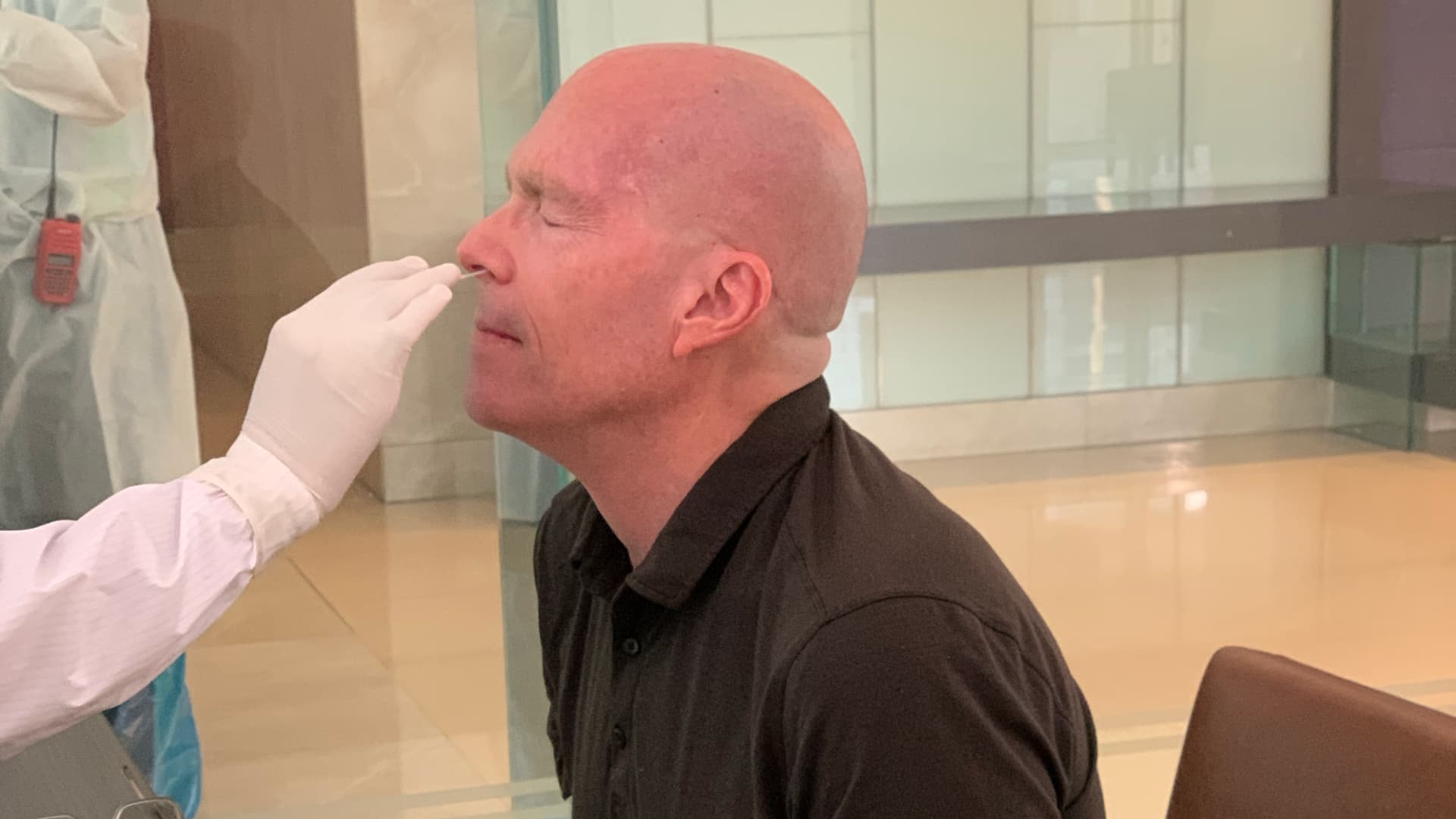
2021–6 Years as a Digital Nomad Lawyer
The last time I updated you on our nomadic existence, we were in Seoul, South Korea, hiding out from Covid. We’re still hiding out, but we’ve developed some (so far adequate) virus avoidance skills. We’ve made it through another year with a bit of luck, a lot of Covid tests, and masks firmly settled on our faces.
Making our lifestyle work under the current circumstances has been challenging, and we’ve had to adapt to protect ourselves and others. Thankfully, we’ve been lucky so far and are alive and well. Sadly, that’s not true for millions of others. We’re cautiously optimistic that this will end at some point, but much of the world is still living under a pretty dark cloud.
We try to make the best of awful situations. That has been true throughout our journey. This adventure has been filled with ups and downs. This year, during the chaos of the pandemic, we lost track of a guy we had been talking with about once a month via Messenger. He’s a tour guide we spent three days getting to know in Axum, Ethiopia—the Tigray Region. Reports of mass killings in the area, simultaneous with his disappearance from social media and complete radio silence on Messenger have left us fearing the worst. We may never know what happened.
It’s hard for us to wrap our brains around the loss of millions from the virus. It’s much easier to imagine soldiers killing 800 people under the giant fig tree in the small village where our friend lives in Ethiopia.
Making light in the darkness
While much of what’s happened over the past year is horrible, it never hurts to look for a bit of humor in every situation, even if it is very dark humor. That led me to wonder about the answer to this question: if you’re flying business class, who cares how long the flight lasts?
It’s an obnoxious question, which I find darkly amusing, but it became our reality for this pandemic year. The pandemic changed lots of things for us, like everyone else. Flying business class seemed safer. I’m sure you understand. It’s not like we wanted to fly up front; it was the pandemic.
In prior years we’d adopted a philosophy of staying put in a geographic region for quite a while, in order to avoid long flights, jet lag, and language adjustments. Most recently that meant spending nearly a year in South America, bopping around between countries.
But the pandemic sent us back to the drawing board, in search of countries keeping the outbreak in check. Quite often that meant a long flight from continent to continent. That’s where the credit card points came in handy, because business class is the only way to fly when the flight stretches from one day to the next, and our fellow passengers might be exhaling a virus.
This past year in a nutshell
We spent an inordinate amount of time consulting Covid data this past year. We tried desperately to stay out of the way of the virus spread. The data showed us our path.
But, even with data, we were rarely comfortable. Airports, even nearly-empty Covid-free airports, were creepy. It was apparent that we wouldn’t get infected waiting at the gate when we were the only people we could see (other than the gate agent, who was wearing full PPE). But it was still creepy: the big empty spaces, the silence, the metal gates drawn down in front of the duty-free stores, and the occasional cleaner spewing chemicals from a sprayer. Empty airports were a potent reminder of the threat—all very disconcerting.
Then, upon arrival in many places, we were quizzed by border police in broken English; every time, we wondered where they might send us if they didn’t let us through the gate. Travel for the past year has not been welcoming, festive, or light-hearted. It has been strange, uncomfortable, and off-putting.
The itinerary
In our minds, our “year” runs from June 23 to June 23. That’s because we started traveling full-time on June 23, 2015, our 25th wedding anniversary. We typically drop back into our old stomping grounds in Raleigh, North Carolina around that date each year, before heading back out.
We didn’t make it to Raleigh in 2020, nor have we been in 2021. We’re waiting a bit before resuming our routine. Maybe I’ll start writing these updates from January to January, since our old approach to tracking time has been broken by Covid—like so many things. We shall see.
Mexico: We started the pandemic back in early 2020 in Playa del Carmen, Mexico. It took us about twenty minutes of reviewing the health care system in that area to realize we didn’t want to be there if the pandemic panned out as predicted. We flew from Playa to Tokyo on the spur of the moment in March of 2020. The business class upgrade didn’t entirely distract us from the pandemic stress of air travel in those early days.
Japan and South Korea: We spent about five weeks in Tokyo before popping over to Seoul, South Korea. South Korea knew how to do a pandemic. They had it down. I could spend an hour telling you how well they managed the virus—it was amazing—and we felt perfectly safe for four months. In retrospect, the South Koreans handled the pandemic better than any other country we visited. They understood, early on, the airborne nature of the virus and implemented filtration, masks, and other interventions. Their tracking and tracing were stunningly efficient, persistent, and transparent. They took a very aggressive stance and it paid off.
We were in Seoul when I wrote my 2020 update. The South Korean government was encouraging domestic travel, so we were able to enjoy some time at the beach in Busan and out on Jeju Island. South Korea has quite a bit to offer and we thoroughly enjoyed our time in the country.
Scotland: As the weather warmed up in Europe, and the virus numbers went down, we flew (business class again) over to Scotland. We knew we could stay out in nature and avoid people up in Orkney and the Shetland Islands. Those islands are spectacular. Walking through the sheep-poop-dotted green grass, along the tall cliffs, looking down at the ocean crashing into the rocks, is pretty amazing.
England: We then headed down to London for three weeks, and it was apparent that the virus was about to make a grand reappearance. We stayed outside and away from people. From our outside tables, looking in through the windows, we could see nothing but packed restaurants filled with diners paying with half-off coupons provided by the government. We hit the road for Germany, a stepping-stone that would enable us to get into Bonaire, a Dutch island in the Caribbean.
Germany: We landed in Frankfurt, rented a car after the border police let us in, and promptly pulled over to a bus stop to open Google maps. Within five minutes we picked a destination and hit the road. After a quick visit to Koblenz, we headed to Dusseldorf. We spent our time there eating outside in the cold and rain of October, while waiting for the clock to tick off two weeks so that we could fly to Bonaire. Again looking through the windows into the full restaurants, we were reminded of London, which had gone to red-alert status right after we departed. It wasn’t much of a surprise when the Covid numbers exploded shortly after our departure from Germany.
Bonaire: We landed in Bonaire in mid-October to warm weather and sunny skies. Bonaire was pretty much the perfect place to weather the storm. The restaurants and all activities were either outside or underwater. While we were on the island there were almost no cases of Covid, although the community had recently lost a beloved doctor to the disease. As a tourist destination with nearly zero other jobs, the island struggled mightily with striking a balance between health and the economy. Our sense was that the virus was slowly going to catch up with Bonaire. We exited to Dubai.
Dubai: Our business class seats to Dubai were on KLM, which, while very nice, isn’t quite as glamorous as Emirates. Nonetheless, we arrived in style in the land of luxury, abundance, and excess. We’ve now visited Dubai a number of times, and have friends there, so our visit was terrific. We enjoyed a Christmas feast outside next to the fountain at the Burj Khalifa, and then watched the building light up for New Year’s Eve. The crowds in Dubai Mall told the story of a coming Covid outbreak. It didn’t require an epidemiologist to know that all those British revelers were bringing their particular form of the virus to the desert.
Bangkok: We were missing something as we jetted from Mexico to Asia to Europe to the Caribbean and back to the Middle East—our eldest kid. He lives in Bangkok and we hadn’t seen him in a very long time because Covid struck at exactly the wrong time in our travels. We’d been planning on a visit when the virus started spreading and everything went into a holding pattern. Thailand was the first country, after China, to experience Covid, so they were tightly locked down. We’d started inquiring about a visa while we were in South Korea, and the responses were all affirmative, with smiles and nodding, yet nothing happened during our visits to the Thai Embassy. The Land of Smiles was closed, even if they didn’t always say so directly.
But while we were on Bonaire, we sensed that the door was beginning to crack open, and it became clear that we could make it into Thailand. After filling out lots of forms and sending several express-mail packages to the Thai Embassy in Washington, we had our visa. Then, the day before we were booked on KLM’s business class flight out of Bonaire, we went out behind the medical clinic to a dirty plastic chair next to the sweltering tropical medical supply dumpster. A nice Dutch nurse came outside with a long q-tip on a wooden stick and jammed it up my nose. It was kind of like business class, but without the beautiful flight attendant, luxurious leather chair, and hot meal.
Whatever was in our noses met with the approval of the Thai authorities. We were admitted to Thailand and promptly sealed into a quarantine hotel by men in blue protective gear. On the way in, of course, our noses were probed again, and then again five days later, and then again seven days later. My nose never saw it coming.
Then we were given our freedom in Thailand, where we spent nearly three months with our kid, visited mostly empty tourist attractions and enjoyed many meals as the only customers in the restaurants. Thailand, like the airports around the world, was empty.
Iceland: Something happened to Lisa’s foot in Thailand. The aerobics she did in quarantine may have been the cause, but it could have been anything. An MRI revealed that her tendon is torn. She was given a fancy boot to wear and told to rest. The medical treatment in Thailand was top notch, but our visa ended, so we flew off to Iceland, which has consistently handled the virus well. Upon arrival we started the journey to find a foot-repair doctor. After waiting nearly a month to see a doctor and get another MRI, Lisa was able to remove the boot. She still has some discomfort, so surgery might be in her future. We would like for her tendon to do the right thing by healing itself, but we’re not particularly optimistic.
More nomad lawyers
Over the years of our traveling, we’ve encountered a few nomad lawyers. They’ve messaged, we’ve talked, and sometimes we’ve met up. But those interactions have been pretty rare. Most of the nomads we meet are software developers, writers, or people who do some kind of online marketing or trading.
But Covid brought out the lawyers. With remote hearings, the kids out of school, and clients adapting to meetings on Zoom, the lawyers were set free and some of them escaped their cages.
I’ve had quite a few calls with lawyers who flew the coop. Lawyers took the opportunity to work from quiet international destinations in the countryside or on the coast, where they had good internet, outdoor dining, and fewer people crowding the environment and spreading the disease.
Some of these lawyers returned home as schools resumed, but some are making the change more permanent. We’ve been pleased to help some folks see that there are so many options.
Lessons learned
All of us have learned more about viruses and pandemics and loss than we ever wanted to know—that’s for sure.
But most of us have learned some positive lessons along the way, as well. For us, there have been too many to list.
One that stands out is the benefit of spontaneity.
We’re planners. We often planned our travel a year in advance, to take advantage of grabbing seats or rooms early so that we could book with points. Planning is great, but it has its drawbacks. Loosening up a little is always a good thing.
At this point, we’re pretty spontaneous. The virus has taught us that booking in advance can be filled with disappointments, refunds caught in bureaucracy, and being unable to stay longer than we planned or leave earlier than we had scheduled. Spontaneity has its benefits.
We’ve taken to booking flights in the taxi on the way to the airport. We’re waiting to book rooms after we get past the border police. Planning has mostly gone out the window. We’re just a small step away from being those people walking through the terminal, seeing the flight to Algiers, and jumping on while we cancel the flight we’d originally booked. We haven’t done that yet, but it could happen.
Maybe we’ll do more planning post-pandemic, but we won’t soon forget the lessons we’ve learned, about spontaneity and lots of other things. The pandemic has been quite an experience, in too many ways to count.
Epilogue: Some good news
My notes to you are written several weeks in advance of publication in order to allow time for my editors to clean things up, fix my mistakes, and make me seem smarter and more capable. It’s a nearly impossible job and I thank them for their work.
During the lag time for this post, several good things have happened, and I figure we can all use all the good news we can get, so I wanted to share.
The really big news for us came in the form of a text message from Ethiopia at 6:05 one morning.
Hello dear Lee.
How are you? Glad to meet you again.
I’m back after 7 months war and Genocide in Aksum, Tigray.”
A sense of relief flooded through me. It was great to know he was alive. We haven’t talked much since his message but I’m sure we’ll continue to communicate and I’ll hear stories.
In other news, the Icelandic government came through and vaccinated us, which was nice of them and another relief for us. It’s good to have that behind us and it opens more doors. With the success of the Icelandic vaccination campaign, the masks have come off here so, again, a relief.
My mother used to say “the sun will come up tomorrow,” and she was right. She’s especially right in Iceland, where sunrise today is at 2:56 AM. Yep, the sun will come up tomorrow. Of course, it mostly won’t go down, since sunset tonight is at 12:04 AM. Brighter days are here, indeed.
Prior Years: Below are my updates for 2016, 2017, 2018, and 2019.

2020–5 Years as a Digital Nomad Lawyer
This year has been different … way different. We’re in South Korea as we pass 1,825 days of living life out of a carry-on bag.
This is our fifth year of full-time travel. From the beginning, this journey has been filled with unexpected bumps in the road. Sometimes a flight is delayed. Maybe a taxi fails to pick us up. With some frequency, we’re served a dish we didn’t realize we’d ordered.
We had planned to be in Tirana, Albania today. That plan evaporated, along with any illusion of control, early in 2020.
Let’s back up for a second
My wife and I have been traveling for five years. We started our journey on our twenty-fifth wedding anniversary–June 23, 2015. We’ve visited more countries than I can count. We’ve met more people than I can remember. We’ve eaten more kinds of food than I even knew existed. And we’ve had more fun than we deserve. It has truly been amazing. We’ve learned a lot and our digital nomad life isn’t always the same as that of some younger digital nomads so be sure to check out 11 truths we’ve discovered for older digital nomads.
In our minds, our “year” runs from June to May. It’s bookended by a return trip to our old home, Raleigh, North Carolina. We drop back into the area to see family and friends, get our teeth cleaned, and get our annual physicals.
A quick review of the past twelve months
Back in May of 2019, after an enjoyable ten days of seeing family and friends, we headed off for a year in Latin America. We’ve figured out that this lifestyle is easier if we focus on a particular region rather than zigzagging all over the planet. Staying in one or two time zones, minimizing long flights, and using fewer languages helps us stay sane-ish.
Peru
We headed down to Peru and ate and ate at some of the world’s best restaurants in Lima and Cusco. We also managed to make our way to the tops of two peaks at Machu Picchu, and enjoyed quite a few weeks just soaking up the Andes scenery.
Bolivia
After nearly two months in Peru, we flew over to Bolivia to see the salt flats and La Paz. Late July is midwinter in Bolivia; we were freezing, and when the snow started falling, that seemed like a good reason to wrap it up and fly away.
Ecuador
We zipped over to Ecuador to see Quito. Then we spent some time on a yacht in the Galápagos Islands, followed by a month in a very tiny Pacific coast town called Puerto Lopez, where we did some whale watching. Ecuador exceeded our expectations on the nature front.
Panama
The continuing chilly weather drove us north to Panama after 7 weeks in Ecuador. The highlight of Panama City was the canal. We were oddly fascinated, and spent a couple of days exploring the locks at both ends and watching ships pass through. Then we flew over to Boquete to enjoy the mountains, followed by a week on a sailboat we chartered in the San Blas Islands, which were both beautiful and warm.
Chile
Once we had thoroughly thawed out in Panama we flew back south to Santiago, Chile, where the air was cooler but the politics were hotter. We had a chance to see the ongoing political protests from a safe distance.
Then we flew down to a small town–Punta Arenas–which was much calmer, until a small group of protesters torched the building immediately next door to our hotel. A massive fire ensued, accompanied by soldiers with water cannons and tear gas. It was quite a show. We quickly headed down to Patagonia where the scenery was calmer and beyond amazing.
Argentina
After three dramatic weeks in Chile, we crossed the border to Argentina where we spent nearly two months. In El Calafate we visited glaciers, in Bariloche we drank beer and hiked in the mountains, and in Buenos Aires we enjoyed the sights, a holiday visit from family, and the beef.
Brazil
Iguazu Falls drew us briefly to Brazil where we stayed inside the national park and woke up each morning to a waterfall that was unlike anything we’d ever seen. Amazing.
Uruguay
Sometimes we need to get some work done. Too many great tourist attractions make it hard to be productive. A month in Montevideo, the capital of Uruguay, proved to be the perfect spot to catch up on work. The city is modern, functional, and convenient. We found great food, nice people, and beautiful waterfront walkways for getting some exercise. A couple of weekend drives gave us a greater appreciation for everything Uruguay has to offer.
Nicaragua, El Salvador, Guatemala
Then we went full tourist and jumped into Central America with both feet. It’s hard to get work done when we’re moving quickly, so we abandoned work mode and embraced holiday thinking. Two weeks on Little Corn Island in Nicaragua, followed by a Pacific beach in El Salvador, and then a quick visit to the Tikal ruins in Guatemala made for a great vacation. There were definitely some pina coladas involved.
Mexico: The wheels started to come off
We arrived in Puebla, Mexico for a week of eating. We’d long wanted to visit the city, and we loved all of the Mexican food we consumed. But at that point (early March), the virus was clearly becoming a thing. Temperature checks in most Central American airports alerted us to what was coming as we arrived in Mexico. Tension was in the air.
Then, just as we checked in at a Hilton Resort in Playa del Carmen, the US announced a travel ban.
The resort was going strong when we arrived but quickly became eerily quiet and a little weird. We’d booked this place because we’d found an amazing deal months earlier. As guests headed for the exits, the pool crew continued to play loud dance music and conduct bikini contests–it was surreal. Social distancing was now a thing, and it was easy at the gigantic, empty resort, but it was uncomfortably bizarre.
The plan, after that week at the resort, was to spend March in Mexico City in an apartment. We were scheduled to leave the resort early Sunday morning. We figured we’d just hole up in the apartment away from other people, but we weren’t so sure about Mexico City.
Our research told us to ride the virus out in a place with hospital beds. The best information said go where there’s solid infrastructure. Mexico City was quickly out.
Tokyo had very few Covid-19 deaths, a huge number of hospital and Intensive Care beds, and was still open to us, as Americans entering from Mexico. We’d considered Hong Kong, Taiwan, and Singapore. They were either closed or closing.
We made the decision at 9:30 PM on Saturday night, and booked a flight to Tokyo. Six hours later we were in the air, bound for Japan on a mostly empty plane. We spent a very long night worrying every time someone coughed.
We headed to infrastructure
After five weeks in Tokyo, still with only a couple of hundred deaths, Japan declared an official state of emergency. Business slowed down fast. The streets got emptier as shops and restaurants closed. Everyone was inside their homes. We were inside our Airbnb. It was clear that Japan was going to shut down tight for at least a while.
Should we stay? Should we go? There were no good answers, and the variables had grown exponentially. We spent a week debating our options.
A quick flight out
And that brings us to Seoul. We jumped on a short flight over to Seoul. The drive to Narita Airport, just outside of Tokyo was fast, with zero traffic. The huge airport was empty–silent. It was disconcerting.
Our flight was mostly empty. We landed in Seoul just two hours after takeoff. Police and soldiers processed us and escorted us to a private bus, and an hour later we were sealed up in a dorm room on a government campus, two hours south of the airport. The fully hazmat-suited quarantine center workers who showed us to our room were the last humans we saw for the two weeks of our mandatory quarantine. Even the three meals that were delivered each day were left by the door for us to retrieve, with zero contact.
So many folks we know have struggled with working from home. We’ve been working from “home” for years. We’re fully functional with a laptop, a mobile phone, and earbuds–no adjustment required.
We’re oddly well suited for the confines of quarantine. When South Korea confined us to that 11 x 11-foot room, we were fine. In fact, that room was bigger than some we’ve had along the way. The constant disinfection of the hallway beyond our door just made us feel more secure (we’ve been in plenty of hotels that could’ve used a bit more disinfection!).
Then, after two weeks, we were released in Seoul.
Freedom. But still, a slightly weird version of freedom. There is very little community transmission in Korea, but our awareness of the virus hasn’t simply disappeared, even in the relative safety of Seoul. We’re still on alert, at some level; the virus is always there, in the back of your mind. Touching a doorknob still doesn’t feel the way it used to feel. I’m guessing you know exactly what I mean.
Going forward
We’ve been pretty flexible for a long time, living as we do. But this virus is requiring flexibility on an entirely new level.
There are safety issues, of course. But there are also moral issues, border issues, quarantines, airline issues, complexities involving transit airports in countries that are prohibiting passage, countless forms, temperature checks, and more. Living this lifestyle just got much more difficult.
As the environment changes, everything is trickier. I’m reminded of the lessons I was taught when getting my pilot’s license. The instructor explained the danger of flying into a blind canyon. If you’re not careful, the plane ends up in pieces on the canyon floor when you discover there’s not sufficient distance to climb over the canyon wall.
It’s easy right now to end up in a country where one can’t legally stay, but from which one can’t easily travel to a place they’d like to go. We could inadvertently end up in a place we don’t want to be, and which leaves us with options we’d rather not choose.
We’re free from our most recent quarantine, but we’re not really free. I suppose this is how it feels to be from most countries in the world where passports aren’t so powerful and money is often tight. It’s good to be reminded of all we take for granted. But I have to admit–it’s an uncomfortable lesson.
Grieving our loss
Looking back on the year, it’s sad how much of it seems like a faint and distant memory, now overshadowed by the virus. So many people, places, meals, and experiences are buried by the crisis taking over our memories. It’ll be interesting to see how it all looks a few years from now when we can see it with some perspective.
Right now it just feels like loss. Some of it is trivial–like how hard it is to see when the mask makes my glasses fog up. Some of it is overwhelming, when we’ve experienced the loss of someone to whom we have a strong connection. It’s difficult to see a silver lining right now.
Going home
So many folks we know are hanging out at home. We have no home. We’re used to that idea, and it has always been a little weird. But it’s definitely weirder right now. We’ve watched as hotels have closed, airlines have shut down, borders have been sealed–it’s an environment that makes one very conscious of the desire to have a secure nest, somewhere in the world.
Some have suggested that we go back to the United States. We might. That might prove to be our only option at some point. But at this stage, it’s a bit challenging to know exactly where home might be. We’re not quite sure where we belong.
People are on their best behavior
I’m sure the loss of control we’re all feeling triggers panic in many. Panic doesn’t always turn out well. People do crazy things when they’re frightened. They get angry. They behave badly.
But that’s not what we’ve observed.
We’re feeling like people around the world are kinder, gentler, more welcoming and open.
Our experience has been one of people reaching across boundaries to help. The quarantine team in South Korea scooped Lisa up when she stumbled. The soldiers at the airport were all kindness. They kept us informed as we were processed, and even though we couldn’t see their smiles, we could see welcoming eyes behind their protective shields. The people helping us in stores, restaurants, taxis, and airports have all been more human than usual. It’s nice to see people, even behind masks, coming together, rather than letting this crisis push us apart.
So what’s next? Where do we go? What do we do now?
We don’t know. Control was always an illusion. Covid-19 just helped us see that a little more clearly.

2019–4 Years as a Digital Nomad Lawyer
“What causes you the most stress?” a friend asked.
It’s an insightful question, asked by a lawyer friend we met up with in Tokyo.
Mostly we get the same questions over and over: What are your favorite places? What’s in your luggage? How do you pick destinations? We’re always happy to answer, but we rarely have to think about what we’re going to say because we give the same responses so often.
The stress question, though–that one stopped us cold. We had to think about the answer.
Only one thing truly stresses us out
The answer, when it popped into my brain, surprised me. But I had it right. When I heard the response come out of my mouth, I knew it was real. I’d actually found the most stressful piece of our lives.
I have to admit that it’s trivial. The reality is that our nomadic lifestyle isn’t particularly stressful. It’s easy compared to our old life in the suburbs, where the air conditioner had to be replaced, the kitchen cabinets were falling apart, and the teenagers might get arrested. Just taking the cat to the veterinarian could trigger a twitch in my left eye as I anticipated the coming invoice. Suburban life requires mad coping skills.
It’s seemingly trivial but it’s actually stressful
Stress is, I suppose, part of life. And if one’s life isn’t particularly stressful, then even the most trivial stressor can generate a negative reaction. I have to confess that I’m slightly embarrassed to admit that this is the most stressful thing happening to us as we keep moving. But here we go:
The biggest source of stress for us at this point is having to show up on time. That’s it. Being punctual is stressful when you don’t have much else creating stress.
I apologize for complaining. But that friend asked, so we answered. And now, for your reading pleasure, I’m going to justify my stress, even if it is objectively trivial.
Being on time is easy for you. It’s hard for me. Seriously.
Being somewhere, at a prescribed hour, is simple when you know the way. It’s straightforward to estimate the time required to get there, park, walk, whatever. You’ve been there, done that, and have a pretty reliable sense of how things work in your area. You move about with ease.
Lost without a clue
But for us, getting nearly anywhere is a new experience. We’ve never been there before, we’re likely to encounter the unexpected, the transit system probably won’t work the way the last one worked, and it’s usually organized in a language we don’t understand.
We’re on an obstacle course and it’s very challenging to predict the specific time at which we’ll cross the finish line.
Of course, technology helps. I can’t even imagine having to do what we do without Google Maps. It saves us nearly every day in one way or another. It’s amazing that we can show up in almost any city and find our way to a hipster coffee shop with a single click. Truly amazing.
But when we’re hunting for coffee and it’s just the two of us, we can arrive when we arrive. There’s no pressure. The only constraint is getting our caffeine fix before it’s so late in the day that we’ll have trouble sleeping that night.
Throw in other people and the stress level rises
When we’ve agreed to meet someone, like our friends in Tokyo, we’ve got a deadline. These appointments are pretty much the only hard deadlines we face. These small events get loaded up with all of the stress we’ve got.
We felt it in Tokyo. We feel it when we’ve got to get to the airport or train station to move on to the next stop (we go really, really early). We felt it when we flew to Berlin to get vaccines at a clinic. Even a restaurant reservation causes a little tension. We’re never quite sure if we’re going to make it on time, and if we’re late, we might have to negotiate in the local language to get ourselves squeezed back into the schedule.
But let’s get real … who cares?
Yeah, that’s our big source of stress at the moment. And realistically, we don’t bump into the issue very often because we don’t have that many meetings. It’s pretty rare for us to have a deadline involving logistical challenges.
Thankfully, we do get to meet friends as we travel. We’ve met quite a few other nomads in the last few years, so we often cross paths with those folks. Sometimes one of our old friends or colleagues from the U.S. happens to show up where we are, and that’s always a real treat for us. A few times a year we get to spend time with friends and family who decide to come to meet us in a particularly interesting destination. We love all of the opportunities we get to connect with people. It’s pretty awesome.
So we’re not complaining about the mild stress of a time commitment. We’re happy to have the chance to get lost, be late, and catch up with the people we get to see. Any stress we feel as the blue dot on the map spins in circles pales in comparison to the joy we get from meeting up with friends, or getting on a plane to explore a new country.
Update on our movements
My last nomad update was written a year ago in Montenegro. Since then we’ve been to Latvia, Lithuania, Norway, Russia, Italy, Lebanon, UAE, Oman, Ethiopia, South Africa, Namibia, Senegal, The Gambia, Morocco, Portugal, and Spain.
Latvia was probably the most eventful stop. We got a speeding ticket, plus we got to ride in an ambulance and Lisa spent the night in a hospital. She’s fine.
We loved the food in Latvia (although not at the hospital), as well as in Russia, Lebanon, Ethiopia, Morocco, and Spain.
We loved the scenery in Norway, Lithuania, Italy, South Africa, and Namibia.
We loved the people in Ethiopia.
The other places are more complicated. It’s not easy to label our impressions of each destination. But each place we visit is a place we’ll never forget.
Now we’re in Peru, where the mountains near Machu Picchu are so beautiful that it feels like I’m cheating when I take a picture. It’s just too easy–iPhone photos shouldn’t be this stunning.
One big change over the past year
If you skim the list of places we’ve been over the course of the past year, you’ll find that we moved quite a bit from as far north as Russia to as far south as South Africa. Even so, we barely changed time zones.
Sure, we moved backward or forward by an hour from time to time, but mostly we stayed in the same general time zone. That made adjusting to traveling easier.
This year (and we think of our years as June to June with a visit back to Raleigh to see family and doctors at the end of May) we’ll stay in South and Central America. Again, we’ll stick to a tight range of time zones.
I’m not quite sure how we happened upon this approach (which likely means Lisa thought of it) but it impacts us in ways other than avoiding jet lag. With shorter trips from one location to the next, we’re able to fly during the daytime, which is easier, and we’re able to book shorter flights. Those shorter flights tend to be less expensive and easier on our creaky bodies. This system has been a big improvement.
I’ve got to stop calling myself a lawyer
These updates started off as year one, year two, etc. as a digital nomad lawyer. But then, I sold my law firm. Now I’m not practicing law, and I’m handling the work here at Rosen Institute full time.
I’m finding it a little difficult to stop calling myself a lawyer. But, it’s time. I guess I’ll change the headline for the fifth year of my nomad reports. Letting go is tough. Being a lawyer is way more, for most of us, than just an occupation. It’s an identity. It’s how we think of ourselves.
Being a lawyer, while traveling the world, worked well for the first three years. The law firm more than supported me and my family. There’s zero reason to think that you can’t make practicing law as a nomad work out for you, if that’s your vision for your life. It’s not nearly as challenging as you might think. I did it. You can too.
But now, I’ve moved on from the day-to-day practice of law. I had a great run. Now, I’m loving this new work and it’s even easier to do while traveling. Yep, it’s time to switch up the identity.
Acceptance of the challenges
There are things–normal things–which become a challenge, depending on where we’re living at the moment. Buying dental floss is rarely easy. Lunch can quickly turn into a comedy, as things I didn’t realize I’d ordered show up at the table. You’d be surprised how often housekeepers open the door as I stand there naked, getting dressed. I know they’re certainly surprised.
But this is just the way we live now. We don’t even think about the fact that we have to use Google Translate on five different toothpaste boxes before making a selection.
There’s an acceptance now; we’ve (mostly) stopped resisting the challenges. I accept that communication is awkward and sometimes difficult. I accept that there won’t always be a power outlet where I’d like. I accept that certain things, like negotiating taxi fares, are an annoying part of my life.
It’s different than living in the suburbs of Raleigh, North Carolina. But it’s what we do, it’s how we live, it’s the choice we’ve made. We love it. If we didn’t, we’d stop.
When will we stop traveling?
We’ve made friends in places I couldn’t have picked out on a map back on the twenty-third day of June in 2015 when we started this life. Even if it’s just a “like” on Facebook, it’s still pretty cool for me to know I have a connection with people around the globe.
The longer we live this life, the more I realize that there are few strangers. There are just many (many!) people we haven’t yet met. We’re always open to meeting someone new. That’s something I didn’t anticipate enjoying quite so much when we set out four years ago.
Of course, in addition to making friends along the way, we love meeting up with old friends as we go. If we’re crossing paths with you, we’d love to get together.
We’ve been on the road for four years now. At this point, this lifestyle is our life. It’s normal for us. When we pass through an airport we’ve been through before, it feels a bit like coming home. It’s just the way we live now, which sounds like it should be weird, but it feels entirely normal. It’s hard to imagine living in one spot. We’re having way too much fun.
I’m pretty sure, assuming our health holds up, that we’ll be living this life when I report in again in June of 2020. There’s no reason for us to stop, and there’s every reason to keep moving forward. We’ll continue exploring the world until something changes. For now, we’ll just keep moving on.

2018–3 Years as a Digital Nomad Lawyer
Sold the house, gave away the stuff, packed a carry-on bag and set off to see the … yada, yada, yada.
You’ve heard the digital nomad story from me and others, and most folks now have some hooks for understanding the lifestyle. We’re three years in and this is my annual update. You can catch up at year one or year two. You can even see us in the digital nomad documentary One Way Ticket.
Feeling at home
At some point in the past year (I have no idea when it happened) I started feeling at home anywhere in the world.
It’s odd, because I’m not generally someone who’s comfortable anywhere. To find myself comfortable everywhere was totally unexpected.
It snuck up on me. I was just sitting in a coffee shop one day, expecting to feel like I always feel–a bit out of my element–and it struck me that I felt like I belonged. It happened in all sorts of places. It happened when I least expected it.
I’m in Luang Prabang, Laos and I feel at home sharing the table with a Chinese couple with whom I share no language. He’s slurping his eggs up with his face down near the plate. I’m eating my toast with jam. He’s drinking tea, I’m drinking coffee. We all smile and nod, not saying a word, and I’m perfectly content.
I’m in Dahab, Egypt and feel at home slapping high fives with the dozen tiny children who follow me for a block each night as I wander back from dinner.
I’m sitting outside, which is actually inside the home of a family in Ubud, Indonesia. We’re sharing a dinner of rice and fish and vegetables. The children and the grandparents can only communicate with me and Lisa with gestures. The husband has great English and his wife has some. I feel at home, even as Lisa inadvertently sits on the mat which turns out to be the dinner table.
I feel at home when the couple across from us stares so hard that I can feel their eyes on my skin. It’s not the first time, it happens frequently, and I’ve grown accustomed to being the subject of curiosity. We smile and nod and we say goodbye to the staring couple when we leave.
I feel at home when the waitress shakes her head “no, no” after I randomly pick something off the menu, since I have no idea what the Korean menu actually says. She points and gesticulates me into a different order and I have a great meal, thanks to her concern.
I feel especially at home on the 19th day of buying a croissant from the same Croatian woman at 7 AM each morning when she finally lets her stern demeanor down and, for the very first time, smiles like she remembers me.
I feel at home when I stumble and fall on the street in Mumbai, cutting my face as my glasses smash into the concrete, and Indian men rush over, scoop me up, dust me off, and help me get moving again toward my hotel.
I feel at home as the young woman stops to help us buy subway tickets and explains the machine. I feel at home as the young man stops to translate the “closed for remodeling sign” on the restaurant door and then walks us three blocks to a place he likes that definitely has something vegetarian for my wife.
I feel at home when the Vietnamese soldier with the big machine gun waves at me to move back, to go the other way, and gives me a forceful look.
I feel at home confronting the Turkish taxi driver who’s ripping us off and who concedes and gives us back our money. I feel at home assaulting the other tourists with conversation in the rooftop bar, when they thought they were going to have a quiet drink at the manager’s happy hour.
I feel at home talking to anyone and posing for pictures with locals, other tourists, and hotel staff who want a record of our time together. We always make sure to get a picture on our camera too.
Feeling at home in the world wasn’t something I expected. It wasn’t something I aspired to feel. I didn’t know it was a thing. It just happened, and it’s wonderful. I’m still surprised when I realize that I feel like I belong, in a place where I clearly don’t belong.
It took a long time, I had no idea it was coming, I’m not sure I’ll feel this way in the next place we go, and I’m not sure I’ll feel this way forever. But for now, I feel at home wherever I am: anywhere in the world.
The stress is way down
Living this lifestyle did, for a long time, create some stress.
Early on, Lisa and I came to an informal agreement to keep our conversation to a minimum on travel days. That was especially important during our packing and departure. We knew that the less we talked, the less chance there was of an argument.
Recently, though, we’re talking more on travel days, because neither of us is nearly as stressed as we once were during transitions. I think we both realize that things will work out, even if there are unexpected glitches.
The airport in Yangon, Myanmar turned the stress tide. Before that flight from Yangon to Bagan, we always assumed the biggest problems would be of our making. We used to worry about arriving late, going to the wrong terminal, or failing to print our boarding pass.
When we arrived at the airport in Yangon we couldn’t find the airline desk for the airline that had sold us our tickets.
In fact, the airline named on the boarding pass, which we had printed out, just to be on the safe side, did not exist. No one had heard of the airline. It wasn’t in the airport because it wasn’t an actual airline.
What happened? Everyone agreed that our airline was not an actual airline. One of the other airlines gave us new boarding passes for their flight and we got on the plane about an hour later than we had originally expected to depart. How much did it cost? Nothing. They just took us without issue.
These sorts of things have happened regularly. One airline insisted that we present the credit card we had used to buy the tickets, which I had canceled and thrown away in the interim. The supervisor put us on the plane anyway, without the card. On many occasions we’ve been late for connecting flights–the airlines nearly always make sure we make the connection.
If all the travel fears we used to have actually turned into reality, the airports would be filled with stranded passengers every night. They’re not. Things work out, most of the time, for nearly everyone.
It took us a while, but we’ve stopped worrying about travel. We have always ended up getting where we’re going, finding the hotel or apartment, getting the visa issue fixed, finding someone to help us get the SIM card, or finding a different taxi to take us where we actually needed to go.
It’s so freaking easy that it’s embarrassing sometimes
We live somewhere new every few weeks, sometimes even every few days. We work remotely. We stay in hotels and Airbnbs. It’s not rocket science. It’s not hard. It’s not more expensive than living in your average American ‘burb.
To be honest, being a digital nomad is ridiculously easy. A monkey could do it–a monkey with a carry-on. We constantly have people tell us how amazing it is that we’ve figured out how to do what we’re doing.
We love the attention and the flattery, but seriously–this is easy, embarrassingly easy.
I get up many mornings and head to the hotel breakfast room to eat my included breakfast. The fruit has been sliced for me, usually there’s an omelet station, and I don’t have to wash the dishes. Then I find somewhere to work–a coffee shop or coworking space–and someone comes in and cleans our hotel room while we’re out.
We Uber to a late lunch in a nice restaurant and then go for a walk or do a tourist thing like a museum or a park.
This is easy, easy, easy. We don’t deserve any credit or praise for what we’re doing.
If this lifestyle is of interest to you, then don’t be put off by imagining it as challenging. The tough decisions I used to make–like which HVAC system to buy when our $7,000 unit broke or how to pay for new kitchen cabinets and countertops–have been replaced by decisions like whether we’d prefer the beach in Sri Lanka over the one in Mozambique.
Our lifestyle isn’t for everyone
I used to think this lifestyle made sense for everyone. It took me a while to get out of my own head and into the heads of others on this topic. Obviously, lots of people wouldn’t like living the way we live.
We both happen to have a high need for novelty, as well as tolerance for uncertainty. We cope well with minimal connection to the people surrounding us. Sometimes we form relationships with the people we meet, but sometimes that doesn’t happen. It’s just the two of us.
Our personalities make this lifestyle work for us. Others would find it unsettling, disruptive, and disconcerting. It’s a vacation from which one never goes home. For many folks, the going-home part is one of the best parts. I used to love getting home after a trip and I remember that feeling well. What we do now feels very different.
We lose some things by traveling so much. We don’t see our family as often as we’d like. We don’t have the same community connection as we did in the past. We aren’t able to rely on routine to refine the easy way to get things done. Yep, we miss out on some stuff, but we’re not complaining. We could settle back into a home in an instant if we made that choice. This lifestyle fits our psychology. It works for us, but it truly isn’t the right choice for many others. Life is pluses and minuses, no matter which path you follow.
What’s happened since my last update?
We spent last summer in Europe. We visited Hungary, Poland, Croatia, and Georgia.
Then the temperature started to drop in Europe so we headed to Asia.
We spent time in India, Sri Lanka, Thailand, Indonesia, Malaysia, South Korea, Japan, and China and flew to the US in early May for three weeks, for a visit with family, a little business, and many medical checkups.
Now we’re back in Europe. We just wrapped up a month in Montenegro and today we’re flying to Riga, Latvia.
As we move along and pass through places, life keeps happening. Three things have marked this year for us in addition to the destinations–one business, one family, one health.
Our business: If you’re a regular reader then you know that I sold the law firm back in October. That was a huge event for me. I’d been running the law firm remotely for a decade. I didn’t sell the firm as a result of our traveling schedule, but it sure does make the time zones easier when I don’t have to return calls. The travel had zero impact on the firm, but running a law firm, as you know, is stressful. Having that behind me is awesome.
Our family: One of our kids is a rising senior in college, having transferred schools last summer. We’re now counting down the days to graduation. This third year of living nomadically has involved lots of discussion about the kid’s adjustment to the new school and, now, the final steps toward graduation. Thankfully, it has all gone well, but it has also involved many moving parts and transitions. It feels a little odd to sit down to lunch on a pier in Baosici, Montenegro and chat about the kid’s question about getting new tires on the car, but that’s what has to happen when one lives the way we’re living.
Our health: We both gained weight for the first two years of traveling. That’s not something I can afford to do with my history of heart disease. I’ve got to maintain my weight in order to stay alive. Our habit of eating in restaurants doesn’t make that easy, but it’s hard to do otherwise in each new place.
About a year ago I stopped eating dinner. I shifted from three meals per day to two. It worked. I dropped weight steadily from the first week and have continued to trend down without gaining any of the weight back. Apparently eating less causes one to weigh less–who knew?
After about a month Lisa joined me on this new plan and it worked for her as well. There is, of course, the endless debate about the right way to maintain weight. I’m no expert, but eating less is working for us so we’ll keep doing it. We don’t want to have to start purchasing extra seats for ourselves every time we fly.
What’s next?
Now that we’ve gained some understanding of the flow of a year of travel, we’ve been planning loosely in one-year increments. We’re book-ending our years with a visit to Raleigh each May to see family, friends, and doctors.
We have the entirety of the coming year broadly planned and are slowly acquiring plane tickets as we have the option to use our accumulated points. We’re usually able to find the best free business-class seats if we book eleven months in advance.
The coming year includes Latvia, where we arrive today. Then we’ll visit Lithuania, Norway, Moscow and Saint Petersburg in Russia, and then we’ll fly to Italy and spend time in Rome and Sicily.
We leave Europe in October to visit Beirut, Dubai, and Salalah, Oman before heading down to Ethiopia.
We’ll spend the rest of our year in Africa visiting South Africa, Namibia, Senegal, and Morocco before heading back to the US for a couple of weeks in May. Hopefully, we’ll be attending a graduation while we’re in America.
What else is next? It’s hard to say, as predicting the larger pattern when living this way is difficult. It’s rarely the broad strokes I remember, anyway. It’s the little things that stick in my mind and change me as we move through the world.
I’ll never forget walking silently along the path in Auschwitz with a group of tourists. No one was speaking as we all took it in. The only sound was the soft crunching of our shoes on the gravel as we walked toward the incinerators. Then a train whistle sounded in the distance. It was eerily unforgettable.
I’ll never forget the crumpled, legless man sliding along the pavement in the train station in India, using his hands to propel himself slowly. He reached out and touched my leg as I bought myself a drink. I pulled away reflexively. I’m still uncertain how to process that memory.
I’ll never forget the music flowing up from the courtyard below our apartment in Tbilisi as the Georgian men harmonized their polyphonic singing, a cappella. It felt as if the sound drifted through our window like smoke. It lifted us up as we peered down through the glass, listening as they sang late into the night.
We’ll have to wait and see what’s next. Something unexpected will happen and we’ll be ready to take it on, take it in, and enjoy it when it comes. Year four is underway and we’re all in.

2017 – 2 Years as a Digital Nomad Lawyer
The nest was empty. Our second child had graduated from high school three days earlier. The apartment was cleaned out. We were ready to hit the road for parts unknown.
We had no plan to return.
This was the beginning of our digital nomad life. It was our 25th wedding anniversary.
We had traveled quite a bit in our lives, but June 23, 2015 marked a new beginning.
We trimmed our belongings down to what would fit into carry-on bags. There would be no coming home this time, because we no longer had a home to come to. We untethered ourselves from any place in the world. Honestly, it felt a little weird.
Two years later, that weirdness has passed. We’ve grown accustomed to being untethered. We drift often, and we like it.
Sometimes, on travel days, when we’re between two places and literally homeless, we get a feeling of weightlessness. Our few possessions are with us. We haven’t found a place to sleep yet. We’re in space. That’s when we feel the most disconnected from the world. That feeling has become comfortable now.
Over the course of the past year, we’ve spent time in Ireland and Scotland. I went to America to conduct some workshops while Lisa took our younger kid to France. We reunited in Thailand and then spent months in Myanmar, Laos, Malaysia, Singapore, and Vietnam.
When the weather heated up in Southeast Asia, we headed to Jordan and then up to Lithuania, Belarus, and Hungary. We’re in Budapest now.
I won’t re-report on my first year. Go back and catch up if you’re new. Today, I’ll plunge forward and clue you in on my life over the past year.
On this second anniversary, I’d like to share some observations. They aren’t particularly well connected to one another. They’re just the things I’ve noticed as we have moved through time and place.
It’s Not About the Stuff
Before we initially left home, I was obsessed with the material goods of travel. I read blogs, reviewed products, and ordered lots of stuff from Amazon.
I did a lot of thinking about traveling, but all that thought turned out to have little to do with actually traveling. Thinking and doing are not the same.
During the years before we left, we spent a lot of time planning. I used much of that time to identify problems and buy solutions. I like buying stuff, so this method of planning was perfect for me.
I bought travel clothes from TravelSmith. I wanted to be sure I had the right pants and underwear for quick washing in the sink, for escaping bandits, or whatever.
I bought SCOTTeVEST jackets with dozens of pockets so I could store my gadgets, sunglasses, and hats.
Since I would only own one pair of shoes, I tested countless styles to find the one that would work in every setting.
I experimented with backpacks in a quest to find one with the perfect ratio of features to weight without sacrificing style.
None of that made any difference. My preparation was pointless. I no longer own anything from TravelSmith. I got rid of the stuff I put in the SCOTTeVEST pockets and then jettisoned the jacket.
I wear whatever sneakers I can buy in my size when my old pair wears out. (I just move quickly through the fancy restaurants and put my feet under the table before anyone notices.)
I ditched the backpack and bought a rolling bag after watching my wife traverse airports without sweating.
What I’ve learned is that my stuff isn’t important. The stuff doesn’t make a difference. I assumed it would matter, but once I left, I realized that specific jackets or shoes or underwear just aren’t the key to anything.
Planning and thinking about all that stuff before I left was a good way to enjoy anticipation. Anticipation is awesome, but my wife and I are beyond that. I’m in the middle of my adventure, so I don’t need any tricks to help me enjoy it.
When you’re traveling full time, you do think about stuff, but in a practical way. For instance, when we were in Ireland, I needed waterproof shoes. I didn’t think about it. I walked into a store, bought the first pair that fit, and asked the salesperson to dispose of my old shoes. Done. I walked in wet, walked out dry, and the adventure continued.
I Learned Every Foreign Language
We were having lunch in a restaurant in Mexico when our companion taught me something seemingly trivial that changed everything.
We had been seated and were considering the menu. The waitress approached and said something in Spanish.
I panicked.
“What did she say?” I asked my well-traveled, Spanish-speaking companion.
He looked at me and responded with a question: “What do you think she said?”
I was blank. I had no idea what she had said. I didn’t speak Spanish.
Our friend explained that the waitress had asked for our order. He walked me through the situation, and we examined it carefully. Without the stress of a foreign language coming at me, I was able to see the encounter more clearly.
We had been seated and handed menus. We had studied the menus and put them down. The waitress came to take our order. She was doing exactly what servers do. It’s a ritual. It gets repeated at restaurants all over the world countless times per day.
The context revealed everything once I stopped being stressed by the barrage of Spanish. She wanted to take my order. If she had said it in English, I wouldn’t have even heard it or paid attention. I’d have understood her request without even listening, thanks to the context and familiarity.
My anxiety about my lack of language skills created communication barriers. As I worried less, I understood more. It’s like magic.
Now, when I approach the bakery counter and the guy asks what I want in Greek (I guess that’s what he asked; he could have told me that my fly is down), I just point, and he serves the delicious pastry.
When I need to pee, I stand up in the restaurant and look around quizzically, and the server points me toward the restroom. When I want to pay the bill, I gesture and she takes my credit card. She says “thank you,” I assume.
Language barriers are diminished substantially once we relax. Context gives us plenty of information in most cases. Google Translate takes care of the rest (more or less).
I said it was trivial, right? It really is trivial. But for me, it changed everything. It allowed me to relax. This realization reduced my stress level dramatically.
Yet I Barely Communicate
Understanding context and relaxing has helped tremendously, but the language barrier I experience as I travel remains frustrating.
Language isn’t a problem in most respects. Over the past two years, I’ve mastered the art of wordlessly ordering food and buying deodorant, toothpaste, and dental floss. We can even get our laundry done with only a few words.
(Interestingly, I think we spend more time figuring out laundry than we spend deciding where to go next. I hadn’t ever considered how much time the 7 billion people on this planet spend on laundry. It’s considerable.)
But the language barrier is a problem when it comes to relationships with new people. Lack of a common language makes it harder for us to get to know most of the people we meet.
We’ve created amazing connections with people who speak English. These relationships are intense, powerful, and sometimes shockingly deep. Our lifestyle results in a different kind of relationship than we experienced in our old, static lifestyle. It’s not better or worse; it’s just different.
We’re staying in touch with folks in Italy, Ireland, Malaysia, England, Vietnam, Mexico, Germany, Thailand, and other countries. But all of these people speak English. We aren’t able to get to know people who speak other languages.
Sure, Lisa speaks a little French, and she’s good with words in other languages. But realistically, neither of us can have a real conversation in anything other than English.
It’s sad because we have such amazing experiences with other English speakers. We realize what we’re missing with non-English speakers. We’ve come to understand how little we understand about them, their lives, their perspectives, and their feelings.
The more we travel, the more we realize how little we know. We’d love to learn more, but it’s difficult.
Of course, we could watch an episode of Anthony Bourdain and learn something about a place. But real learning—the life of the people, their dreams, their wishes for their children, their hopes for how their politicians will behave, their feelings about their neighbors, the special places they want to take us, and the insider tips on local food—all come from conversation.
We’re extremely happy when we get a chance to know people in a new place. It’s like going from watching a movie on an iPhone to seeing it in IMAX. Building relationships changes everything.
It’s incredibly sad to know now how much we’re missing because we can’t speak their language and they can’t speak ours.
The relationships we build with English speakers are sometimes so powerful and overwhelming that tears well up in my eyes when we leave. It’s often hard to leave our new friends behind.
Sometimes There Is Sadness
The connections we build with people and places can be so strong that it’s hard to say goodbye. The feelings sometimes make it hard to continue our nomadic lifestyle. We often miss people before we’ve left. We’ve become experienced at missing new friends.
Before it happens, we know how it’ll feel when we go. Anticipating our final day is hard when it happens nearly every month.
We don’t talk much on transition days. The hard deadline of a takeoff time creates stress. We move through the routine silently so as to avoid any disagreement. We’ve learned the hard way that we’re better off doing what needs to be done without discussing it. We can talk once we’re on the plane.
In the first year, the stress of transition was about logistics. Getting through packing, traveling to the airport, and boarding the plane usually presented some unexpected challenges. That’s not the situation now. We’re pretty good at navigating each step of the way without angst.
Our silence today is different. It’s less about stress and more about loss. We grieve for the loss of the relationships and the familiarity of the place. Sure, it’s balanced by the excitement of what’s coming, but the sense of loss hangs over us. It’s like the last day of high school or the end of summer camp. There’s a wistfulness that fills the air around us.
The people we get to know take on a larger-than-life role. They become the representatives of their country for us. They embody all of the people of that place. They are the country. Oddly, and somewhat frighteningly, we become our country for them. We are a larger, more real American presence than any anonymous ambassador they’ll never meet. We speak on behalf of our people for them in the same way they do for us. It adds to the powerful nature of our conversations.
Our conversations with people vary widely from the deeply personal to stiltedly diplomatic where every word is important.
We’re proud enough of our nation that we hesitate to express our own opinion without adding the opinions of our fellow Americans. It’s a balance we impose on ourselves because we see the people across the table trying to understand all Americans by listening to just us.
The conversations and the relationships formed through them are an increasingly important part of why we continue to live this way. It didn’t start out this way, but that’s been a big part of this second year.
No Plans to Stop
We get lots of questions whenever we meet new people. I get many questions from other lawyers contemplating this lifestyle. One of the frequent questions is “When will you stop?”
We have no plans to stop. We love what we’re doing. If anything, we’re more excited about our lifestyle than we were before the transition. Our comfort level has increased along with our competence and confidence. The momentum propelling us forward gets ever stronger.
Many people ask us about our favorite places. Truth be told, we haven’t been anywhere we didn’t enjoy. Traveling full time is different from being on vacation. Short holidays require prioritizing and ranking activities. We all want to use our time wisely when it’s limited. Traveling without end and actually living in these places lets us enjoy destinations others might not experience over a quick holiday.
But we’ve had special experiences in certain places. Interestingly, they’re not always the places you would expect.
We’ve visited some of these special places because of advice we received along the way. These spots aren’t places we’d have gone otherwise. Knowing that we’re going to learn about something unexpected makes planning difficult.
We like having some structure, but we also want to leave some space for spontaneity. We’re certain now that people we meet are going to insist that we visit their special places, and we know we’d regret skipping them.
Two years ago, I assumed we’d check off places and watch our list shrink. That’s not the way it’s working out. The great people we meet are always suggesting more destinations. Our travel list is growing longer and longer.
The late Susan Sontag said it best:
“I haven’t been everywhere, but it’s on my list.”
That’s why we have no plans to stop.

2016 – Digital Nomad Life After One Year
I’m running my practice remotely. I don’t go to the office. If you’re a regular reader, then you already know that I do it from the road.
Over the course of the last year, I’ve done my work in Berlin, Edinburgh, London, Lisbon, and the middle of the Atlantic Ocean on a cruise ship.
I’ve worked from Miami Beach, Las Vegas, and Denver as well as Hong Kong, Siem Reap, and Phnom Penh. We got quite a bit done while spending a few months in Vietnam visiting Ho Chi Minh City, Mui Ne, Da Lat, Hoi An, and Hue.
Most recently, we’ve been in Turkey, moving from Antalya to Kas to Istanbul.
Now, 365 days in, we’re in Verona, Italy.
We’ve moved quite a bit over the course of the year. We were warned that moving too fast might result in travel burnout. We decided that we’d risk it, and that we’d take more downtime if we felt like we were reaching our limit.
We’re likely to slow down a bit going forward. We’ve discovered that more time in one place is better than less. Time gives us the opportunity to settle into a routine and get to know the local people and services better. We enjoy a place more when we invest more in figuring it out. But we’re not locked into any particular plan or schedule. We’ll keep experimenting, and we’ll see how it goes.
We’re leaving Italy in a few days and heading to Ireland. One of our kids is doing an internship in Dublin, so we’ll visit and then head off to the countryside. We’re sticking around Ireland until early September. Then we’ll head over to Scotland for a month, after which I’ll visit America for a few workshops. Then it’s back to Southeast Asia for four or five months, followed by Jordan.
Below, I’ll answer some of the most frequent questions I’m getting about our lifestyle:
How’s It Going?
Working remotely isn’t new for me. I’ve been working from home and coffee shops since 2008. I like it. For me, adding travel to the mix has made it even more interesting and fun. I love taking walks in new places, and using our weekends to see local sights is an amazing opportunity. Having new neighbors all the time keeps it all fresh, new, and interesting.
How Is the Business Coping?
The business worked well with my remote work for a long time before I left the country. It continues to go well and grow. The biggest issue with “coping” has been time zones. For instance, when I’m in Asia, it’s hard to schedule voice calls, due to the extreme time difference. On the other hand, working without interruption results in more productivity.
Is It Like Vacation All the Time?
Sometimes yes, and sometimes no. We pick good spots, and, during our time away from work, there are awesome opportunities for exploring and adventure. We often have great views and great restaurants. But sometimes, it’s just head down, earbuds in, cranking away on the work. There are days when I have to stay focused and push onward in the face of a deadline. Those days don’t feel like a vacation. It’s just work in a different place.
Is It Stressful?
Sometimes, yes. It’s hard to maintain systems and routines when the setting keeps changing. That’s both a benefit and a detriment. It’s especially challenging when something goes wrong. Getting sick, dealing with unexpected stress or upset, or having a crisis of any sort is harder when you lack a routine to get you through the day. On those occasions, the stress level gets high, and it’s easy to miss the comfort of “home.”
Where’s Your Stuff? Do You Have a Home Base?
We sold most everything. We’ve got two banker’s boxes in storage in New York for our winter clothes and some mementos. We don’t have a base. Everything else that we own fits in our carry-on bags.
How’s the Technology?
The technology is pretty good. I’ve got everything working really well from anywhere, so long as I can get decent Internet. We’ve been in a couple of places where the Internet was incredibly frustrating, but we’ve overcome the issues by tethering off phones, finding better co-working spaces or cafes, or batching the work in some way that avoided the bad connection. We’ve found shockingly good connections in the weirdest places and shockingly bad connections in places you’d think would be speedy. But the connections are mostly fast, even in places off the beaten path.
How’s the Budget?
Shockingly, it’s great. We’re spending less now than we did living in Raleigh, North Carolina. In Southeast Asia, we mostly stayed in hotels. That area is known for being inexpensive. In Europe, we’ve stayed in apartments rented through Airbnb. Most of us think of travel as expensive. I think it’s expensive because we have very little flexibility, tend to go to popular destinations, and are forced—due to our schedule—to book expensive hotels. Lisa and I have been able to mostly take short, inexpensive flights on a flexible schedule, which reduces the price. Also, many of our flights have been free as a result of my interest in the points-and-miles hobby. We’re also getting long-stay discounts on housing. Most significantly, we’re not hanging out in places where prices are driven up by the popularity of the destination.
How Does It Feel?
Mostly, it’s a blast. I’m in my element bopping between places and cultures. I never tire of the novelty. I’d give it two thumbs up, with only a few qualifiers. Two issues come to mind.
- The biggest downside for me is having less control over work. When something comes off the rails, I feel less able to fix it. Between the distance, the time zones, and the technology, there’s a disconnect that makes it hard to repair a situation immediately. I have to talk myself through being comfortable with the speed of getting things back on track.
- The other issue for me is that it’s harder to read people when you’re 10,000 miles away. Misreading people can make bad problems worse. I can’t always detect subtle emotional cues in employees, vendors, and advisors when we’re on videoconference instead of sitting across from one another. That’s challenging, and sometimes results in miscommunication growing into upset.
Having Any Second Thoughts?
Nope. We’re still loving our adventure and plan to keep on rolling. If you’d like to come along, please follow me on Facebook and Instagram, where I post regular updates and pictures.
Anything Unexpected Happen So Far?
Most every day, there’s something unexpected, whether it’s the police in riot gear surrounding protestors, having dinner with a guy who turned out to be a Google Ventures partner, or meeting someone who hooks us up with “her guy” who finds us an apartment in a magical city we’d never heard of before. There were the hours we spent talking to the guy who saw most of his family killed by the Khmer Rouge, and the chicken that attacked me in the street. Something unexpected happens before lunch most days.
Any Plans to Settle Back Into a Non-Nomadic Existence?
Nope. It’s going well, we’re having fun, and we’re getting our work done. We’ll keep going so long as those conditions continue.


